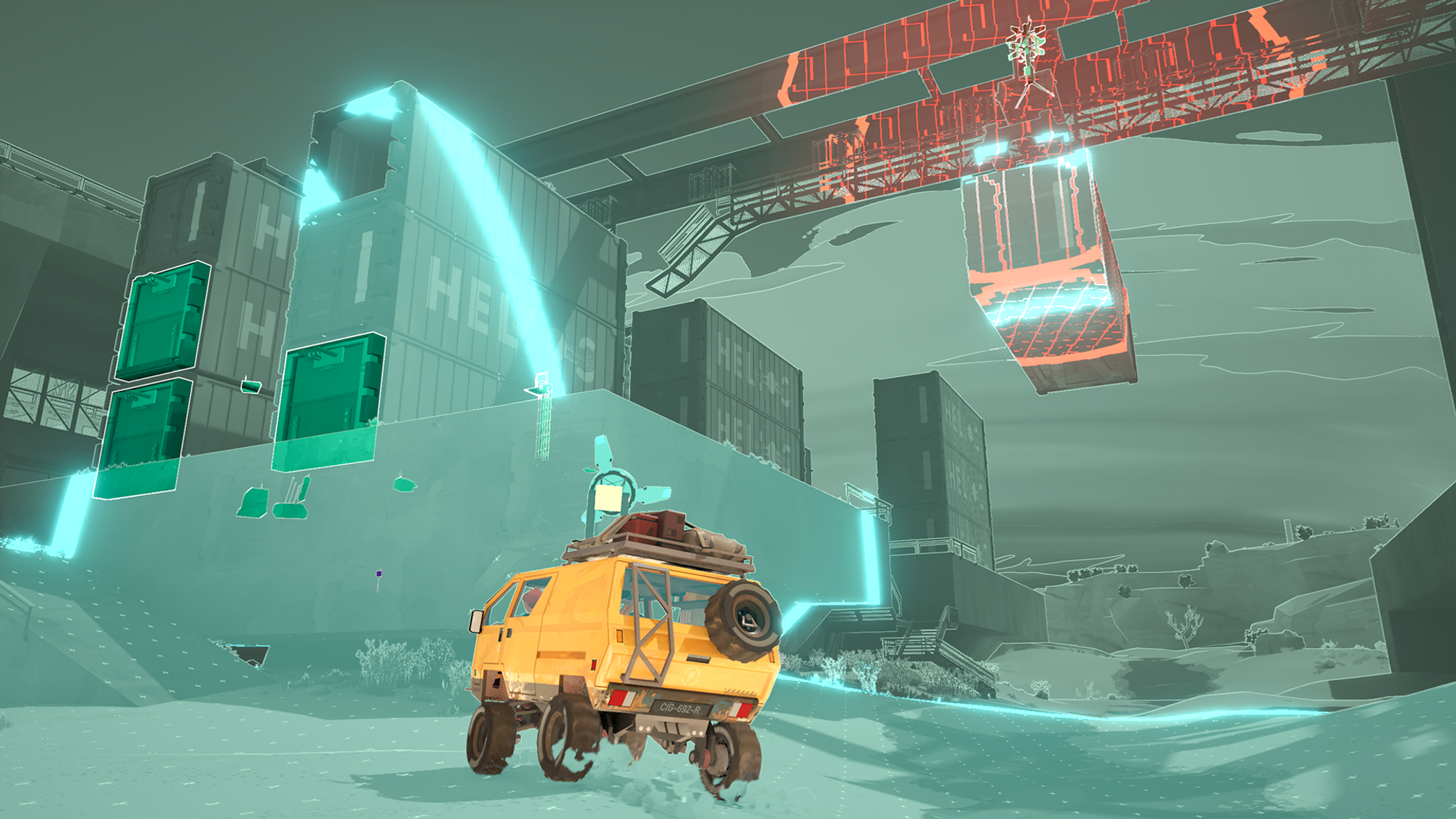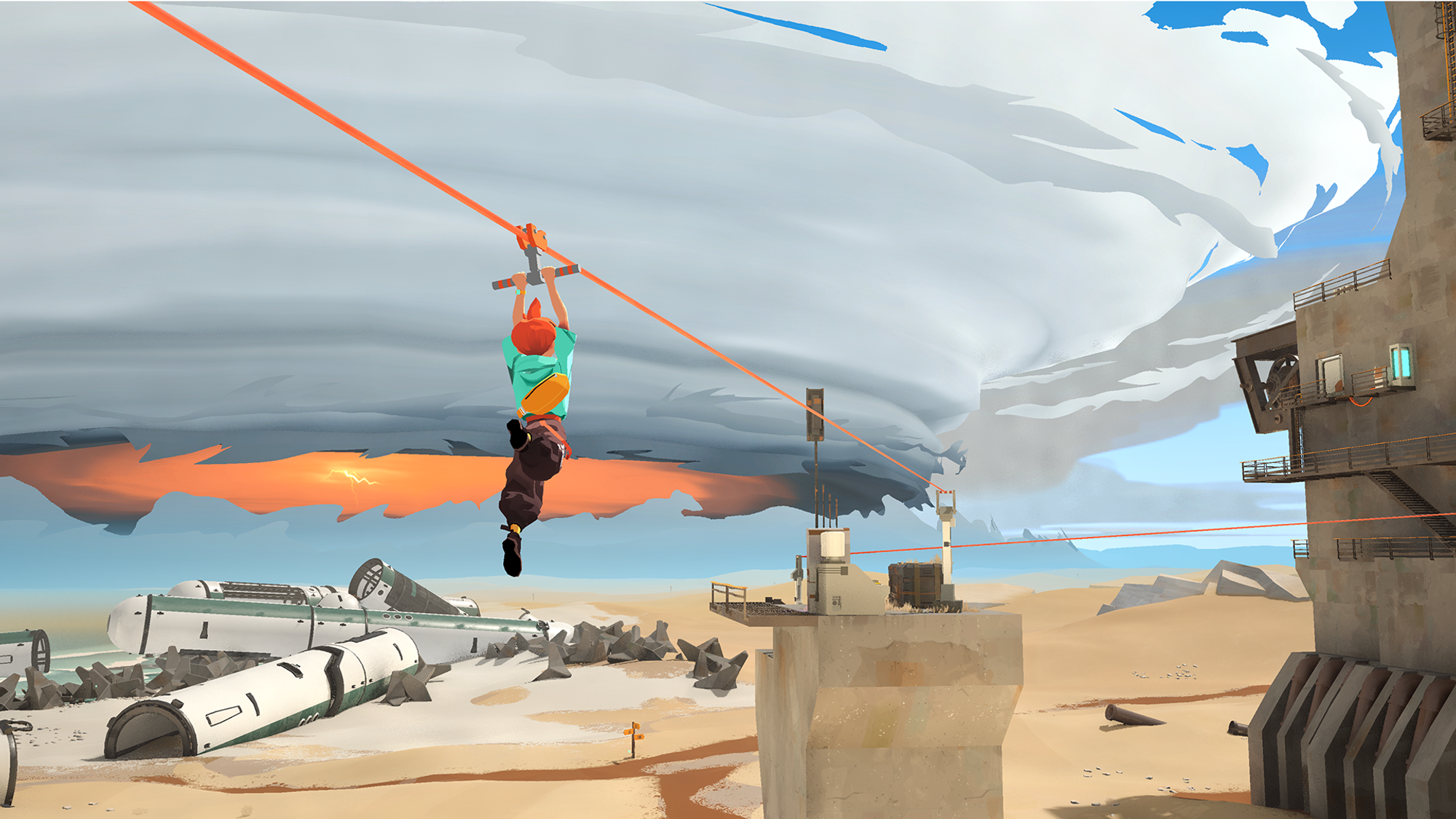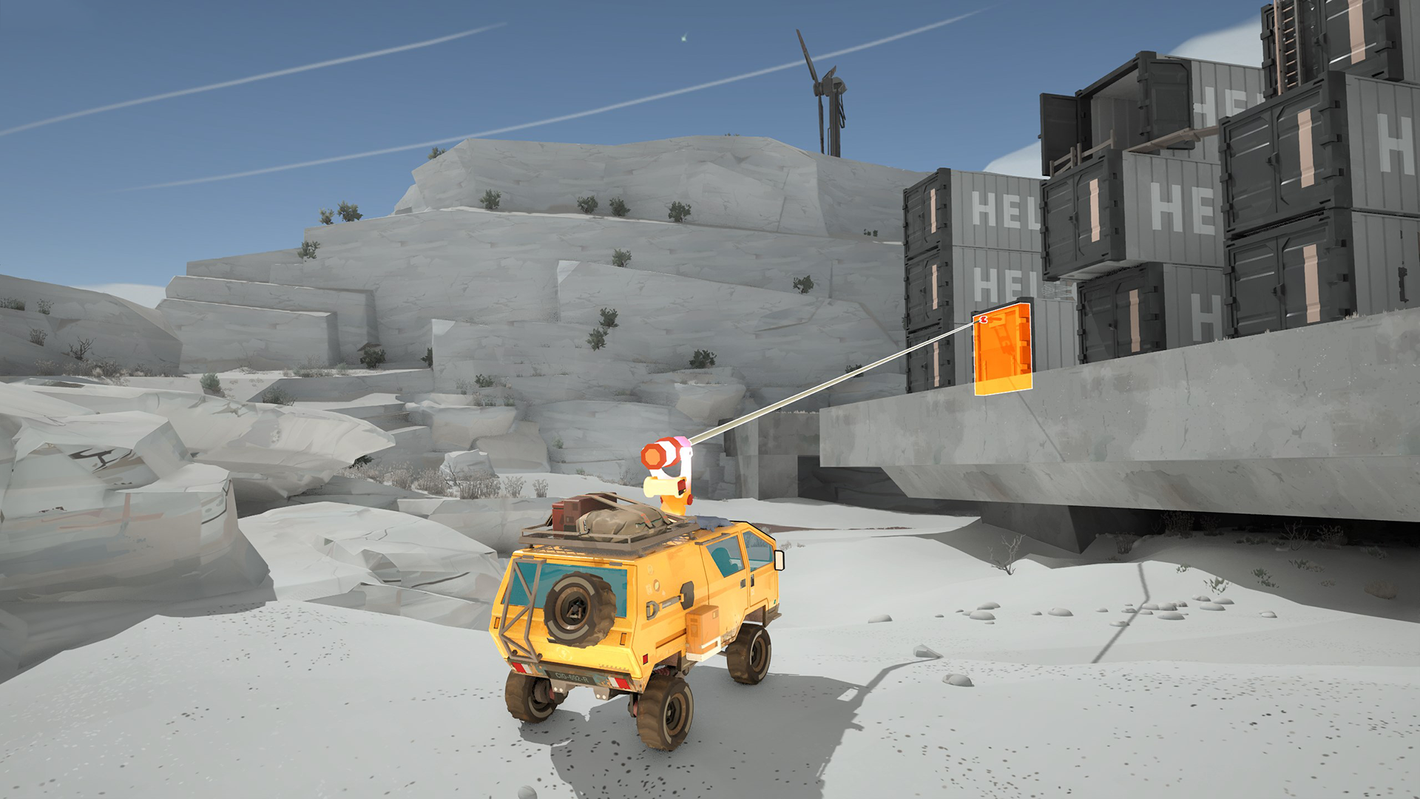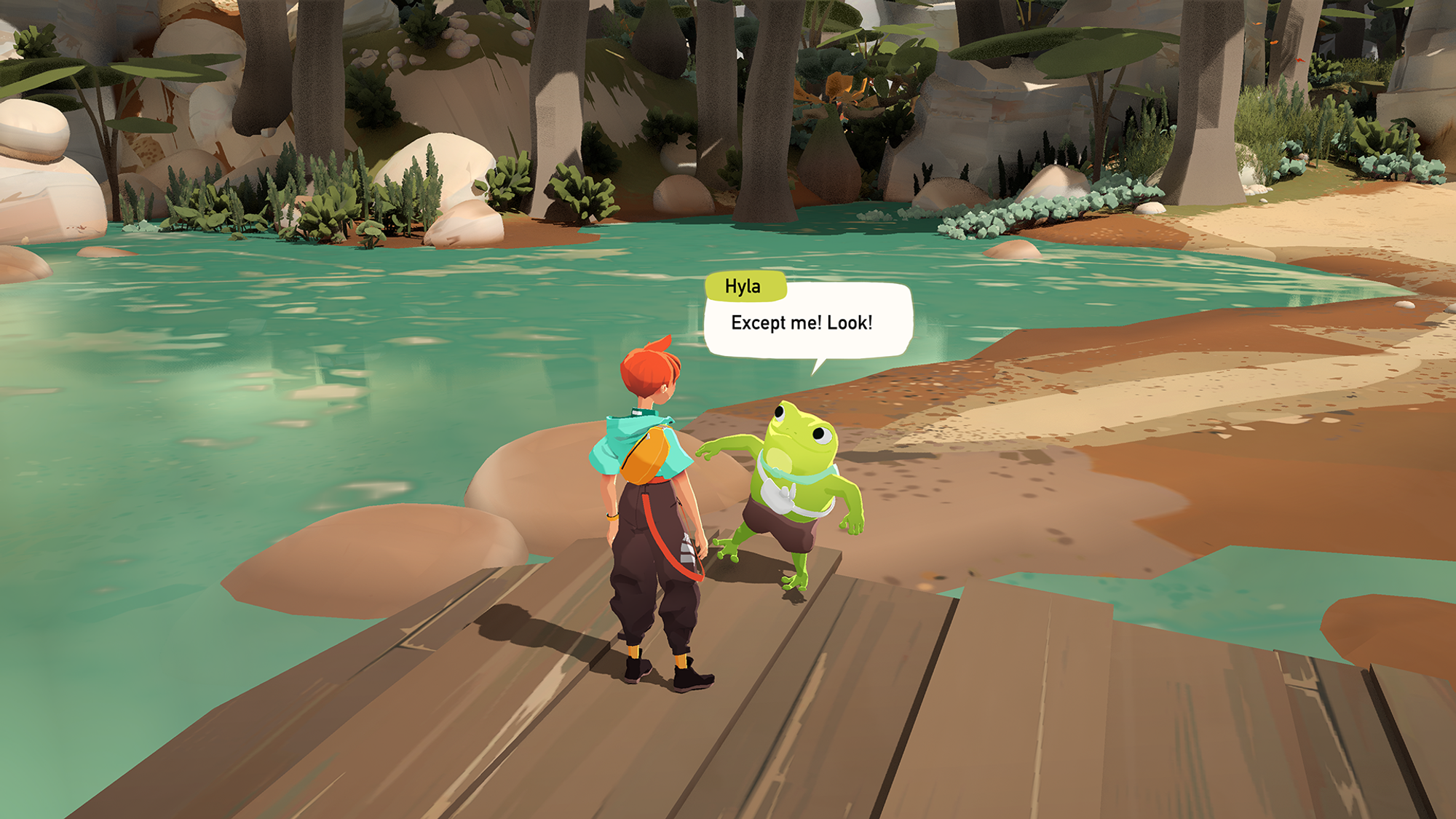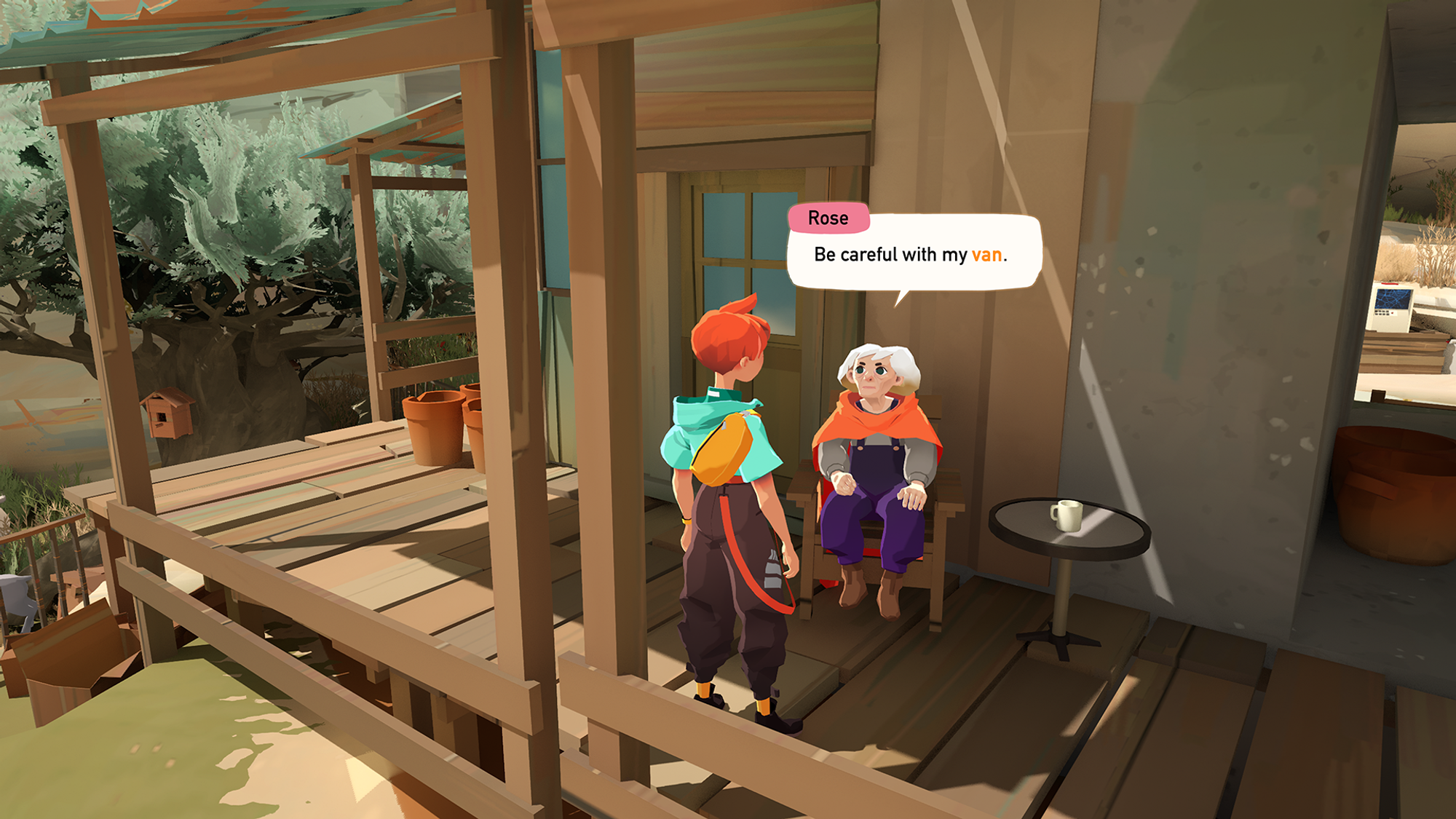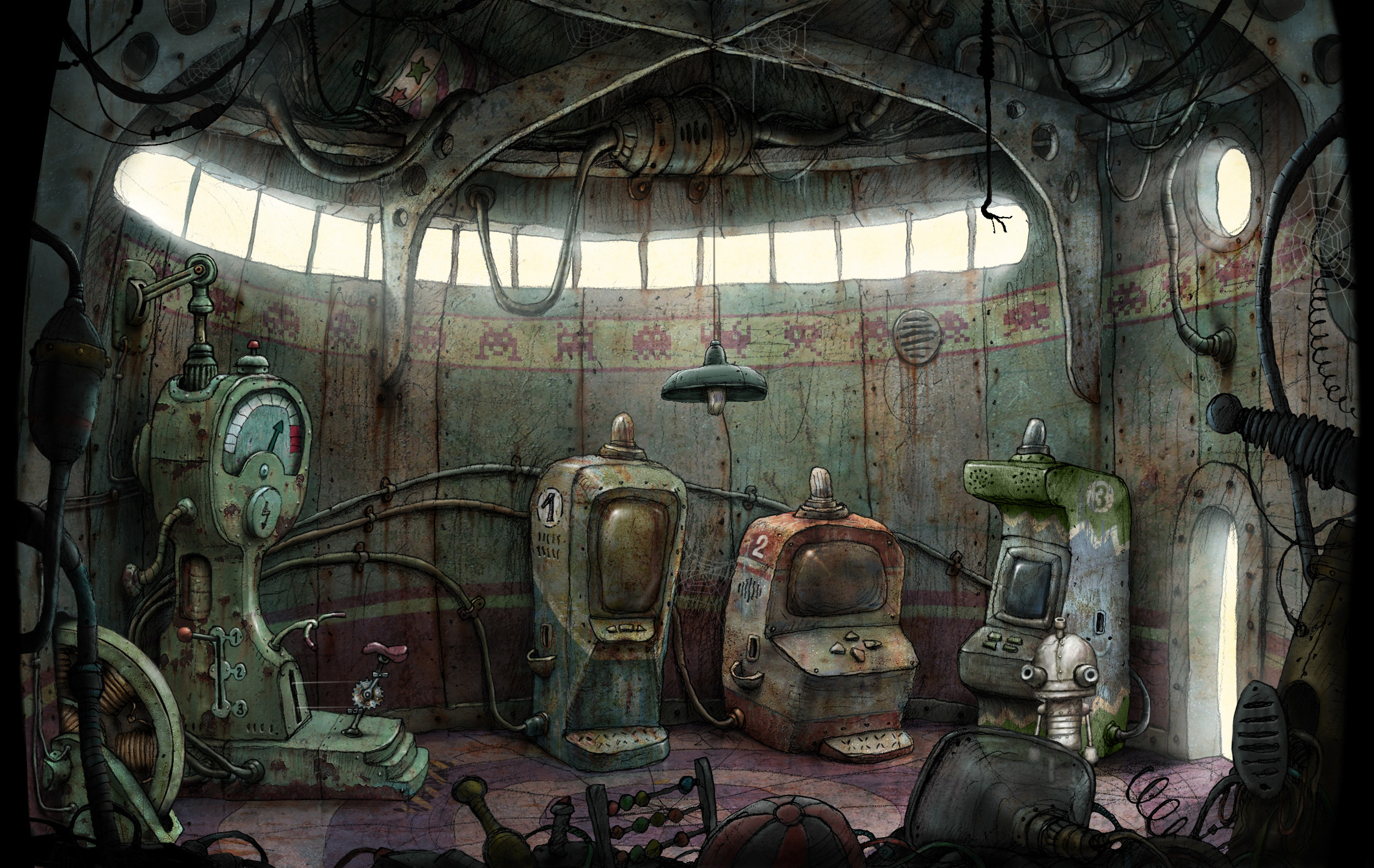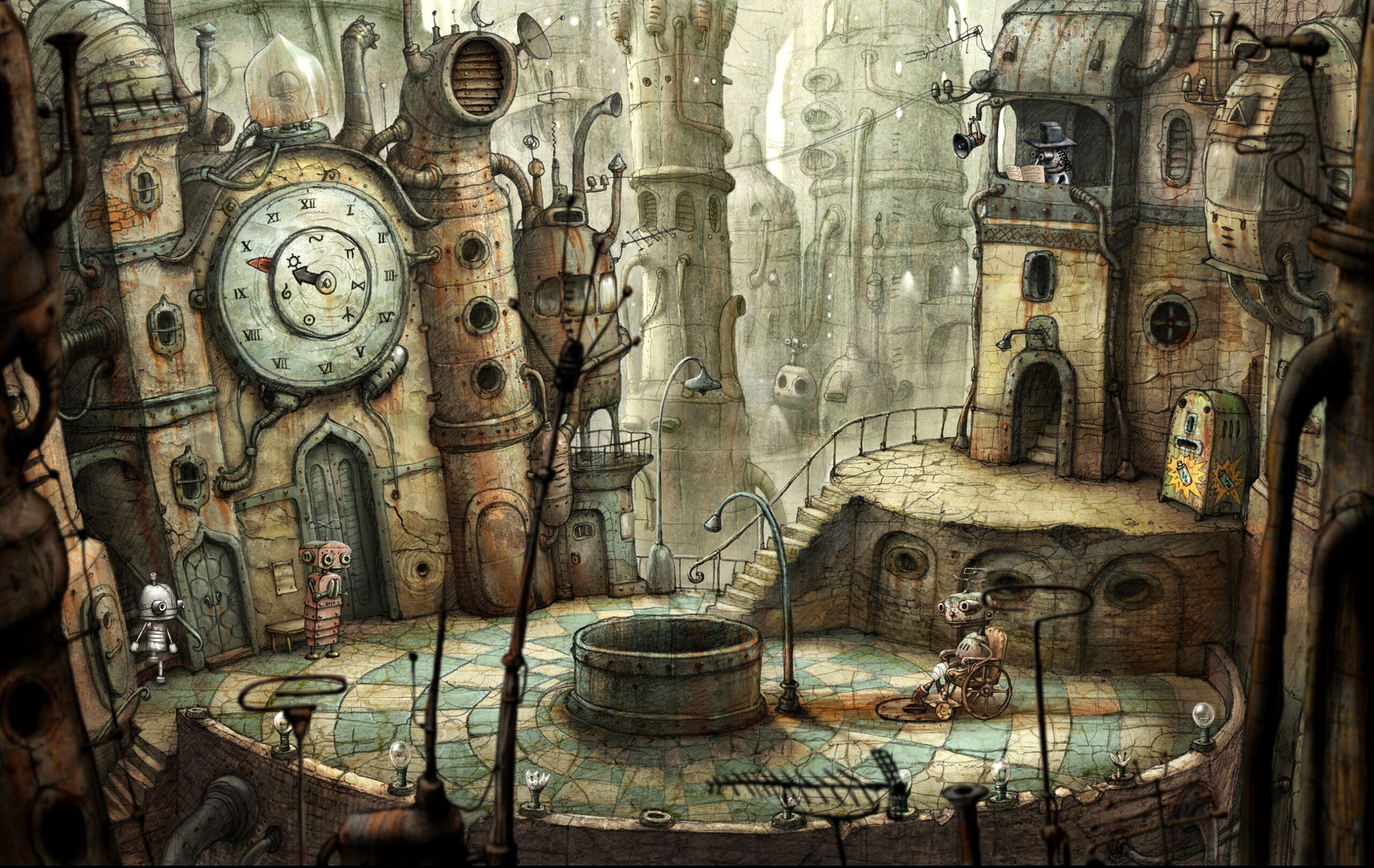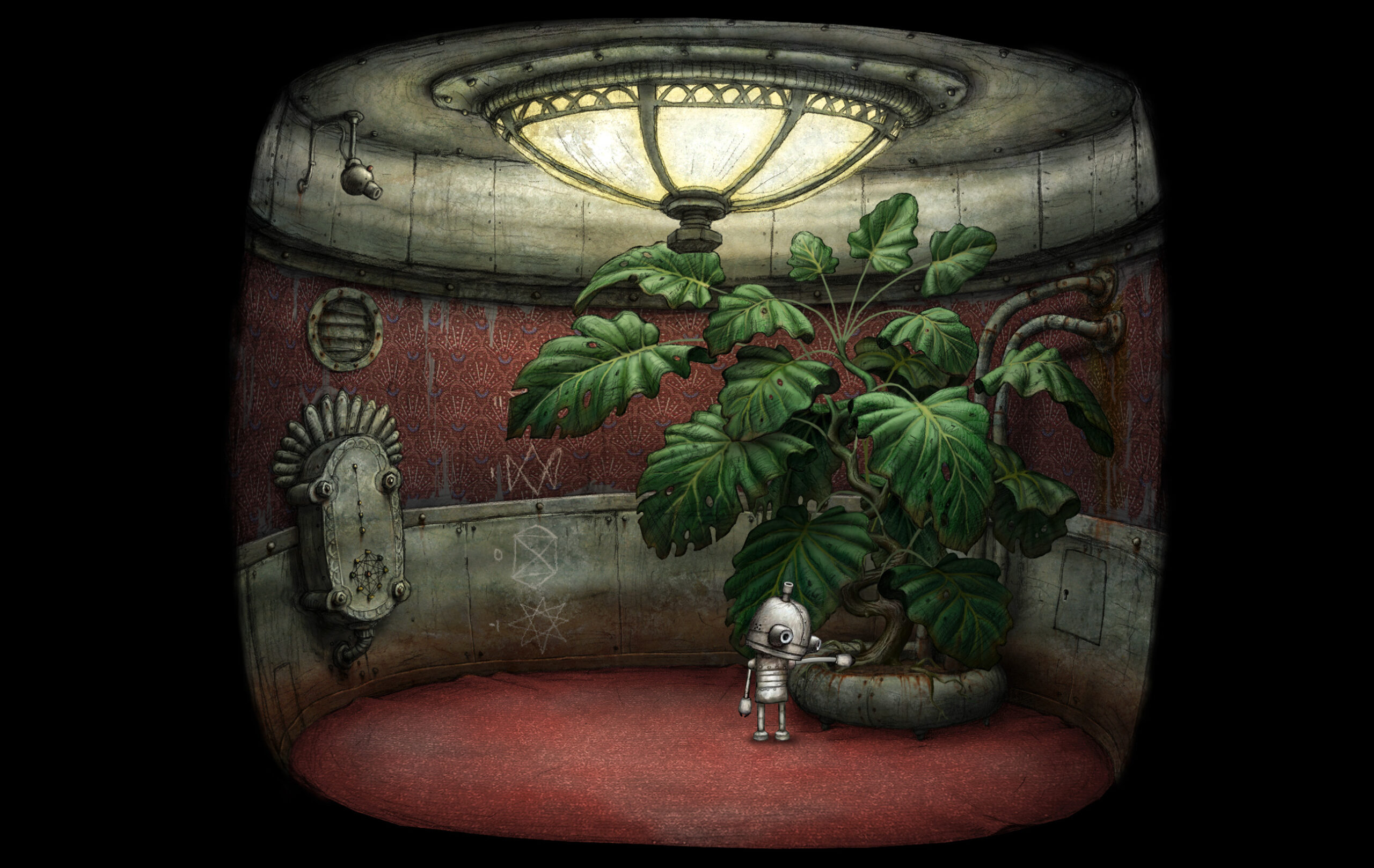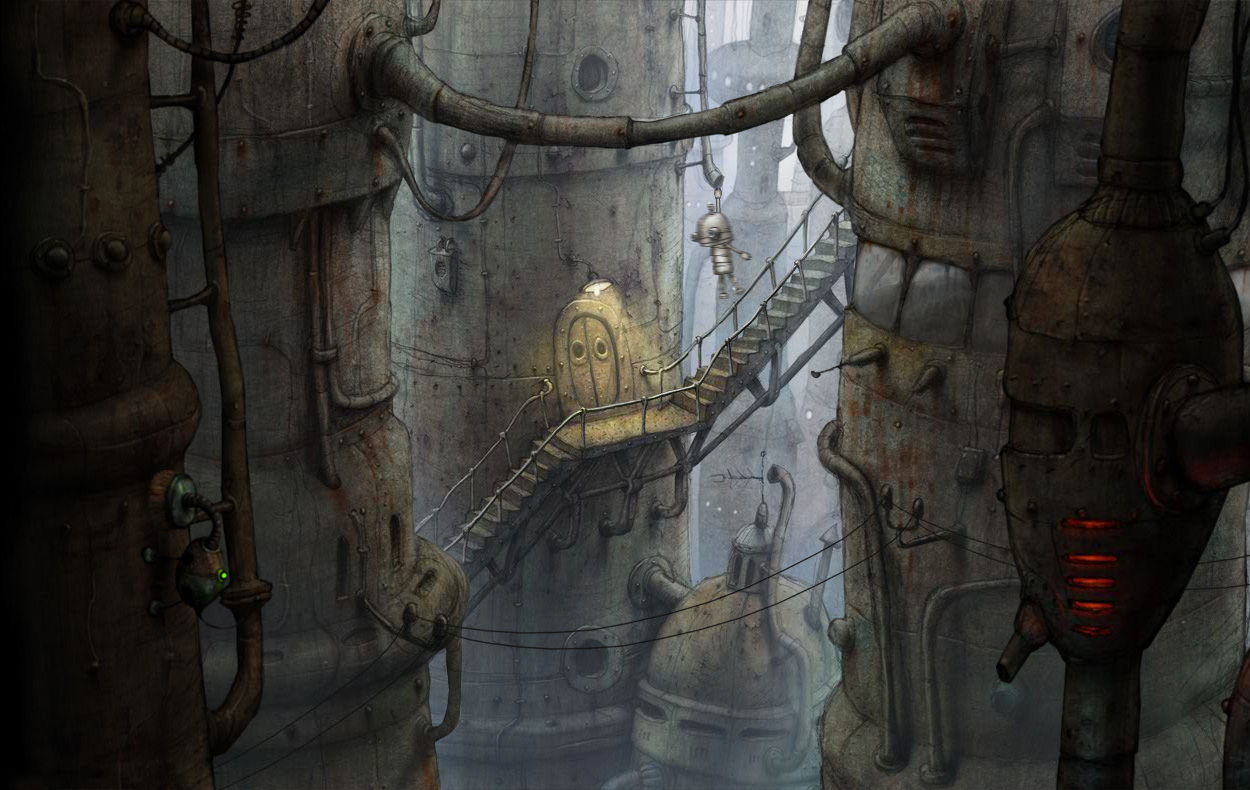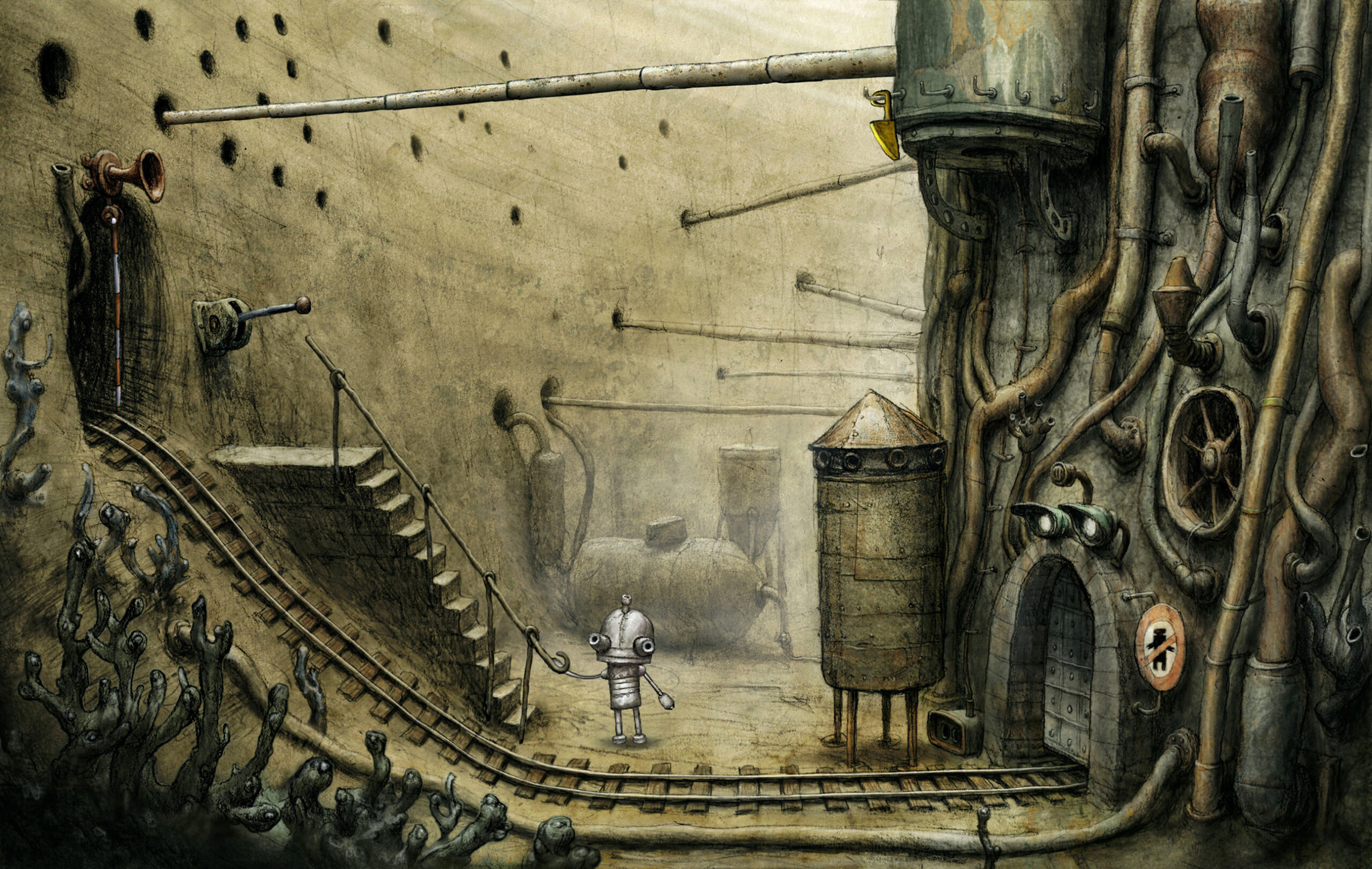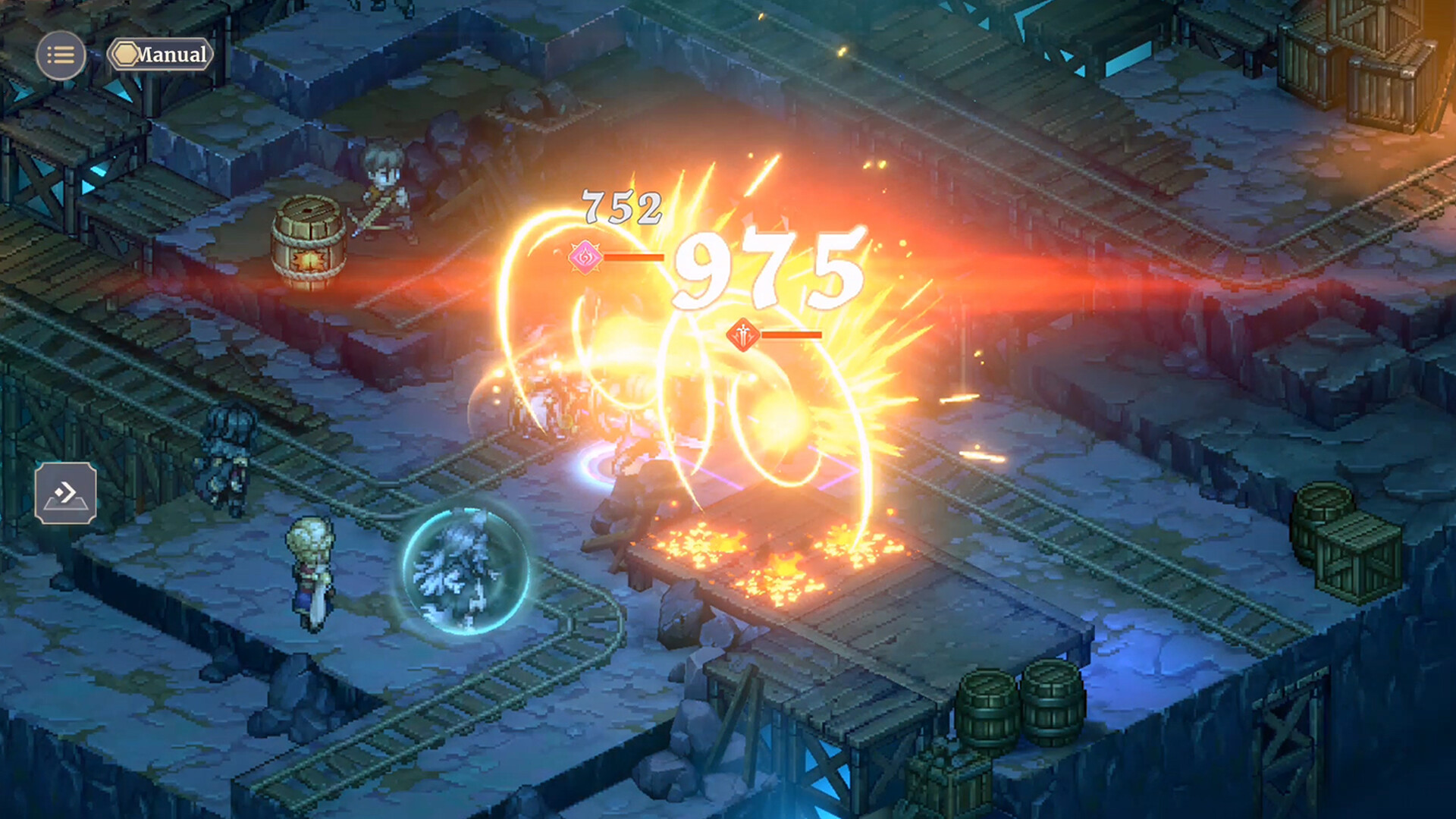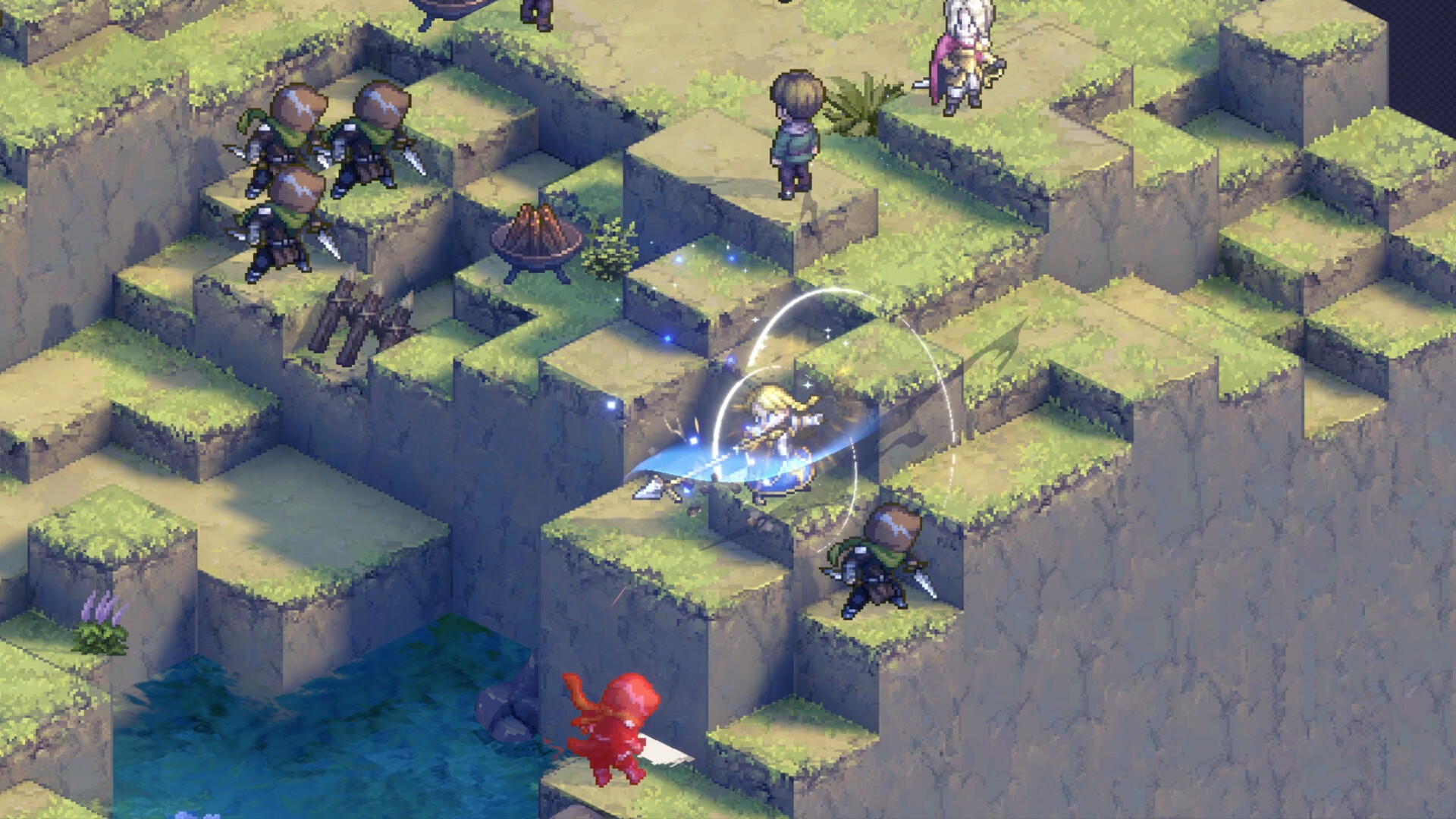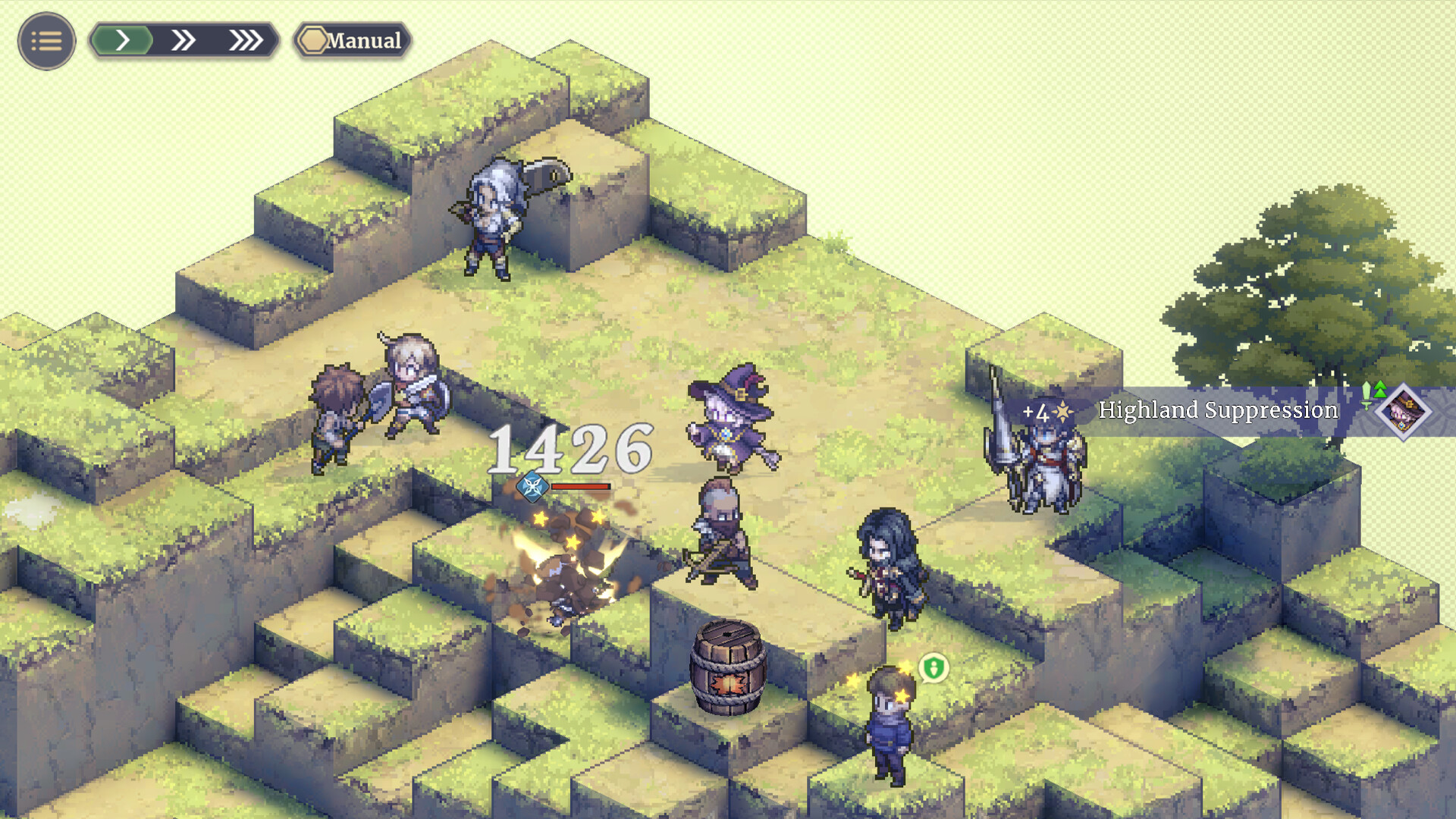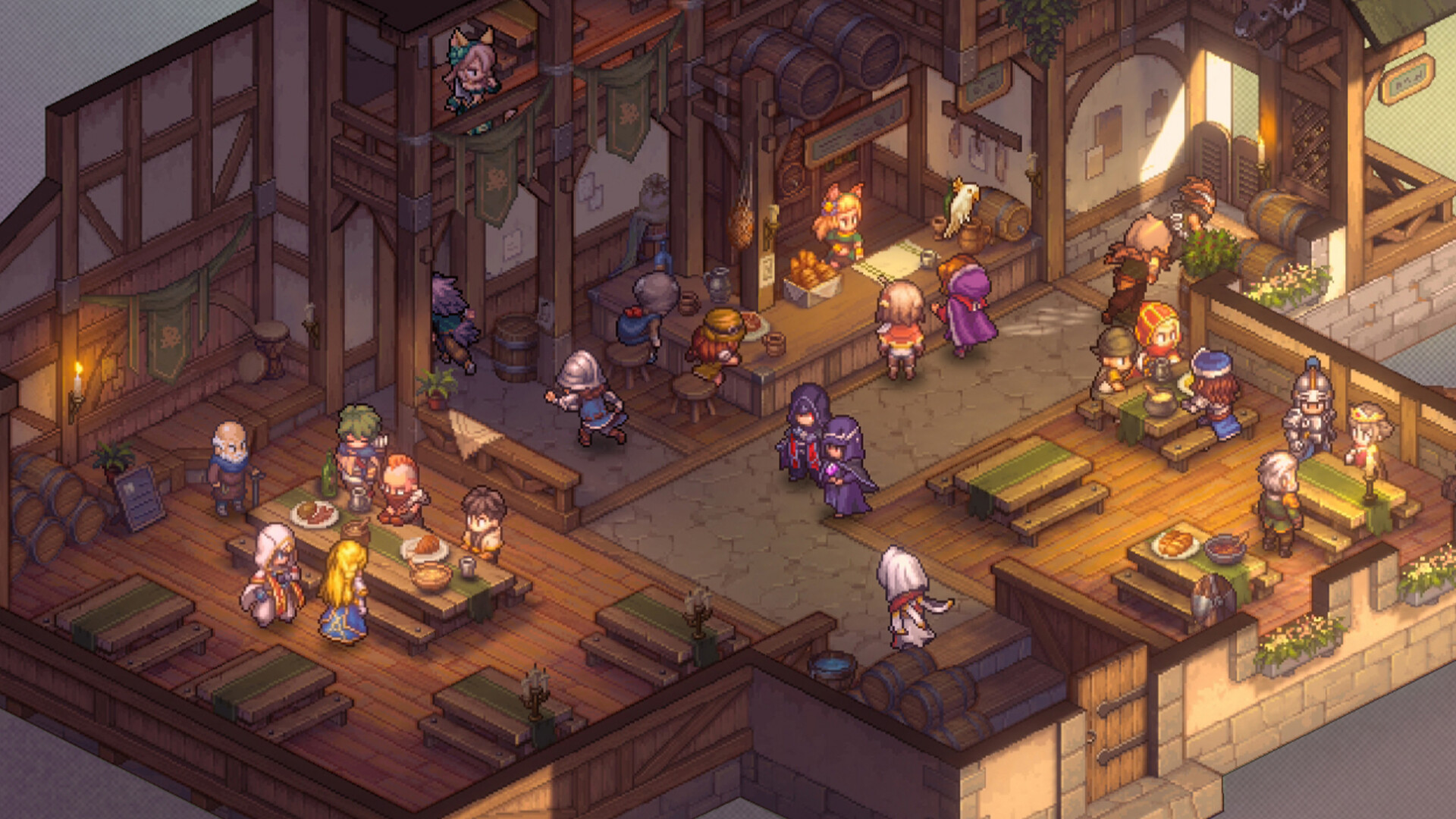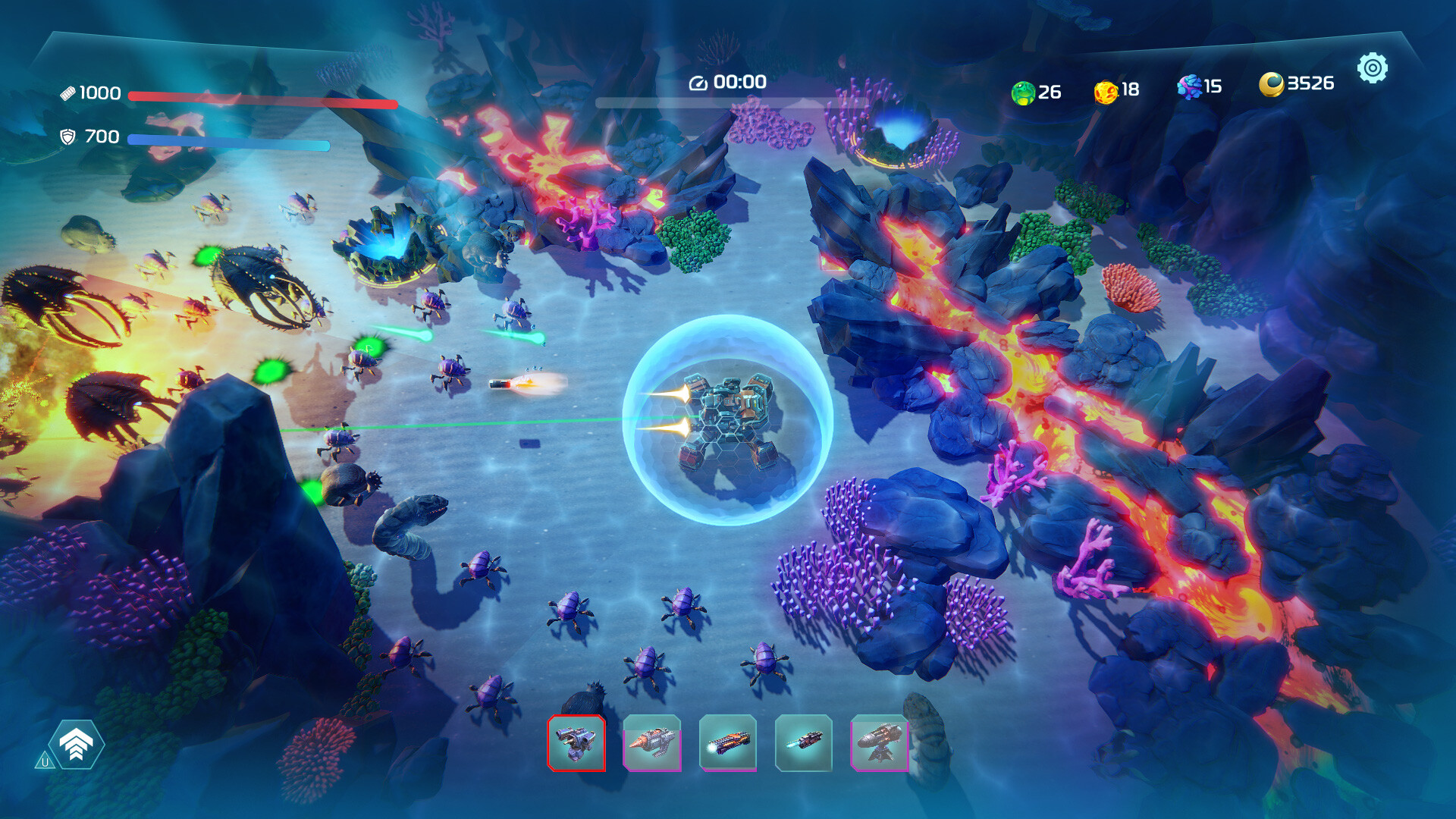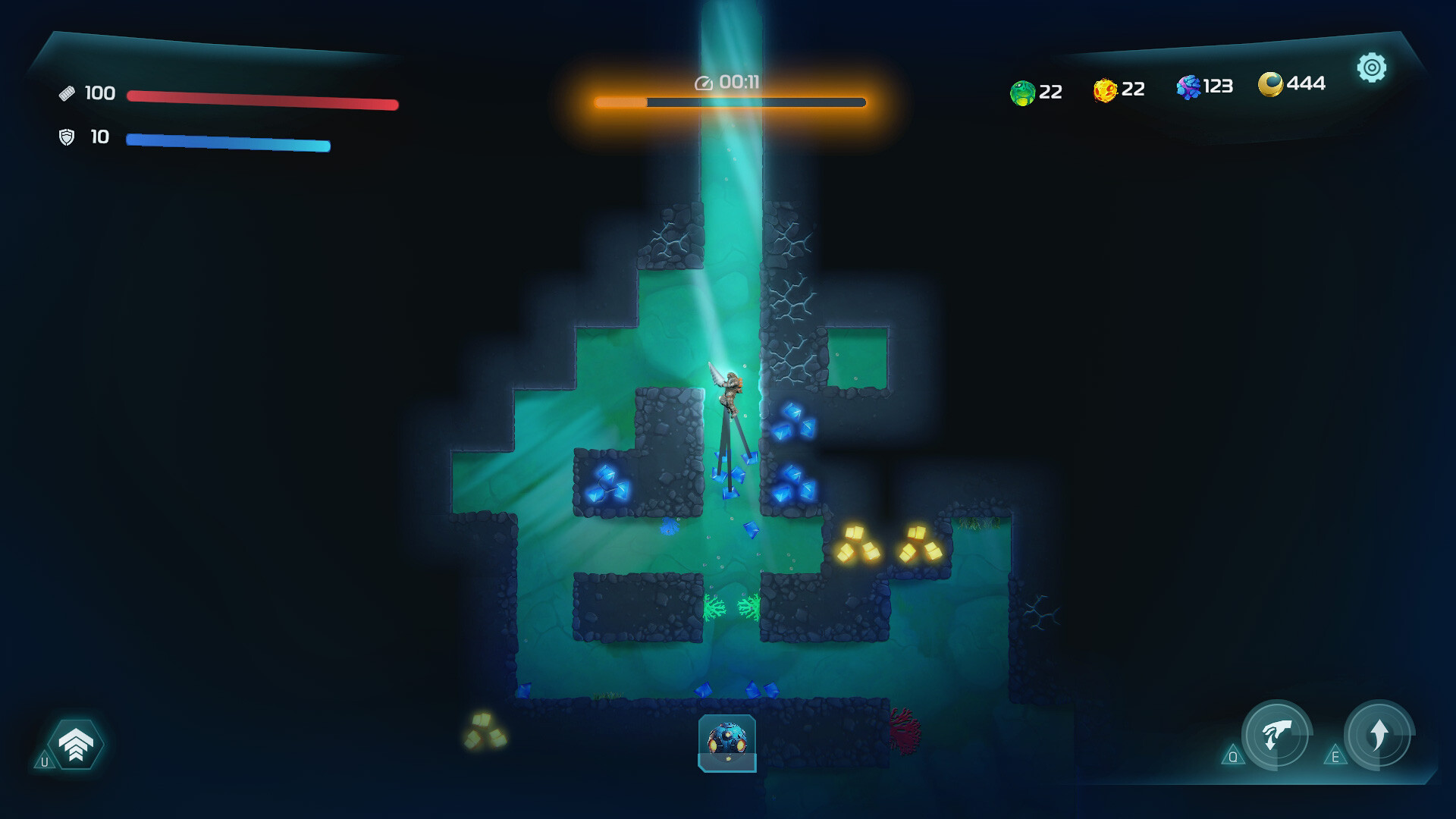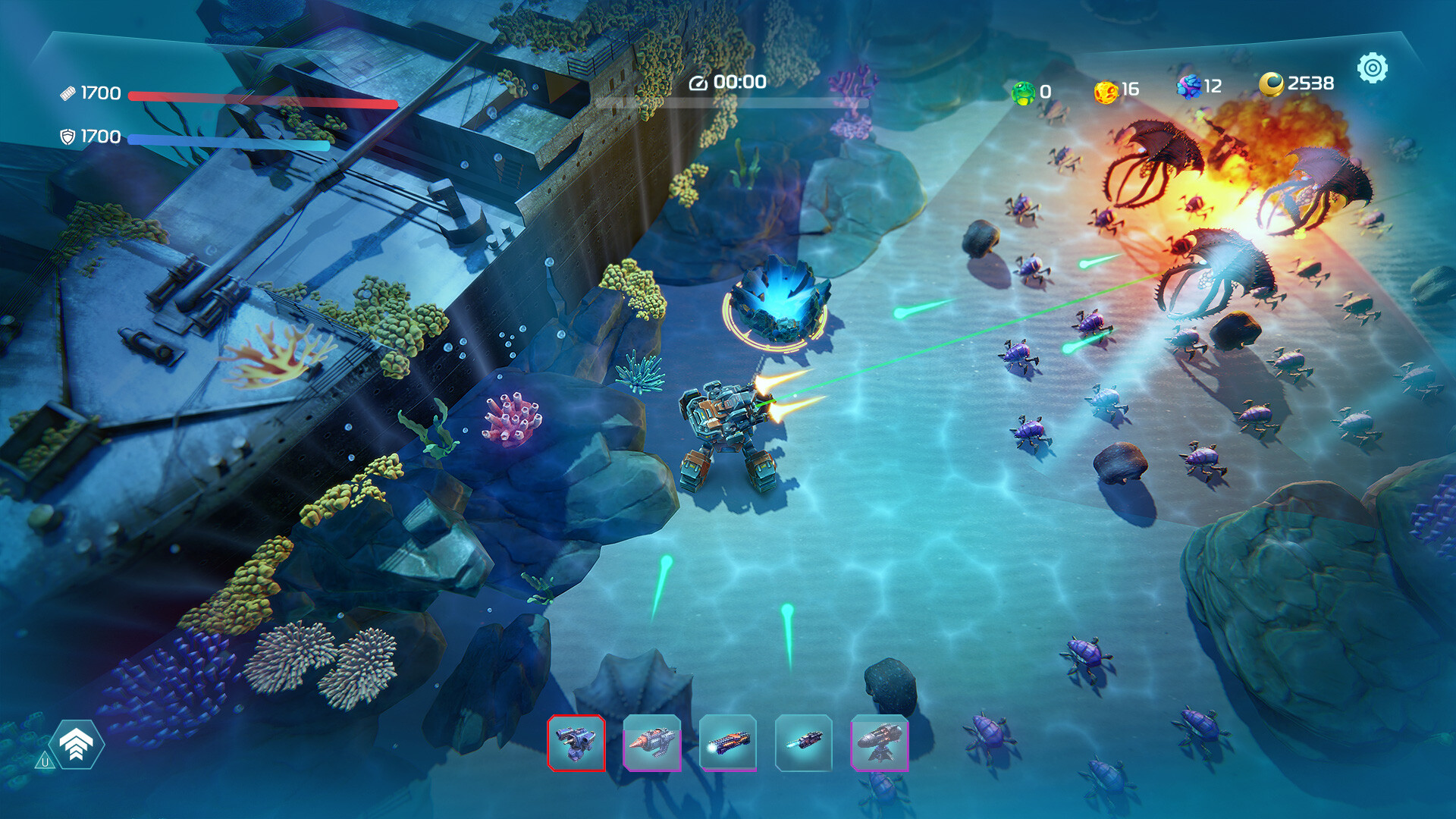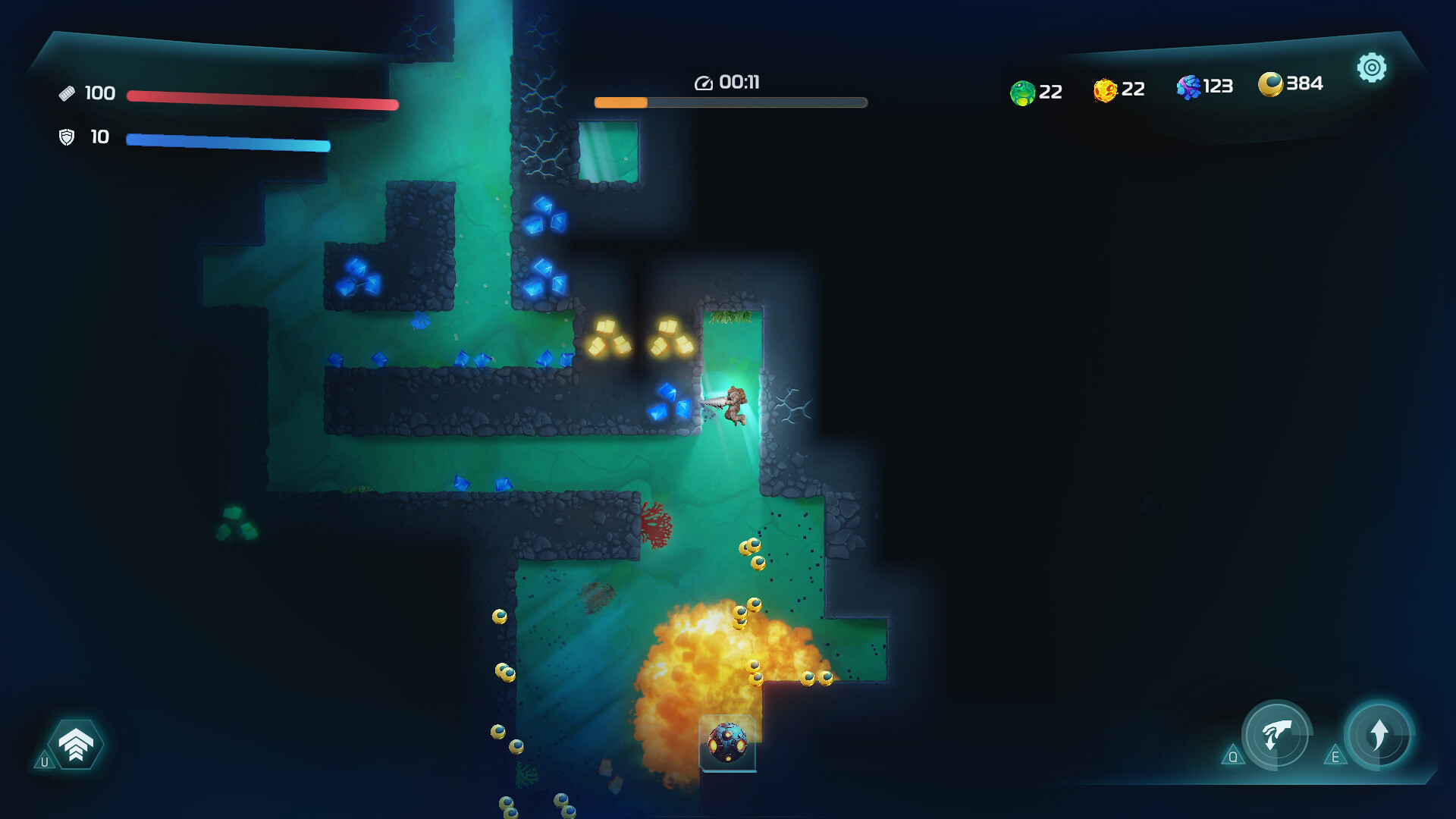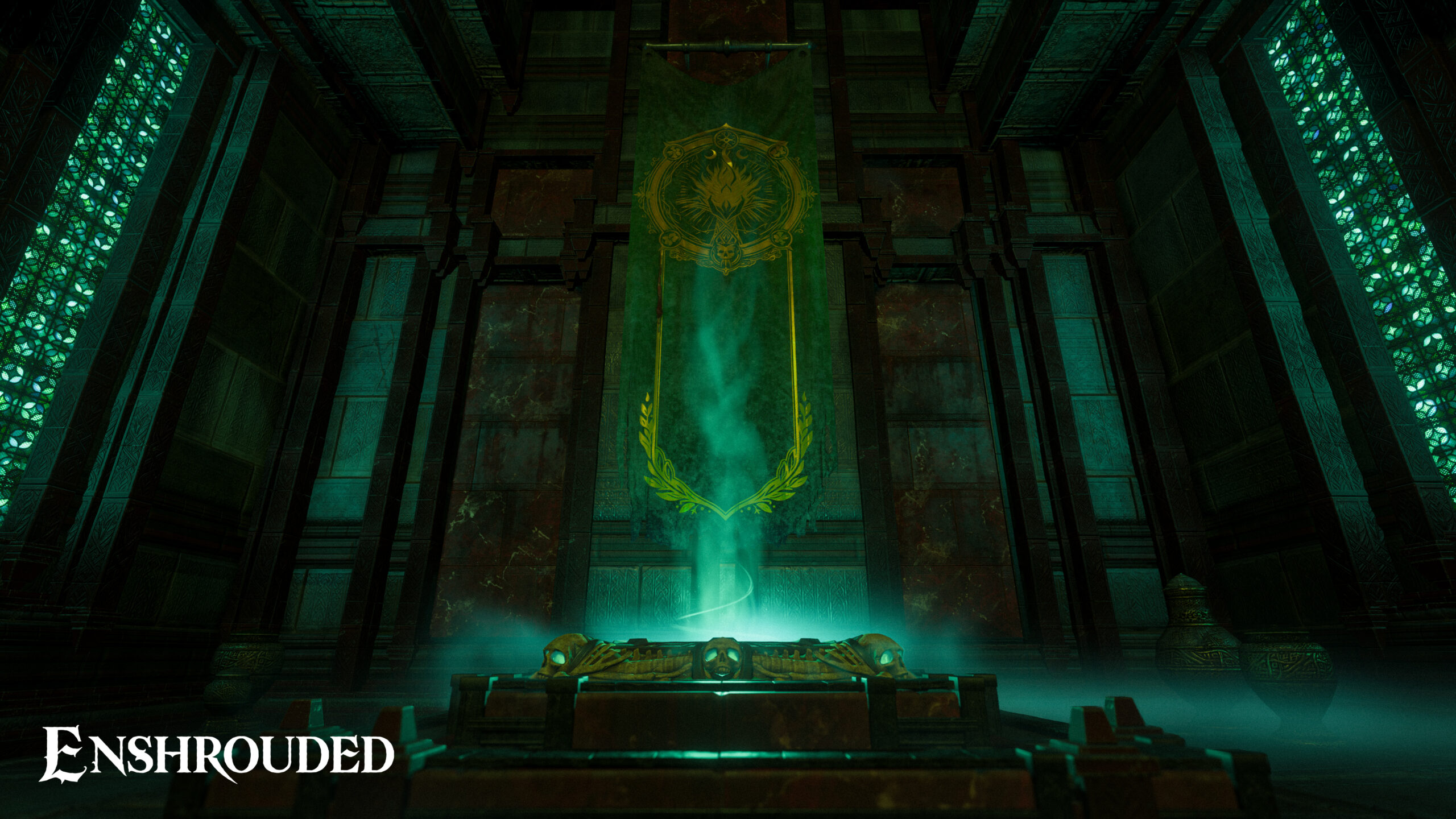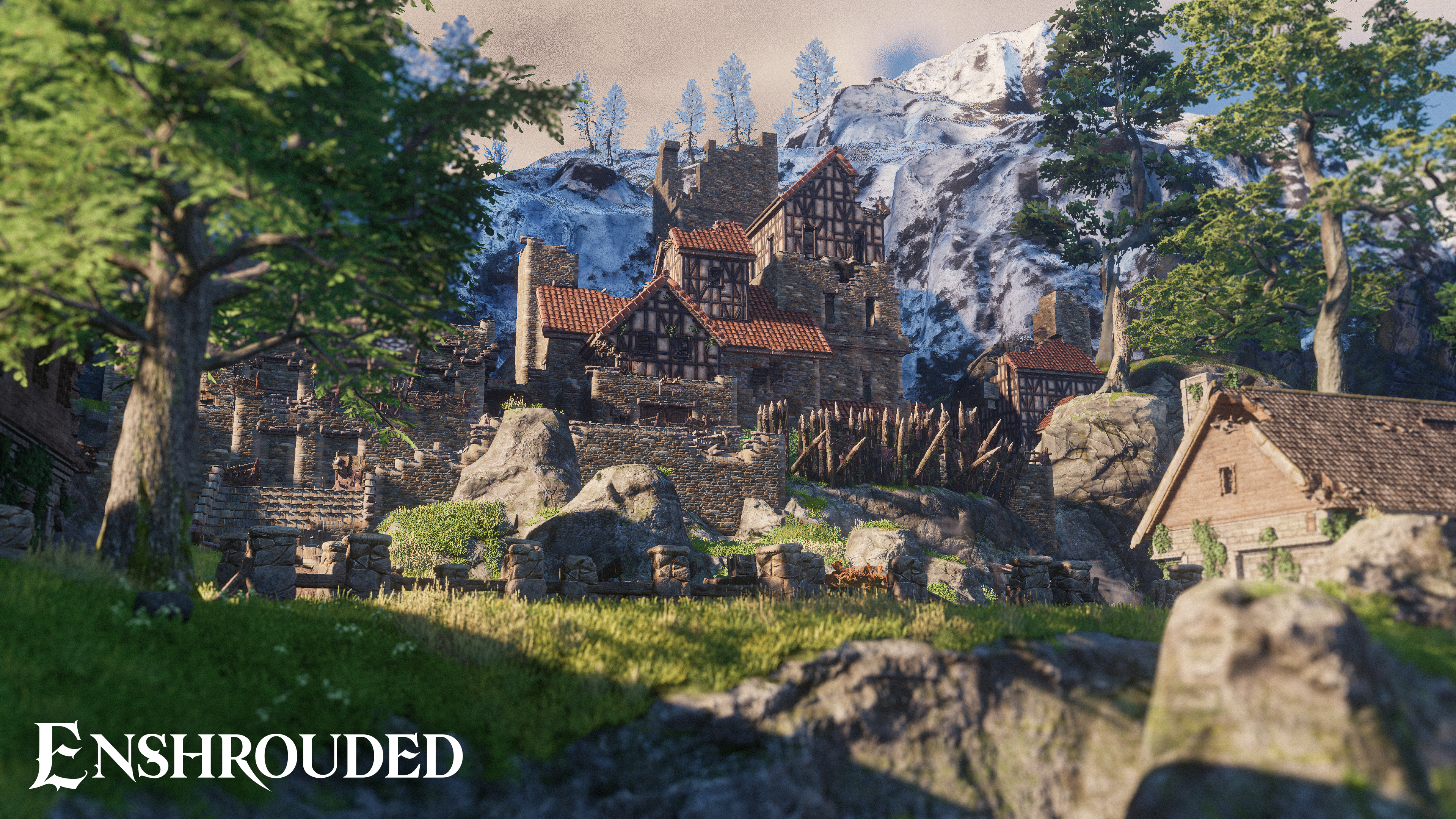Caravan SandWitch
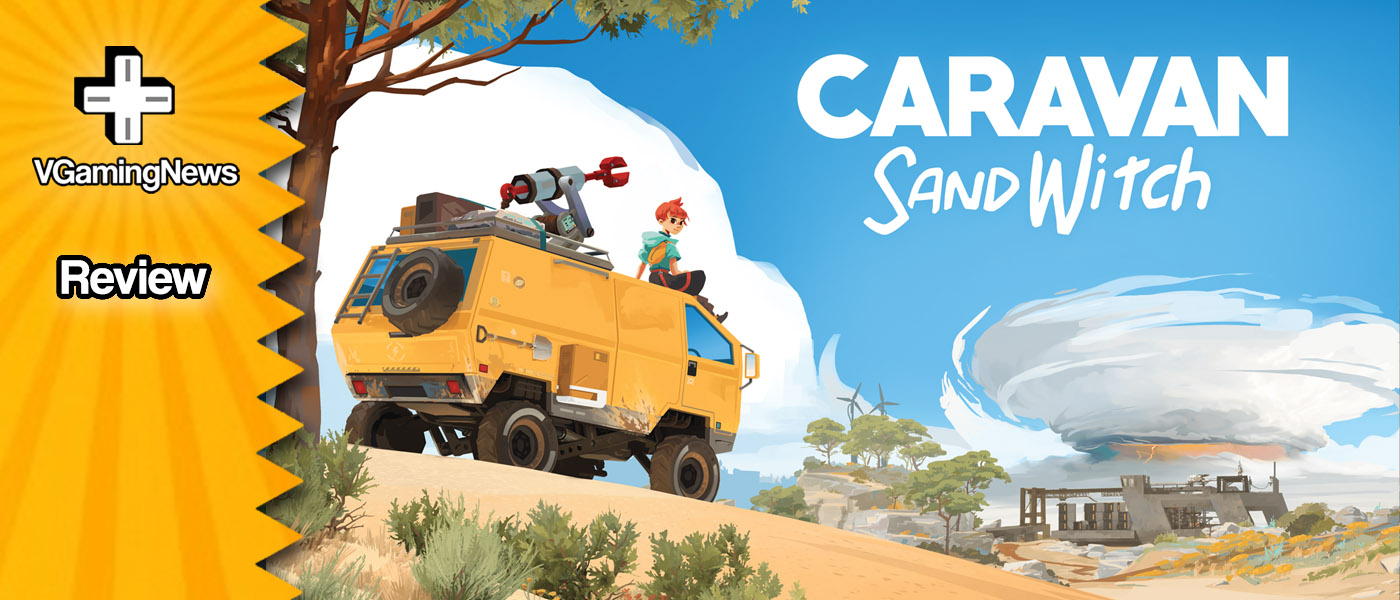

I find adventure games an incredibly sharp double-edged sword. I’m absolutely fascinated by epic quests filled with exploration and forever-unravelling environments, but equally find the thought of playing the same game for going-on a hundred hours incredibly daunting. I wasn’t quite sure what to expect when I fired up Caravan SandWitch, the latest open-world adventure from French dev team, Plane Toast, but what I found was a well formed tale brimming with curiosity, that never threatens to spill over into Homeric scale.
You play the role of Sauge, a young woman who’s summoned back to her home planet of Cigalo by a distress call, seemingly sent from her sister Garance, despite her going unexpectedly missing years earlier. Arriving back in her home village of Estello, she’s greeted by childhood friends, her estranged father, and the few remaining townsfolk who haven’t left the village for an easier life. After previously abandoning the rural life of Estello for the hustle and bustle of Space City, returning home brings a mix of emotions, but Sauge is determined to track down the source of the signal in the hopes of finding her sister.
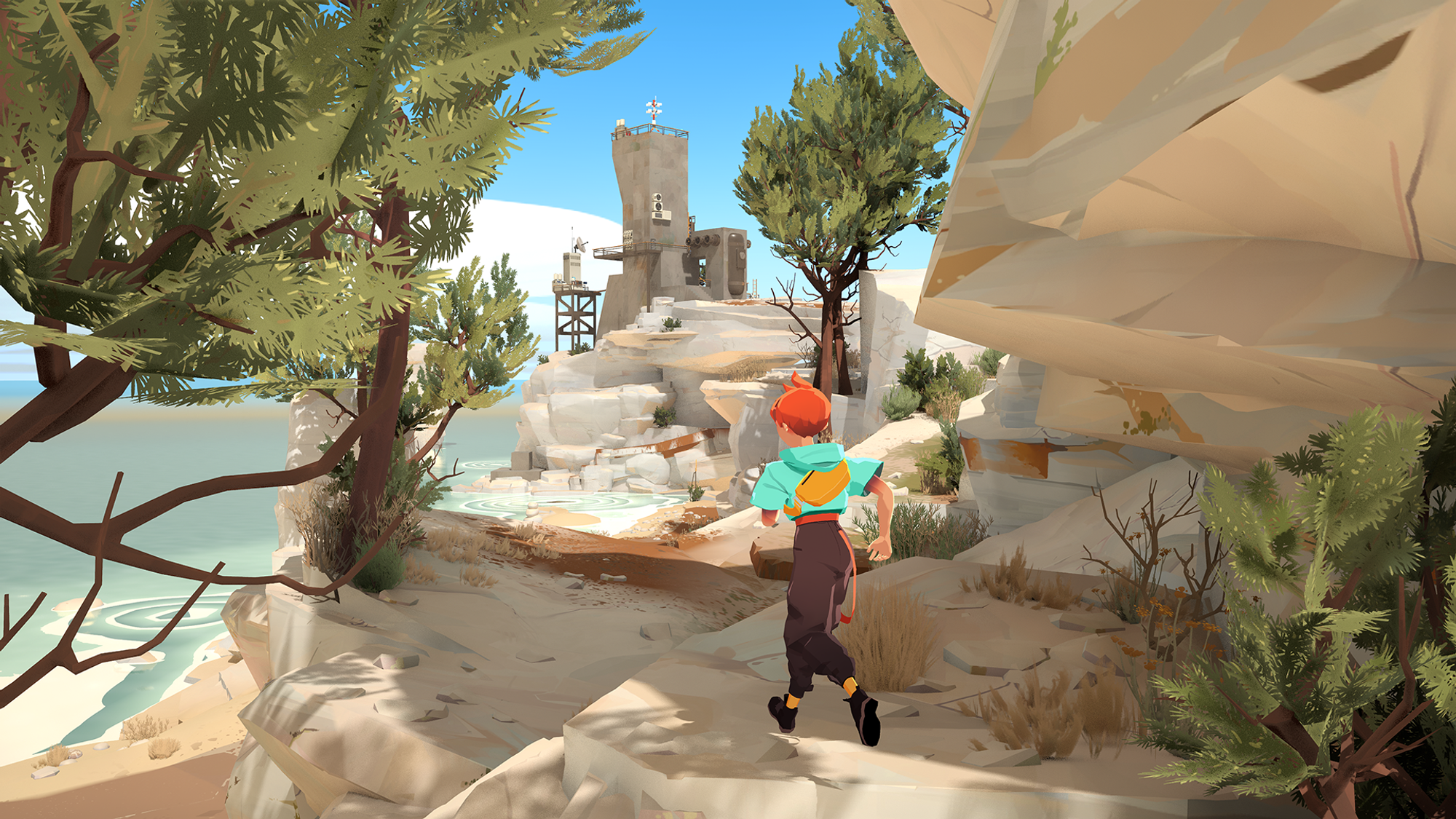
As you help Sauge reconnect with folks and mend a few fences, you come to learn more about the planet Cigalo and its recent tragic history. Once covered in vibrant swampland that the Reinetos people (more on them later) called home, Cigalo was pounced upon by greedy megacorporations and turned into a harsh desert planet. Many inhabitants liked the convenience, money and opportunities that The Consortium brought with them, and the planet became less of a homeworld and more of an industrial hub – at least until disaster struck. A terrible incident in the far reaches of the desert not only destroyed a Consortium facility and killed a host of civilians, but created an enormous and deadly storm in its wake. Overlooking the ecological and human cost of the incident, The Consortium quickly abandoned Cigalo as a profitable business enterprise. Without the money, infrastructure and the comforts The Consortium afforded, most of the inhabitants of Cigalo hopped in their spaceships, leaving only a handful of people to eke out a tough existence as the storm, known as the TARAASK, continues to rage in the desert.
At a Glance
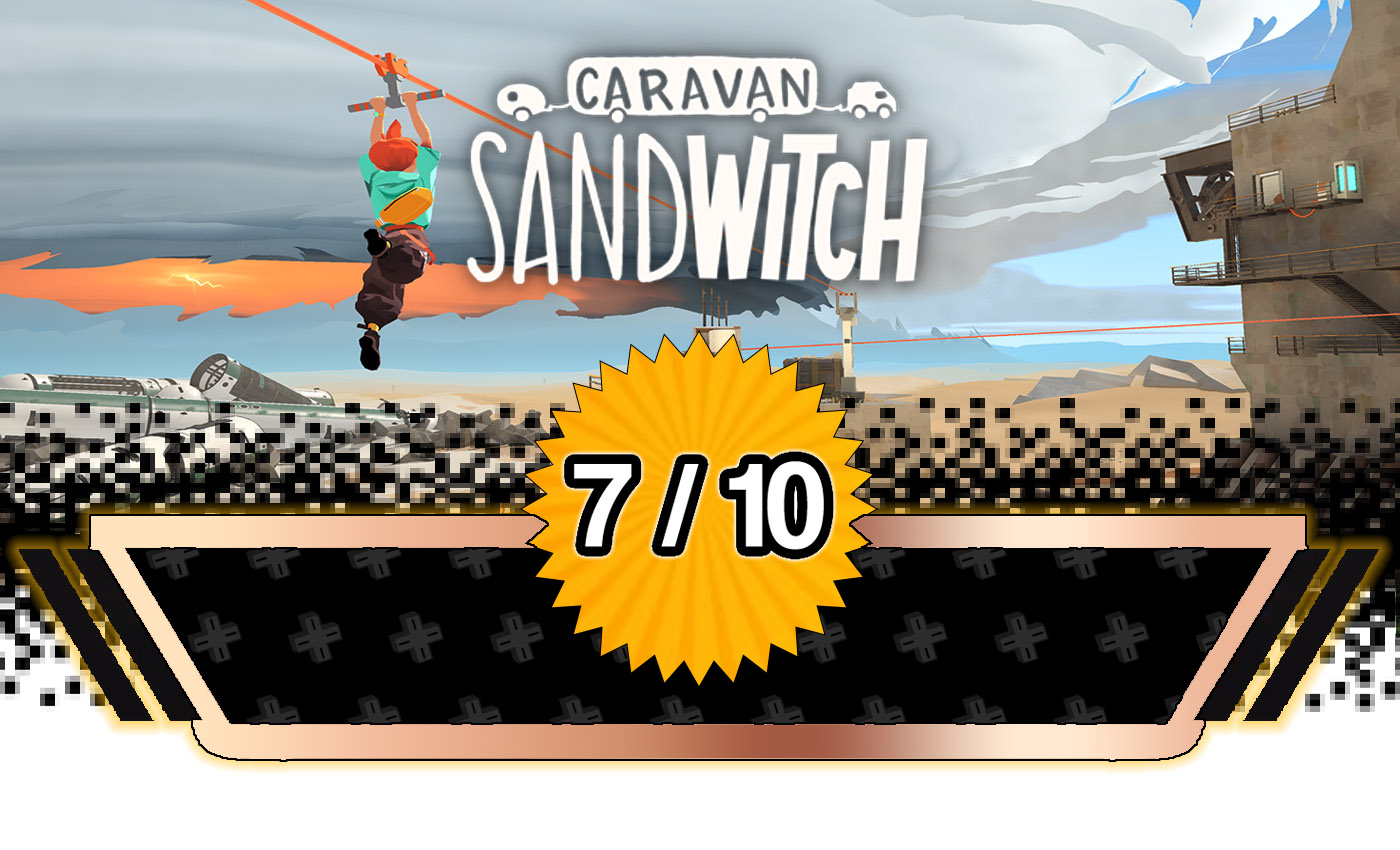
Positives |
Negatives |
+ Well built and intriguing world to explore + Rounded and diverse cast of characters + Perfect length at 10-15 hours |
– Some twitchy platforming in parts – Plot drivers a little hodge podge – Gameplay may not be diverse enough for some |
Available on: |
|
The gameplay premise is simple but really effective – you drive around in a beat up but loveable little van, exploring the ruins of the desert, deactivating problematic technology and generally running errands for folks. And while the setting might be harsh, the gameplay is anything but, with Caravan SandWitch offering an entirely risk-free adventure. You can careen around the dunes with wanton abandon and hop between high ledges without fear of falling, since Sauge won’t take any damage, no matter what missteps you make. This low stakes approach to adventure will undoubtedly irk some, as there’s no real challenge to speak of, so your enjoyment will likely boil down to how much you like exploring the wilderness, and unpicking the mysteries of Garance’s disappearance and the motives of the sinister SandWitch, who seems to be stalking Sauge at every turn.
One of the main play drivers is finding scraps of technology that lay scattered throughout the ruins of Cigalo and upgrading the van through the genius of Nèfle, the resident mechanic. I thought each of the van upgrades came in a timely manner, offering a nice balance between accessing new areas and keeping you wanting more, as well as encouraging you to return to past areas with new kit, squeezing every last drop of adventure out of each locale. The upgrades themselves may seem pretty bland in function, but they’re actually very well implemented in the gameplay. I didn’t think I could get especially excited about gaining a tow rope, but Plane Toast have done a good job in their level design, making even the most mundane tool a joy to utilise.
Despite the scales being vastly different, I felt the same sense of adventure in Caravan SandWitch as I did in The Legend of Zelda: Breath of the Wild. Zooming towards huge new landmarks on the horizon was always exciting, but it’s actually just as enthralling to explore the smaller places, overflowing with charm and intrigue as they are. Hopping out of the van and scouring every nook and cranny of the ruins is really quite addictive, and I always felt like my curiosity and willingness to explore was rewarded with goodies tucked away in hard to reach places, which wasn’t always the case in Nintendo’s elven epic. I’d argue that the size of the adventure is significantly less intimidating too, with Caravan SandWitch coming in at about a tenth of the size of most open world games, without sacrificing much in the sense of enjoyment or exploration.
I liked the visuals in Caravan SandWitch, which offer a soft colour palette over rugged landscapes, complimented by vibrant and distinctive character designs. There’s plenty of detail in the environments and detritus, even at lower end settings (so says my potato laptop), and there’s a melancholic beauty to the dishevelled world you see rumbling by outside the confines of your van. The soundtrack is a chill, breathy affair, as you might expect from this laid back road trip of exploration, and I found myself thoroughly relaxed by the mix of calm ambiance and serene surroundings as I helped Sauge in her search.
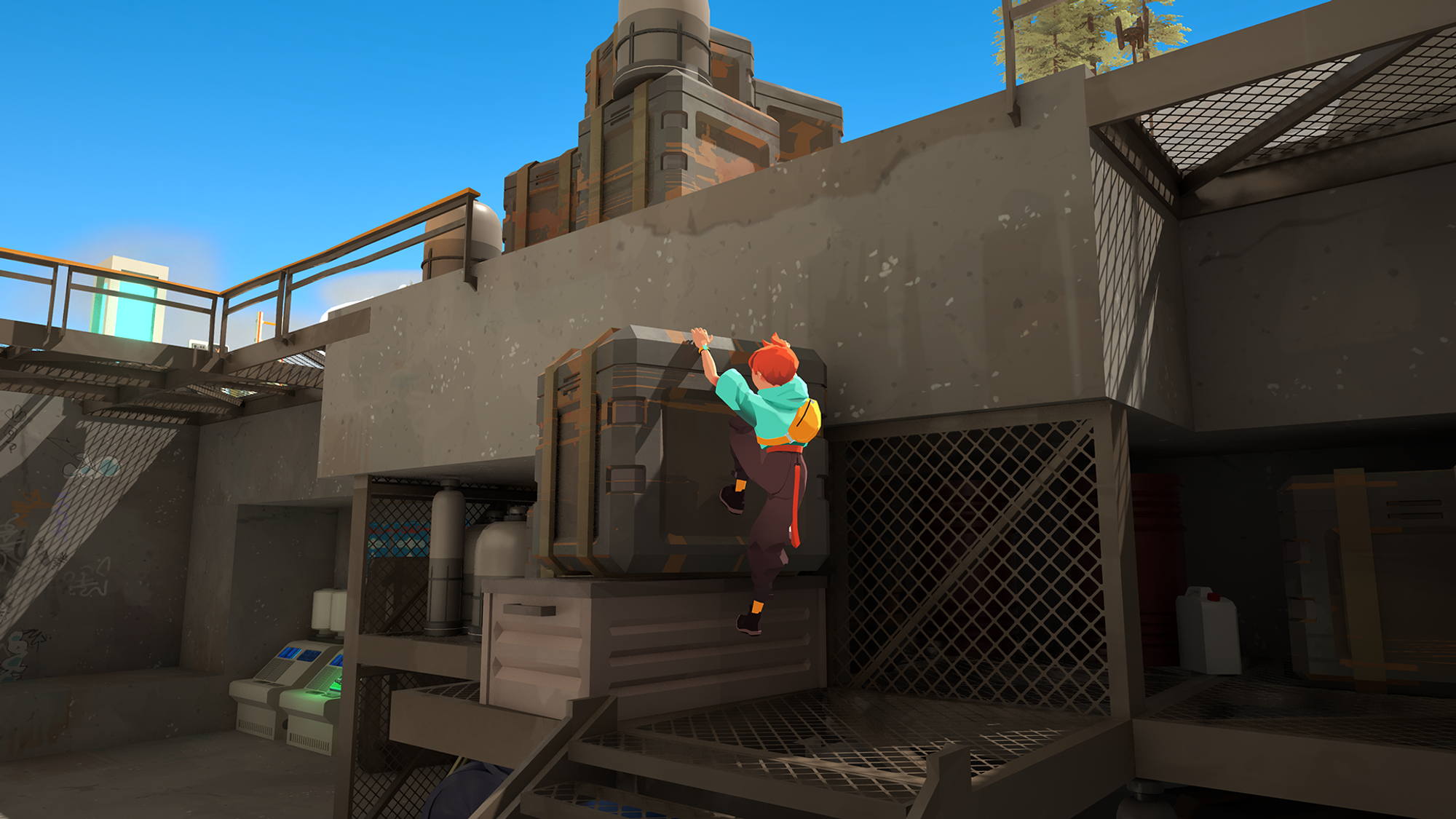
Overall, I’d say that the overarching story doesn’t break much new ground and struggles with consistency in some areas, but I certainly enjoyed what Plane Toast has put together, especially at the more granular levels. The relationships and emotions expressed are nuanced, and there’s something quite comforting about exploring the memories of Sauge’s upbringing, and reconnecting with her homeworld and the people from her past. I thought the plot carried a solid and consistent pace throughout, though I felt things fell a little flat in the final act, perhaps owing to a couple of reveals that weren’t quite grandiose enough to have the desired impact. One hinges on something too obscure, and the other on something almost too expected – there’s been a nice bow placed on things, for sure, but it lets a little air out of what could have been a great crescendo, in my opinion.
But the world, the lore weaved around it, and the people who inhabit it, do a tremendous amount of heavy lifting, making Caravan SandWitch feel like a game that’s much, much bigger. I was fascinated with every isolated landmark and found each one of Sauge’s anecdotes intriguing and purposeful. Despite the clean cut visual style, there’s a real and deep sense that Cigalo has been truly abandoned – once courted and now discarded, left to be swallowed by the unforgiving sands.
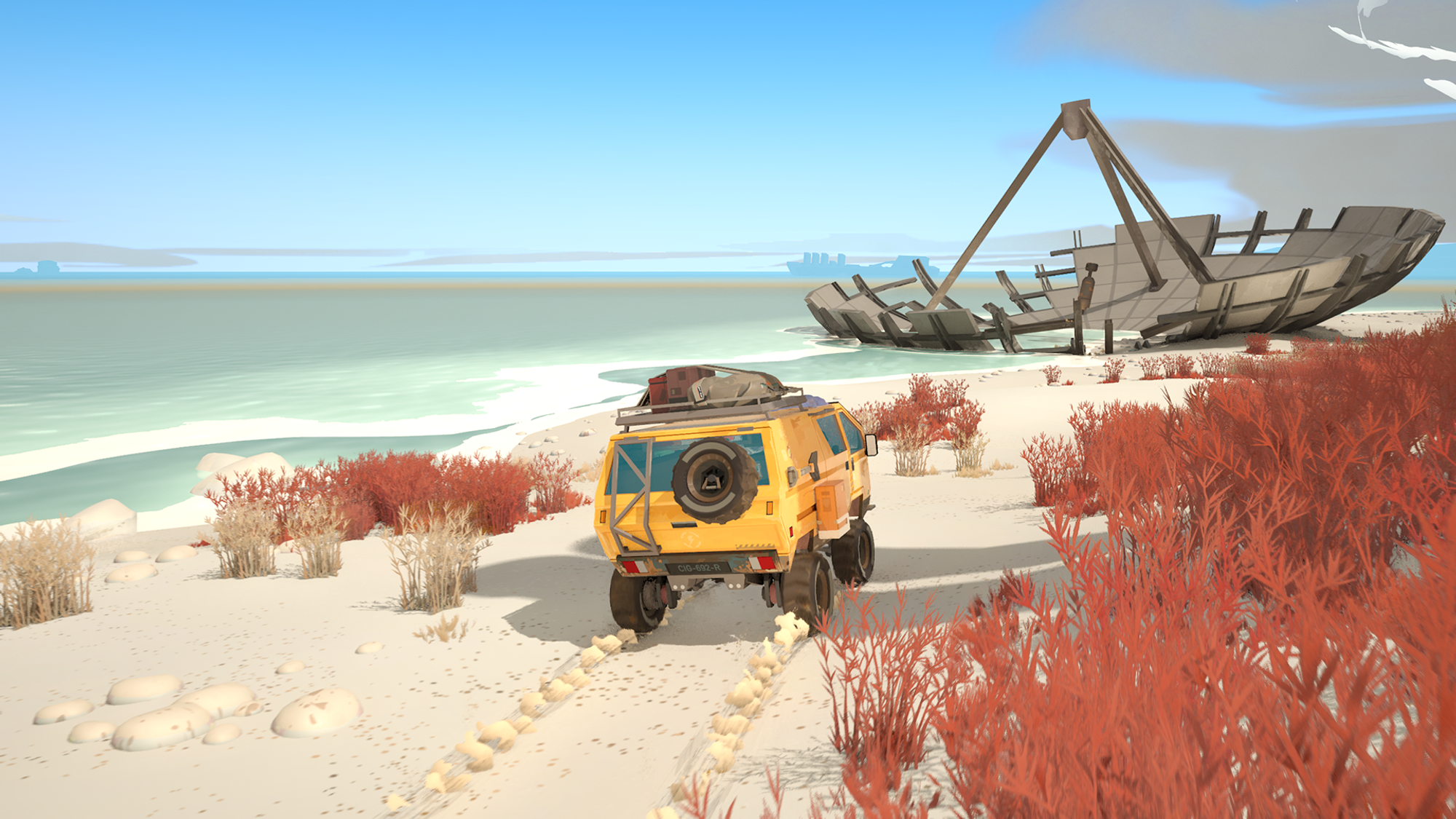
The depth of the world building is best highlighted by the Reinetos, the race of frog-people native to Cigalo, who have been forced to retreat to a network of caves, away from the harsh desert sun. As the Reinetos age they grow immeasurably large, and eventually willingly concede their lives to join the Mycelium, a sort of fungal collective consciousness that feeds into the psyche of their newborns. The level of detail used to describe the culture of just a handful of characters is mind-blowing, and speaks to the consideration given to the peoples who make up Caravan SandWitch. To further that point, the cast of characters is incredibly diverse; there is a myriad of races and sexual orientations represented, and conversations take place exclusively in gender neutral language, making it clear that everyone is welcome on Cigalo.
Caravan SandWitch is a small-scale open world adventure that delivers a tale that’s as heart warming as it is sombre; it’s filled with nuanced relationships and impressively deep lore, and I found it a joy to experience. There’s little to fault about the cosy, risk free gameplay except that it simply may not be to everybody’s taste, but for me, it makes a nice change of pace to a landscape that’s currently bubbling over with ultra-tough soulslike adventures. Pottering around in your beat up old van and doing good deeds for people feels genuinely rewarding, and exploring the final abandoned outposts of civilisation on Cigalo offers a sense of adventure that’s so much bigger than its 10-15 hour runtime.
In the interest of full disclosure, VGamingNews was provided with a copy of the game in order to conduct this review.
Thanks for taking the time to read our review, If you’d like to support us further, please consider buying us a coffee!
Machinarium
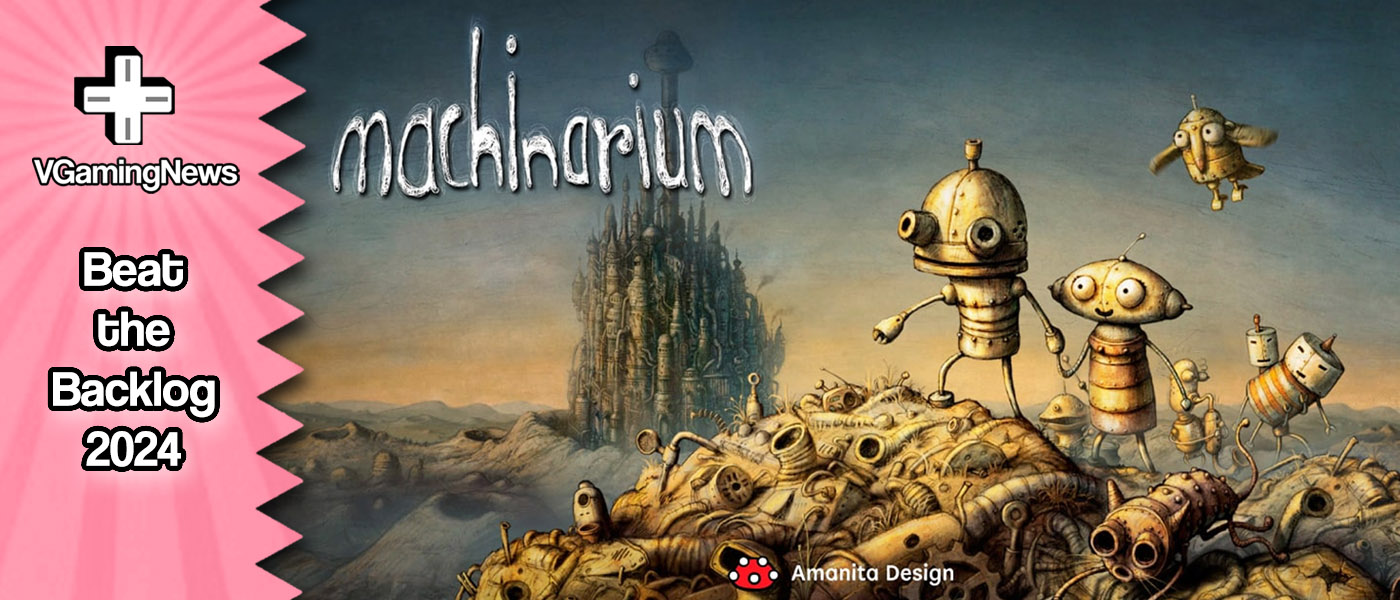

Drew has pledged to slowly but slowly churn his way through his sizeable stack of Nintendo Switch games for his ‘Beat the Backlog’ feature. Check out his main article to see what games he’s completed already!
Perhaps one of the longest standing games in my backlog (on ‘current gen’ machines, anyway), is Amanita Design’s dingy-cute point-and-click adventure, Machinarium. I bought it on Steam almost 10-years ago – I remember specifically choosing it as a balance between finally having a machine that could play half-decent games, whilst also not wanting to shell out on top end titles. Yeah, you read that right – this is a PC game from my backlog, which definitely makes it something of an outlier.
Unlike a lot of titles gathering metaphorical dust in my backlog, I actually did start Machinarium when I first bought it. I don’t remember exactly where I got up to before I got stuck and gave up, but I know it wasn’t that far, and that always bugged me. I like to think of myself as a pretty smart cookie, but I like point-and-click games because they regularly bring me back down to earth and leave me scratching my head looking for solutions!
Functionally, Machinarium plays as a run-of-the-mill point-and-click adventure. You use the mouse to navigate the screen, clicking to move your character to the desired area and to interact with any people and items in the vicinity. You have a small inventory for collecting helpful items and some of them can be combined to create new tools that will help you overcome the various puzzles standing in your way. In a long storied genre, Amanita Design hasn’t strayed from the tried and tested formula at all, and I think that’s for the best here, as it really lets the world and characters shine.
At A Glance
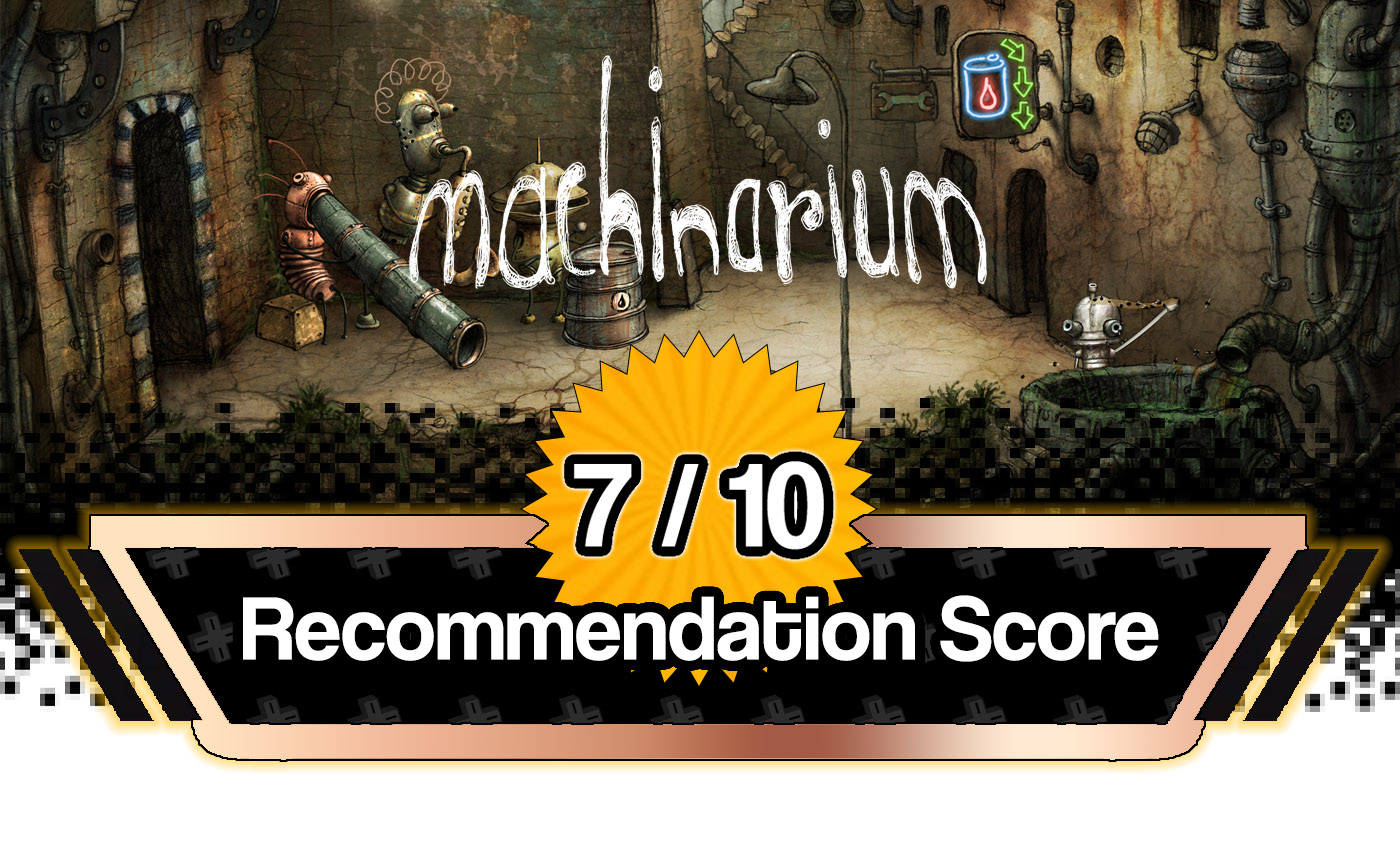
Date added to backlog |
21/10/2015 |
Positives |
Negatives |
+ Rusty but stylish hand drawn art style + Excellent sense of world building + Help available when you need it |
– Finicky action boxes – Some ‘moon logic’ early on |
Available on: |
|
Want to see the whole of Drew’s Switch backlog? Check it out here and suggest something to play over on our socials!
If you’ve read any of my reviews before, you know I’m a sucker for hand drawn artwork in games, and that’s no different in Machinarium. The whole world is equal parts grimy, derpy, and adorable, drawn in a style that looks like Quentin Blake and Tim Burton got together to redraw the animated movie Robots (2005). The lead protagonist is called Josef; he’s a compact little robot with a domed head, goggly eyes and extendable limbs and is undoubtedly a sweet little thing. He’s something of a downtrodden citizen in the thriving robot city of Machinarium, and has often found himself on the receiving end of all manner of torment from a group of bully bots who have taken to throwing their weight around. The game opens with poor Josef finding himself discarded to the scrapheap, and it’s your duty to help him get fixed up, sneak back into the city, teach the bullies a lesson and rescue his girlfriend, Berta.
The entire story is told without a single utterance of dialogue, and I have to say, it’s marvellously executed. Instead of any true narration, or even on-screen text, you’re treated to little recollections from Josef in the form of thought bubbles. These little bubbles play out his memories of various scenarios and give you a really strong sense of what’s happened in the world prior to you getting involved. Stylized as scribbly cartoons, these memory scenes are really well done; it’s clear who’s who, what’s going on, and they each give a strong sense of feeling to each story, allowing you to really connect with Josef and Berta, and heaping disdain on the mean-spirited Black Cap Gang, as the bullies are known. Having the odd characters you meet throughout the game use this same method of storytelling is incredibly effective; Amanita Design have done a wonderful job in building individual histories for each rundown robot you meet and in sharing them in a universally understood language.
In fact, this strong sense of history runs throughout the game, and between the multitude of wacky characters and grime splattered imagery of the environments, the world of Machinarium feels entirely convincing and lived-in. While many of the areas you find yourself in have that common point-and-click problem of feeling somewhat ‘manufactured’ for the player (excuse the pun), I couldn’t care less about that here, as the places you explore carry such a tremendous sense of being alive beyond the borders of the screen. I regularly found myself pining to steer Josef into every dingy back alley shown on screen, or have him wander through every locked doorway, keen to explore the rusty world of Machinarium to the full.
But the world of Machinarium is hardly all sunshine and rainbows, as there are some pretty bleak visuals stashed amongst the derpy robots and silly puzzles. Yes, you’re treated to a pretty playful and sweet story, but some of the imagery hints at a sinister dystopia lurking beneath the surface. I think it’s this dichotomy of cutesy characters living in a potentially dark world that really captured my imagination whilst playing the game.
As I alluded to earlier, in a hands-on sense, Machinarium doesn’t do anything especially new in the point-and-click arena and instead plays its puzzling relatively safe. You’ll find a mix of traditional item collection, combination and utilisation puzzles, along with a number of more ‘mini game’ style conundrums too. The mini games were all centred around old school logic puzzles, like pushing buttons to move lights around a board, or rearranging blocks of different sizes to fit into designated areas – I certainly found them fun, but I think players with a lot of experience playing point-and-click games would have solved these puzzles a few times over in other games by now. On the whole though, I thought the difficulty was about right to keep my enjoyment level balanced with my frustration/determination.

It may have been because I needed time to get my brain into the right gear to complete point-and-click puzzles, but I found the first hour of Machinarium to be the least logical in terms of puzzle solving. I thought there were a few bits of ‘moon logic’ early on before it settled into a much more steady and smooth progression for the rest of the game. Thankfully, for those players like me who loathe googling the answers to things, Machinarium does have a built-in hint system to help you progress should you get stuck, and I really enjoyed the novel approach Amanita Design took in their implementation of this.
You can click on the hint button once per level to receive a vague clue about what you need to do to get moving, though I didn’t find this especially useful in helping me out. I usually knew what I needed to do, I just had no idea of how to do it. That’s where the next tier of help comes in – Machinarium actually has a whole walkthrough built-in, scribbled out in a huge locked tome that you can access from your inventory. You can unlock the tome any time by completing a little side-scrolling shoot-’em-up game, allowing you to see sketches that outline each of the puzzles in the level and see what you need to do to solve them. Cleverly though, you can only see the solutions for the level you’re currently on, and can’t flip through the pages to see every level in the game. This means that if you need a specific item that originates outside of the screen you’re on right now, you’ll have to unlock the tome again in a different place to see how everything fits together. And by having to play the mini game each time, it stopped me opening the guide every single time I hit a roadblock, and made sure I couldn’t idly do it on a whim without very consciously deciding I was entirely stuck. I think this is a vastly underutilised method of help that should absolutely become a standard in the genre. It not only eliminates the sense of defeat and potential spoilers of using Google or YouTube to solve the puzzles, but also ensures your hints don’t become an immediate crutch to players.
Machinarium is a ‘straight off the lot’ point-and-click puzzler that excels through some wonderful world building, clever storytelling and adorable characters. Whilst never straying far from the standard formula, there’s still plenty to enjoy, not least the fantastic, rust-covered visuals and well constructed soundtrack. This is one I’d recommend to newcomers and veterans of the genre in equal measure – while old school fans might not get much brain stretching out of it, it’s worth everyone’s time for the chance to experience this wacky welded world for yourself.
Thanks for taking the time to read our review. If you’d like to support us further, please consider buying us a coffee!
Sword of Convallaria
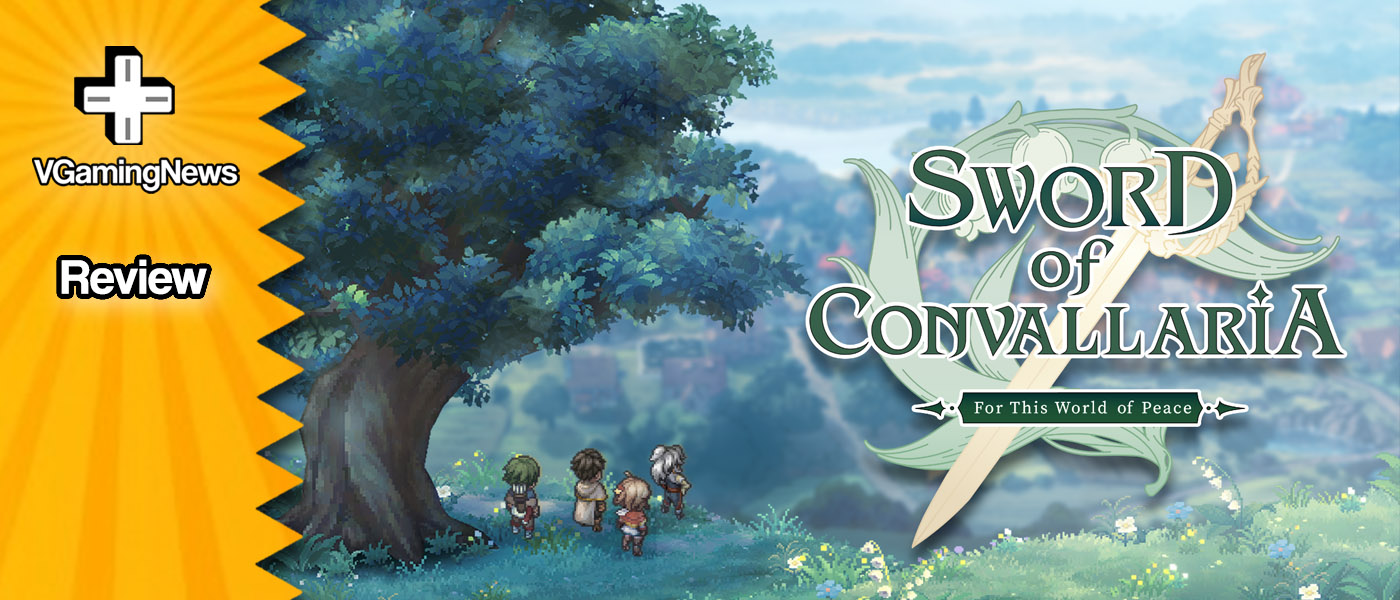

TRPGs might be the bane of my existence when it comes to gaming. I love them right up until the point that they get difficult, and then due to my epic level of sucking, they begin to annoy the crap out of me. As a result, I’ve taught myself to mostly stay away from them. My resolve was soundly tested however, by XD Entertainment’s newest offering, Sword of Convallaria, which immediately grabbed my attention. Some may have been put off by the dual launch on PC and mobile, but after reaching the 5-million downloads mark after only a week or so, I was intrigued to see just what all the fuss was about!
I was struck by the beautiful art style right off the bat, and visually, I don’t think I could like a game more than I do Sword of Convallaria. As a guy who grew up on SNES-era pixel art powerhouses like Secret of Mana, I was blown away by pristine graphics that throw back to my childhood absolutely perfectly. The characters are wonderfully represented on screen, with Epic- and Legendary-level characters boasting especially impressive sprites – but then, even the run-of-the-mill footsoldiers are wonderfully characterful. Levelling up the prettiness even further, XD have folded modern lighting and water visuals in alongside the traditional pixel art, and the final effect really is a sight to behold.
Also standing out is the character artwork, which has been impressively penned in an expressive anime style. Each unit, from the lowliest grunt to the mightiest hero, is portrayed with a beautiful art card that really helps translate the pixel art sprite into a more real figure that you can better connect with from a story standpoint. As you’d expect, the characters are showcased best in the story mode, where you get to learn about their histories and relationships, and even listen to the characters interact, as all the key players are fully voice-acted in Japanese, Korean and Chinese. (I’d have liked an English dub too, and hopefully that comes in the future, but I was left impressed by the Japanese vocal talent, which is a who’s who of popular anime series and video games.)
At a Glance
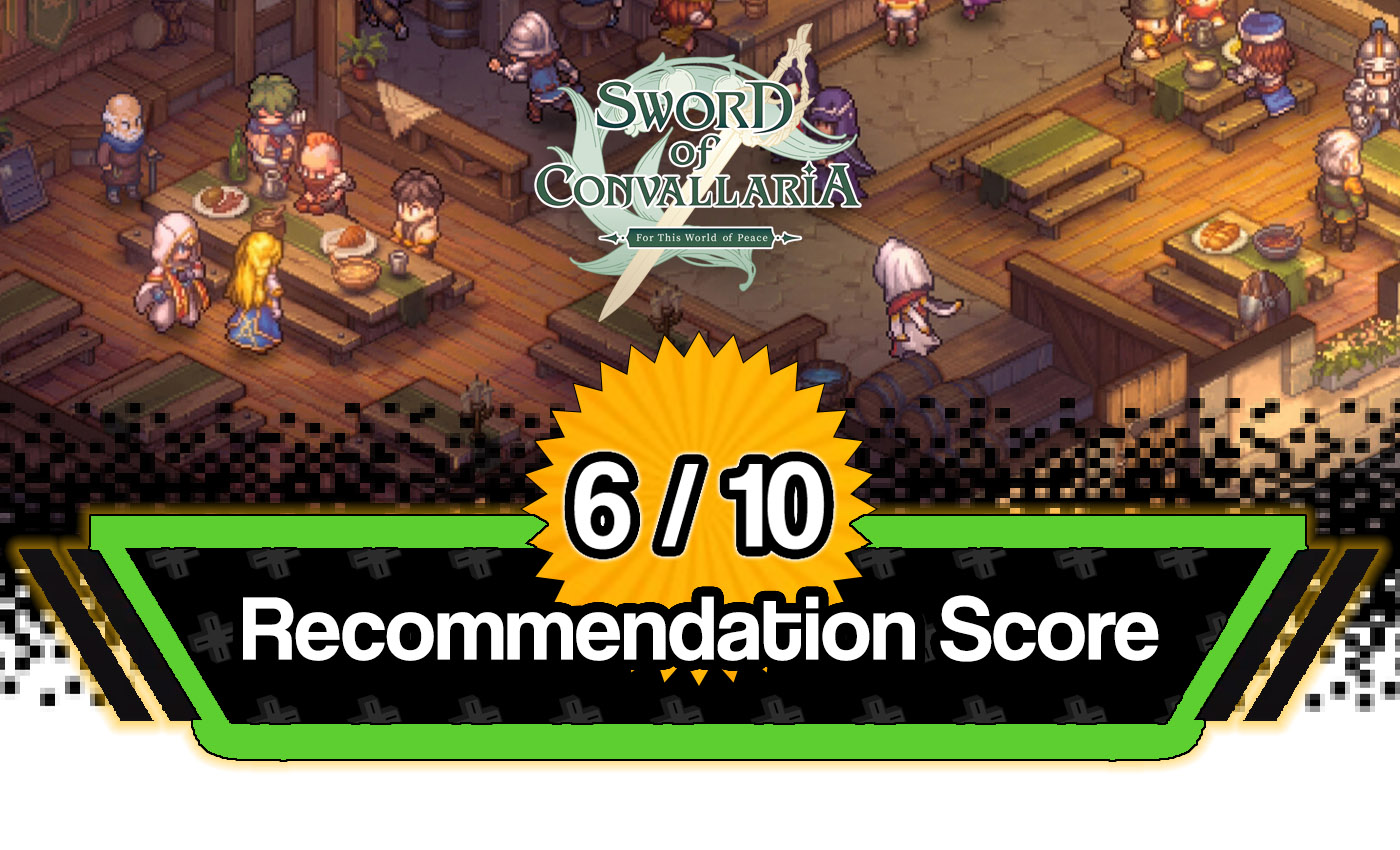
| Positives | Negatives |
| + Top-class artwork + Stylish characters in an engaging (if convoluted) plotline + Complex battle system with tonnes of nuance | – Heavy use of gacha mechanics and microtransactions – Randomised characters completely unbalances the gameplay – Menus are very ‘click’ heavy |
| Available on: | • PC (Steam) • Android • iOS |
Find out about our scoring policy here.
I found the story mode fun, if not a little all over the place – as is customary with many JRPGs. You’re introduced to the main characters, who make up the eponymous Sword of Convallaria, a mercenary group who’ve banded together to protect their homeland, and to a mysterious talking cat called Kuro, who seems to know altogether too much about the universe. With some instruction from your new feline guide, you’ll learn that the world is made up of many dimensions, and moving between these realms allows you to affect the flow of destiny, changing the outcome of events and shaping the fates of your friends and the world. The characters you meet are bold and likeable, though you may have to forgive some of their trope-laden archetypes, like the drunkard mercenary leader and their fiercely loyal adoptive children.
As you progress through the early portions of the game, you’ll recover tarot cards which you’ll use to power up an ancient machine called the Astraraium, and each new card opens up a new dimension to you and your pals, allowing you to take part in various missions and battles. You’ll access all these game modes from the hub world of Elysium, where you’ll also manage your characters, interact with them between levels and even build a cosy home for them to live in. I loved the tarot aesthetic to the dimension hopping, though I was less fond of the incredibly drawn out ‘tutorial’ phase, which continues to drip feed you new mechanics after more than 10-hours of gameplay!
Thoroughly deserving of praise though, is the soundtrack, scored by RPG legend, Hitoshi Sakimoto. Having written the soundtracks to tonnes of famous RPGs, dating all the way to Ogre Battle on the SNES back in 1993, through such favourites as Final Fantasy Tactics, Vagrant Story and Valkyria Chronicles, Sakimoto brings exactly the kind of pedigree you’d want for a new and emerging RPG title. With all the highs and lows of a true adventure, this is a soundtrack to score the most nuanced tale and drive the most epic of battles.
Getting into the meat of the game, however, things are much more up and down. Now, I’m on record as saying that mobile phones can be a viable platform for gaming, and I stand by this statement, but it only took a few minutes of playing Sword of Convallaria to understand why mobile gaming has such a bad reputation.
First of all, absolutely everything in Sword of Convallaria is stashed behind a sub-menu, and requires a multitude of clicks to resolve. Being faced with the interface for the first time, I’ll admit to being somewhat overwhelmed. The UI is absolutely covered in icons, and none of them are labelled (presumably to save space on screen). As you randomly click your way through the various screens, you’re met with all manner of shops and ‘quests’, which all seem to require different collectables to interact with. There’s little to no meaningful explanation for what anything is, and I was loath to spend anything, in case I was unknowingly squandering hard to gather materials. Annoyingly, there just seems to be the expectation that you’ll just figure it out as you go.
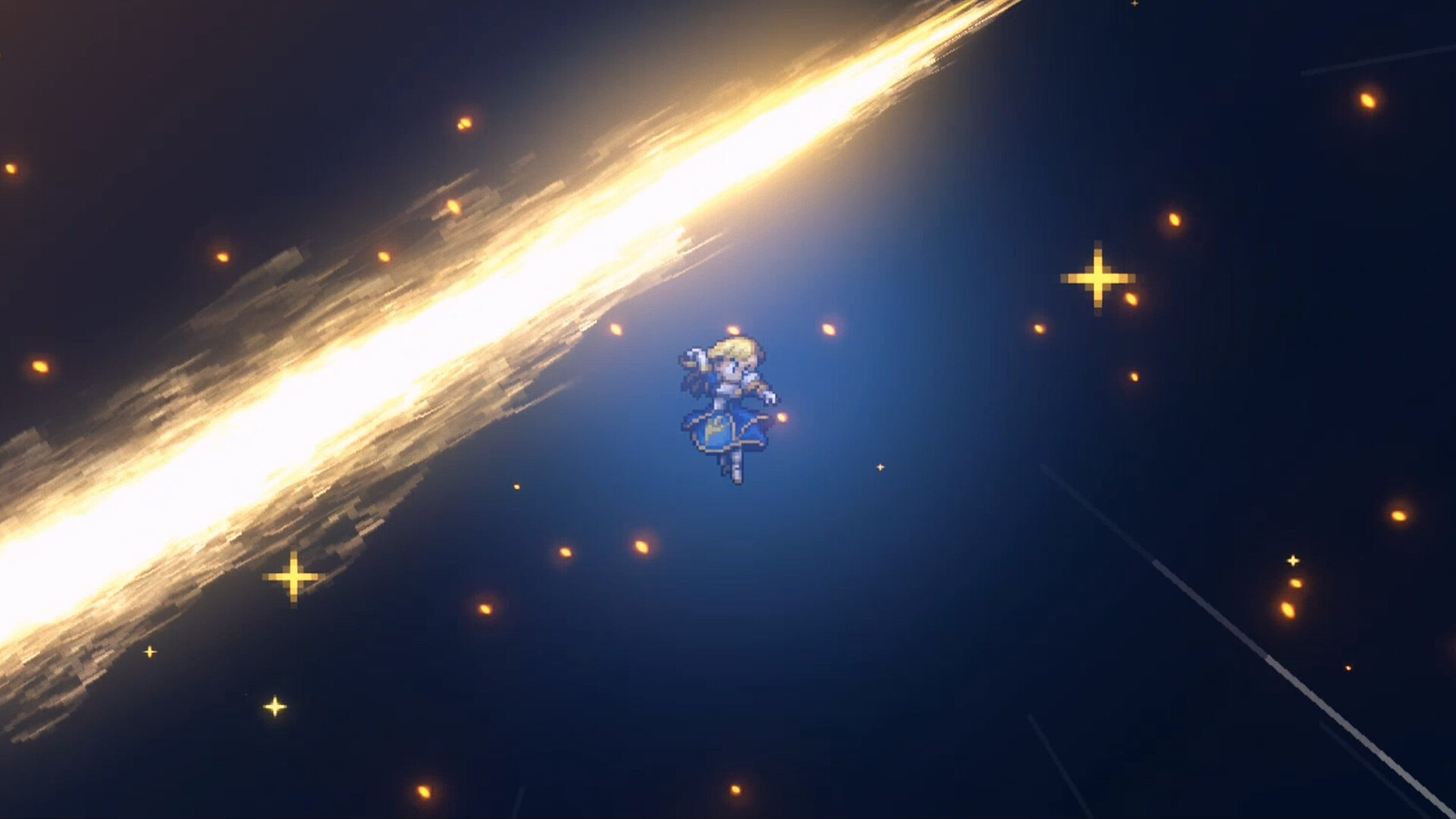
Also, this may be a free to play game, but that doesn’t mean it isn’t out to make a whole bunch of money. Yep, you know what I’m getting at – microtransactions.
Like most TRPGs, your units are your main asset, and gathering new units is where my first main gripe comes in. You’ll unlock new characters by ‘summoning’ them, and by that I mean you’ll spend one of the (roughly) 50 currencies to pay for randomised character cards, gacha style. As with all these luck based systems, the very best units have eye-wateringly small chances of showing up, and you’ll have to either farm the quests until you reach retirement age or unleash the power of your credit card to stand any chance of unlocking the entire roster. I would never begrudge developers making money from their games, but I find microtransactions attached to percentage-based mechanics to be distasteful at best and downright predatory at worst.
Using the free currency you unlock as part of the early story, I was fortunate enough to unlock a couple of Epic- and Legendary-level characters, all of whom can be used right away and with no restrictions from a progression stand point. This presents another problem, as the abilities of these characters are incredibly overpowered versus your run-of-the-mill baddies, and you’ll simply waltz through the levels if you manage to land them in your party. This ‘with rarity comes power’ model further underlines the need to gather the very best (and hardest to acquire) characters, smashing any illusions that Sword of Convallaria isn’t solidly a pay-to-win experience.
A final annoyance, like many mobile games, in order to extend their lifespan and keep you coming back, you’re limited in how many missions you can play in any given session. Each level comes with an Endurance cost attached, and once you’re out of Endurance, you’ll have to put the game down and come back later. Of course, if you really want to keep playing, you can use items to replenish your Endurance… What? You don’t have any Endurance items left? That’s okay – OF COURSE, you can buy them with real life currency to keep on going. *sigh*
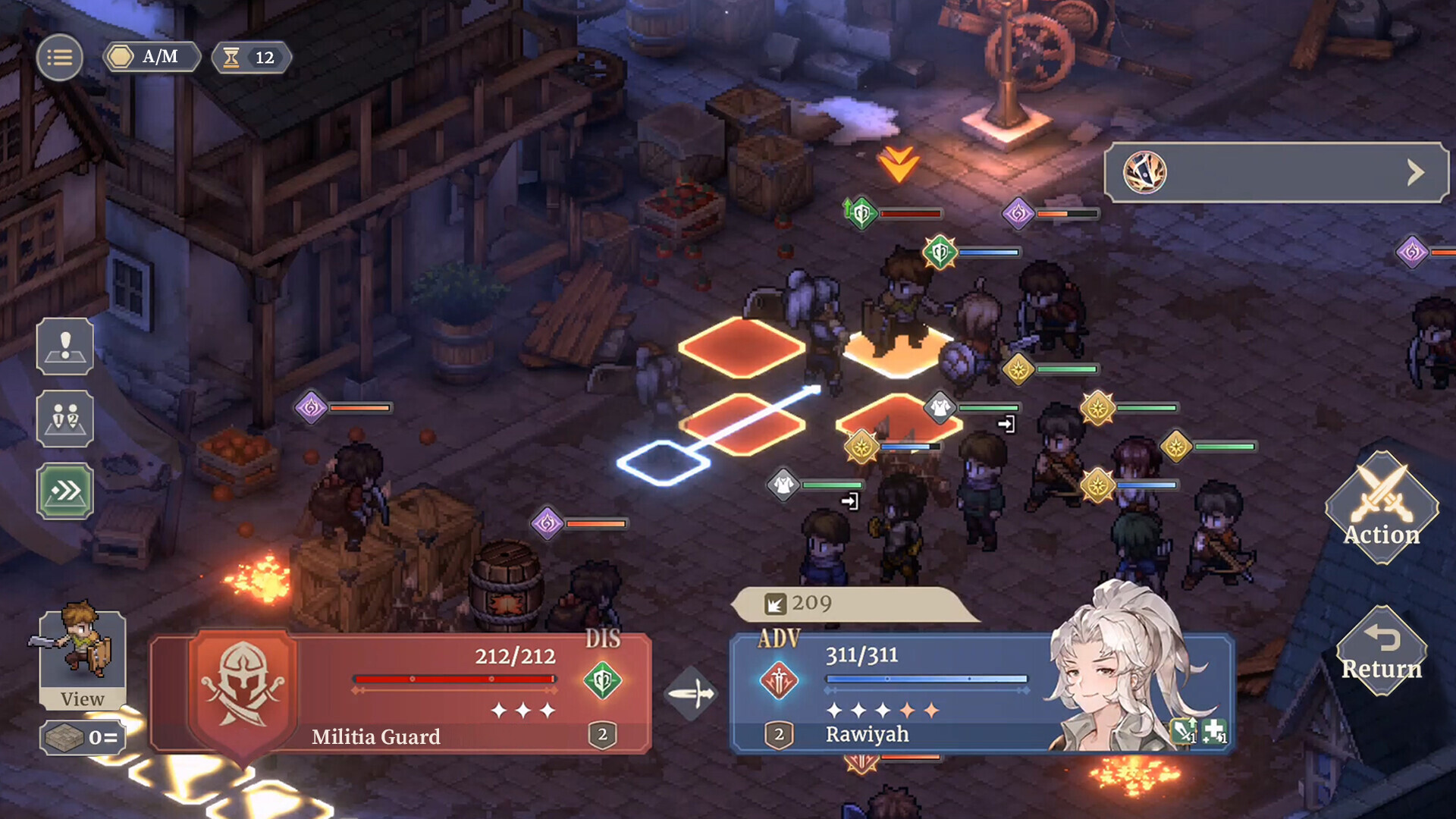
I feel bad griping about now well established (but admittedly gross) industry practices, especially since the actual gameplay in Sword of Convallaria is so solid.
From a pure TRPG standpoint, there really is a lot to like. There’s a host of different unit types, each with their own strengths and weaknesses (in a rock-paper-scissors style cycle), and there’s a plethora of abilities and special attacks to unlock that makes each unit valuable in different situations. You’re offered a variety of area of effect and ranged attacks from early on, and understanding how to best utilise all your troops is a fun exercise – I just wish the unlockable legends didn’t strong arm their way into your roster every time through their sheer betterness to the standard options.
Like the character sprites, the environments are lovely to look at, and come with a multitude of details to keep you on your toes. From defensive blockades and staggered terrain that requires real planning in your movement, to interactable items like exploding barrels that you can use to your advantage, there’s plenty to think about. Eventually you’ll also unlock ‘Tactics’, which are effectively battlefield-wide powers that can turn the tide of combat with just a couple of clicks, and understanding how to best utilise these is imperative to progression if you don’t want to put your hand in your pocket to get by.
Overall, Sword of Convallaria leaves me torn. On one hand, the stunning artwork, impressive soundtrack and detailed tactical combat are all huge positives that would normally propel the game to a much stronger recommendation. But on the flip side, the time-restricted gameplay, unbalancing gacha aspects and aggressive microtransactions are pretty sizable turn-offs. Perhaps more palatable to experienced mobile gamers than traditional TRPG fans, it irks me that so much potential is buried beneath so many unsavoury pay-to-win mechanics.
In the interest of full disclosure, VGamingNews was provided with a copy of the game in order to conduct this review.
Thanks for taking the time to read our review, If you’d like to support us further, please consider buying us a coffee!
Codename: Ocean Keeper
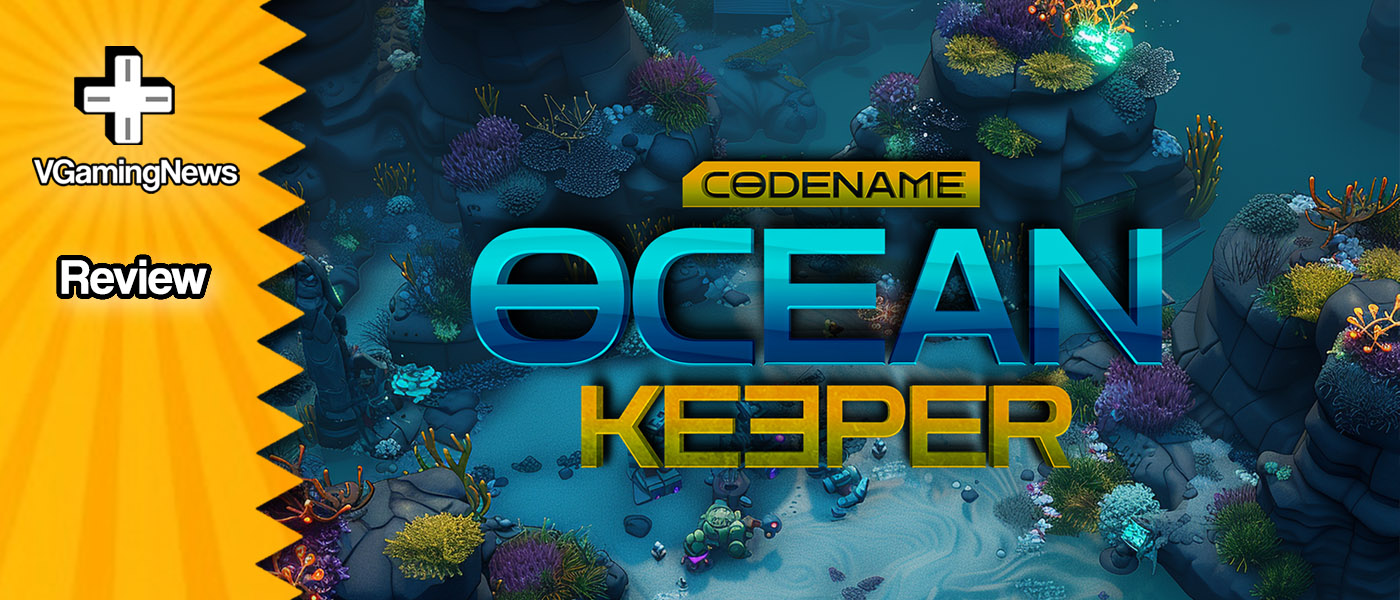

Codename: Ocean Keeper is a roguelike, bullet hell, dungeon crawler-type game that comes to us from the Ukrainian studio RetroStyle Games. My initial impression of the game was great, as it took me back to my days on the school computers playing a game called Motherload circa Miniclip.com. Shoutout to all those Motherlovers out there. I loved that game, so I was excited to see what Codename: Ocean Keeper had in store. The trouble is, the more I played it, the more I found fault and lack of polish. It is worth noting however that this game has only just been released in early access, and the developers are so active that mid review they brought out multiple patches that continue to address issues I have. So time to suit up, and let’s dive in.
This is an abridged version of our Ocean Keeper video review, which can be seen here:
There isn’t much, if any, of a story to delve into here, at least for now. The premise is simple: Start each round in your mech on the ocean floor, dive into the nearest cave, break rocks and collect shiny gems, return them to you mech in time for the wave of baddies and blast them away before launching yourself into the depths of another cave. Between these waves, you upgrade yourself and your mech with said shineys to improve exploration and survivability. Rinse and repeat until inevitable demise. Along the way you collect meta coins to permanently upgrade or unlock weapons or gadgets for either your diver or your mech, improving your performance capabilities in each subsequent run.
As ever with any roguelike game, you start off with not much more than a hope and a dream, where you do your best to cling on to dear life until you can upgrade yourself bit by bit. I usually like this challenge; see how far you can get early on based on mechanical skill instead of relying on abilities and upgrades. But at the risk of simply being told to ‘git gud’, I found the beginning of Ocean Keeper very unbalanced in what your mech could physically do versus a rather overwhelming barrage of creatures early on. This, combined with the slow accumulation of meta coins, and the effectiveness of upgrades being seemingly negligible, made the overall experience feel very ‘grindy’, with not much progress each run. I felt that each run was back from square one, and that I would get to a similar wave or boss before dying again. Each run would take between 20 and 30 minutes, but instead of feeling the urge to tackle it again, I would either take a break or turn off.
As the waves go on, the difficulty naturally escalates with new types of enemies spawning. You start with your standard goons that meander toward you, to worms that shoot green spit, glow bugs that run at you kamikaze style, and a mystery slug surrounded by a deadly Full Metal Alchemist looking pentagram that looks like it would do some serious damage. The occasional boss turns up, which so far looks to be only a handful in number, as on one run I found that they cycled back through them. The gems we collect are split between blue, yellow and green, and are each used in varying amounts to upgrade either the digger, mech, or any of the weapons and relics we collect. These relics are randomly found in caves, and are automatically used during combat, such as napalm bombs, missiles, and electric guns.
Summary
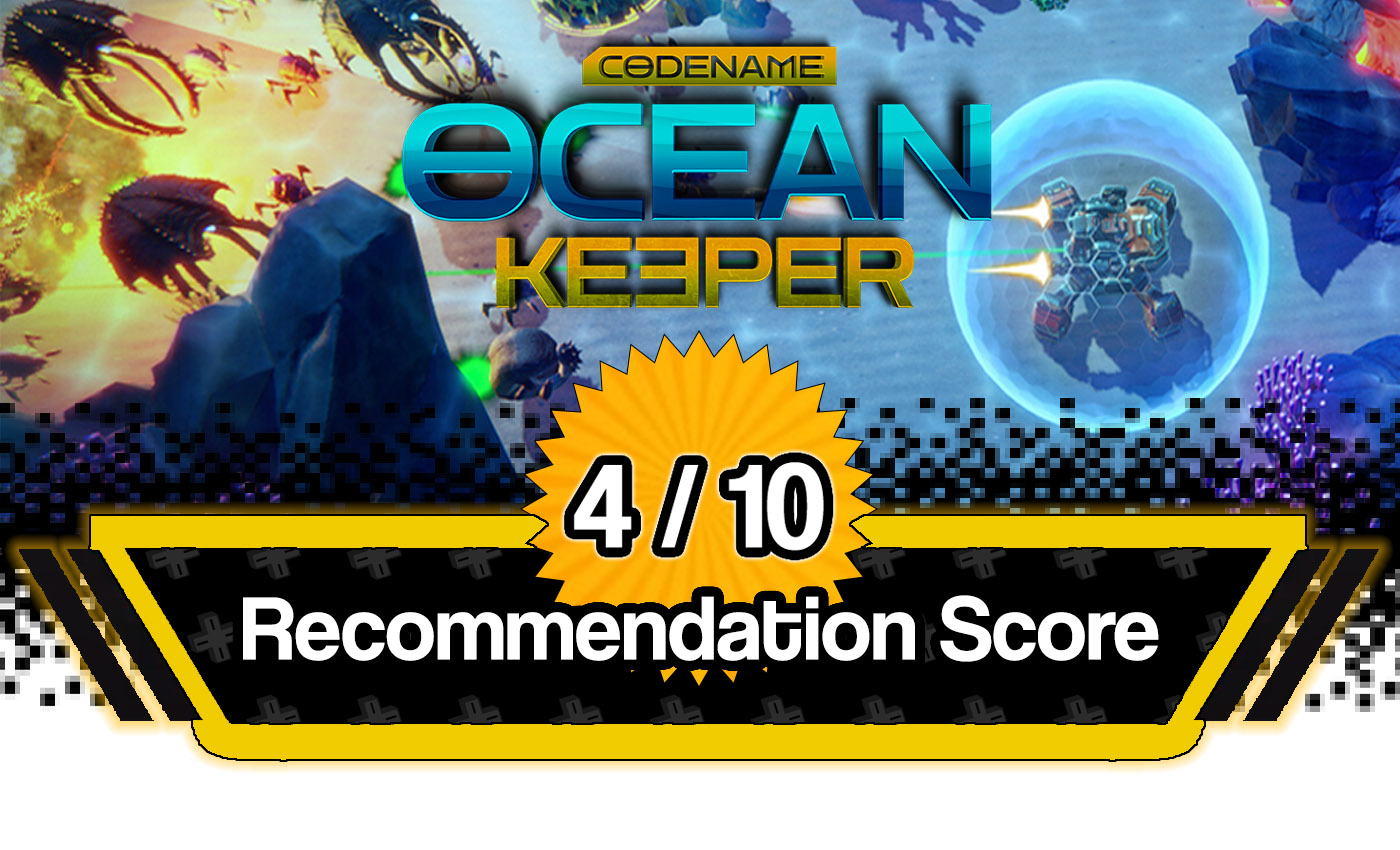
Positives |
Negatives |
+ Good concept and foundation of ideas + Active and engaged developers |
– Lack of content and variation – Unbalanced weapons, enemies and upgrades – Generally lacks polish, for now |
Available On |
|
The home interface comes across as pretty basic. There are sections for the mech and the digger, with each having subcategories to spend meta coins on new weapons, secondary abilities, additional slots for relics, and tools to explore the caves. Having unlocked all that is available so far, I found that some weapons and abilities are much more effective than others across the board, as opposed to being balanced to suit the individual’s playstyle. The starting machine gun for the mech for example, seemed to mow down the bugs much better than anything else, and the turrets you can place that both shoot and take aggro, along with being able to put up a defensive shield, were much more effective for survivability than any other option. As previously mentioned, each option can be improved using meta coins, however they all have arbitrary values that don’t seem to increase much with each investment. I’m hopeful that with more patches, each weapon and ability will be better balanced, and that the meta upgrades will feel more impactful overall.
When it comes to visuals, for me there is a big difference between the ocean crawling and cave diving. The ocean surface continues to improve with each patch, with more striking colour contrasts such as between lava pools and coral reefs, balanced with the smorgasbord of enemies that inevitably fill the screen. The cave sections remain bland, with each one almost being a carbon copy of the last. The only difference being where the gems are and if there is a relic or not. I’d find them more interesting if there was more time to explore, to then accommodate some variation in each cave such as traps, baddies, or different terrain to excavate.
When watching the trailer, the music that accompanied the action had me pumped. The trouble is the actual in-game music only kicks in during the enemy waves, and it’s different, not as kick ass, and is the exact same every wave. I’d like there to be some variation to the music, especially during the exploration phase instead of just hearing the dirt sound effect each time between the same 4 droning notes.
Performance wise, I frustratingly still find myself sometimes getting almost rhythmic frame drops during the mech fighting phase, even when putting everything to the lowest settings.I encountered a couple of crashes, the first was when opening the tab to repair health the exact moment I died. This looks to have been a recognised issue now and has been fixed. The second was a touch more infuriating, as it was during a marathon run of over an hour where I found myself racking in those meta coins with an almost fully upgraded killing machine.. RetroStyle Games do have something here; there is a foundation that is constantly being built on, tweaked and changed. You can even see some of the directions being taken by the locked or greyed out abilities, such as the digger’s punch or laser. This for me signifies there is more to come with more ideas yet to be rolled out.
At present, Codename: Ocean Keeper leaves a lot to be desired; it’s a game that is worth trying at least once in its early access, if anything to then appreciate the final product once it’s finished. As it stands, it’s a game that lacks variation, feels imbalanced, and generally doesn’t have much to get you back on the ocean floor. As for now though, it’s back to being a Motherlover for me.
In the interest of full disclosure, VGamingNews was provided with a copy of the game in order to conduct this review.
Thanks for taking the time to read our review. If you’d like to support us further, please consider buying us a coffee!
Noreya: The Gold Project
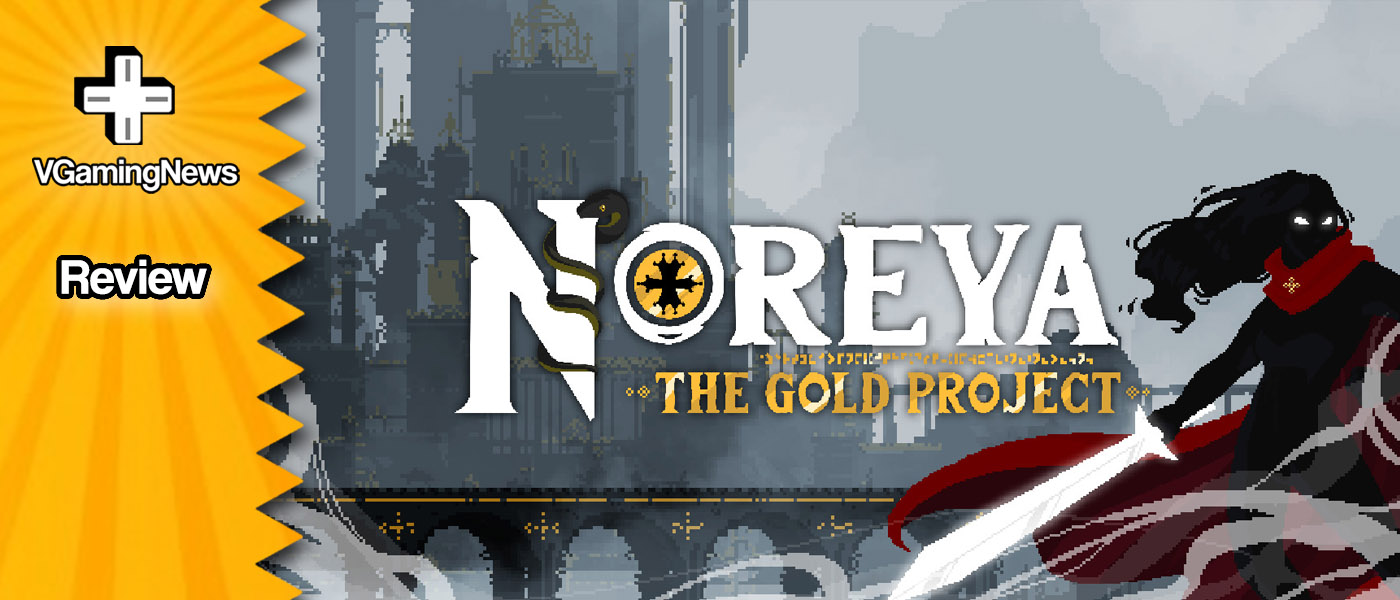

When it comes to gaming, I’m one of those players who will take every side path before finally returning to take on the main quest, and perhaps that curious mind is what makes me enjoy Metroivanias so much. I love exploring their sprawling maps, puzzling about how to get around before finally returning with all of my traversal skills, dashing and leaping between ledges and traps as if they weren’t there. It was with great enthusiasm then that I picked up Noreya: The Gold Project, from Toulouse-based indie developers, Dreamirl, who launched their debut title in the genre in June 2024.
The game begins with an animated cutscene showing a group of adventurers, merrily enjoying each other’s company around a campfire. Seconds later they are beset by creatures of darkness and are all slain, except for one – Kali, who becomes our protagonist. Instead of succumbing to evil and becoming a zombie like her friends, Kali instead becomes a kind of hybrid shadow-being, still part human but now under the influence of some dark power. We soon learn that this is the fault of the God of Gold, Auria, whose offerings of riches have corrupted the entire kingdom, turning almost every living creature into a mindless puppet, who can only seek more gold and more power. In direct conflict with Auria is Hemenis, the Goddess of Light, and it’s between these two self-serving deities that Kali finds herself torn.
At A Glance

Positives |
Negatives |
+ Responsive controls & wonderfully agile traversal + Excellent musical score + Attractive and moody pixel art environments |
– Far too much backtracking (even for a Metroidvania) |
Available on: |
|
As Kali, you traverse the vast world of Noreya, slaying monsters, collecting gold, and overcoming traps and puzzles. At a glance, the map might rival the scale of Hallownest, from Team Cherry’s genre redefining Hollow Knight, but whilst not being quite that big, the size of the world is certainly impressive. There are six unique biomes to explore, and each one is presented with attractive pixel art visuals and accompanying theme music that really showcase a mysterious and sinister world. Kali is depicted as a rather tiny sprite and many environmental elements are huge by comparison, offering a grand sense of scale for the world. I particularly loved the depiction and music in the opening area, Valsanre Forest, which is portrayed in autumnal golds and browns, and scored with a beautiful soaring theme song of synth-strings. This is a place that truly feels ancient, burgeoning with otherworldly mysteries and secrets.
The platforming and puzzling in Noreya are well designed without being especially groundbreaking, and has a stable middle of the road difficulty, which I appreciated. Getting around the map is great, as the controls are wonderfully responsive and Kali has a tremendous level of agility, making both exploration and combat a breeze. Speaking of combat, the battling in Noreya is pretty simple; you have a simple sword combo and a few unlockable special attacks, but no real dodge or parry skills to master, making this something of a spam-attack/brute force affair. Also bolstering the ease of combat is the rather ropey enemy AI, which often has baddies getting stuck on bits of terrain and simply waiting for Kali to put them out of their gold-plated misery. (I even killed two key bosses thanks to these hiccups, which is pretty disappointing.)
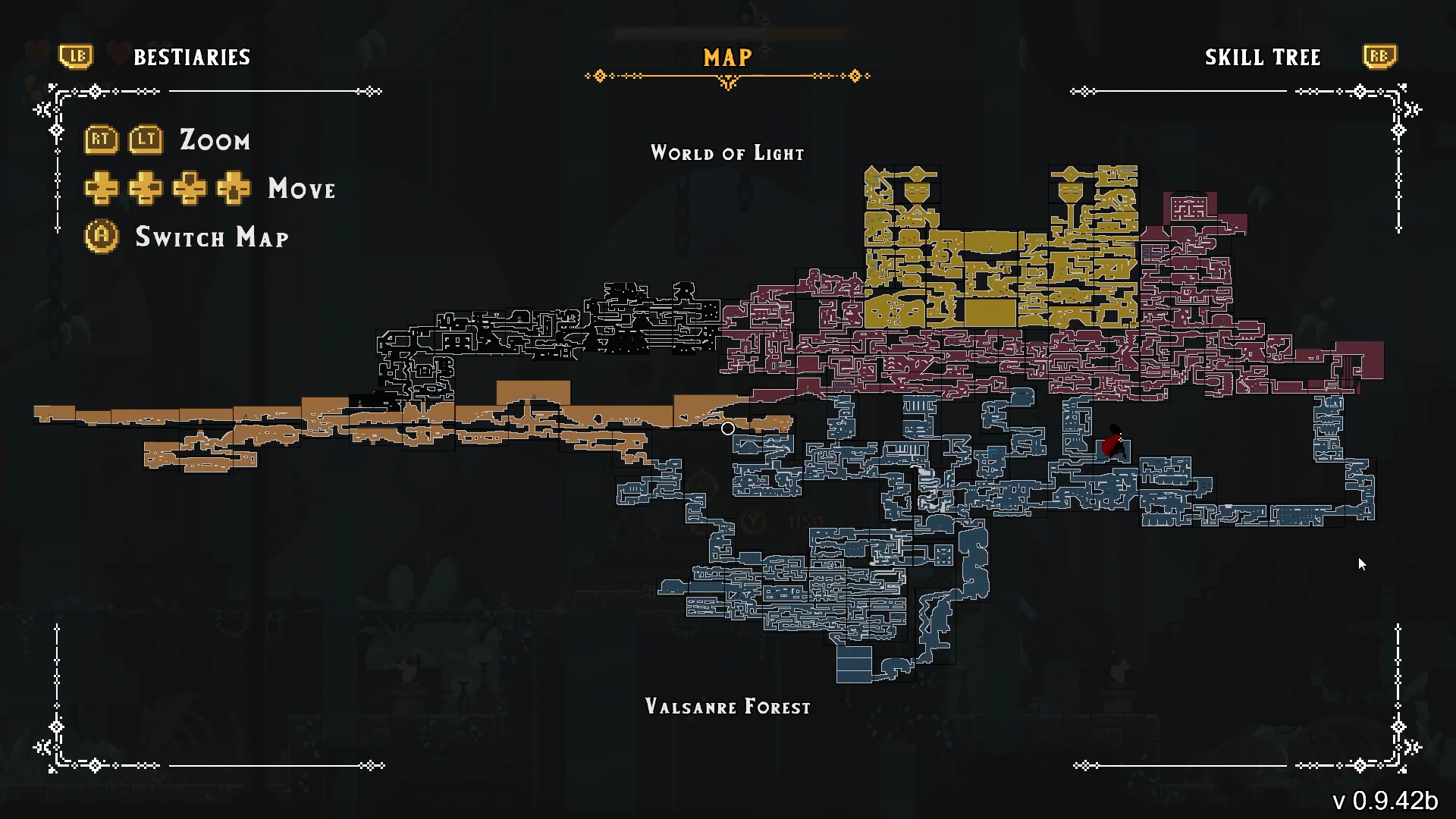
Noreya markets itself as offering each player an entirely unique experience, and while I certainly wouldn’t go that far, you are left to your own devices very early on. You’re quickly given the rough locations of the five guardian bosses you must overcome before facing the final boss, but you are free to explore the world entirely as you wish. While this level of freedom may enthuse some players, I found the openness something of a double-edged sword. Unlike most Metroidvania games, core traversal skills aren’t unlocked by defeating the key bosses in the game, but from sub-bosses who lurk in entirely random parts of the map. Your ability to fully explore the world is completely tethered to whether you’re lucky enough to stumble upon these abilities early on, or whether you finally find them after a lot of frustrating searching (like I did, some three hours later). I’d definitely have appreciated at least a little signposting towards these abilities, streamlining the significant amount of backtracking through one-way areas and cul-de-sacs, of which there are way too many.
The story, like the exploration, is almost entirely open, and I think it also suffers a little as a result. The tale of Noreya unfolds as you find statues, known as Steles, hidden throughout the world, and they read like diary entries from an ancient king, Aleph, who rails against the gods. There are more than 100 statues to find, and they offer veiled glimpses into the mission of Aleph and his motives, asking you to discern the specifics the more of them you discover. Now, I’m a big fan of fractured storytelling, but the plot in Noreya is entirely splintered. Once you uncover enough information, the story becomes an interesting one, but I wonder if some additional cutscenes or thoughts from Kali might have offered a little more engagement with the plot.
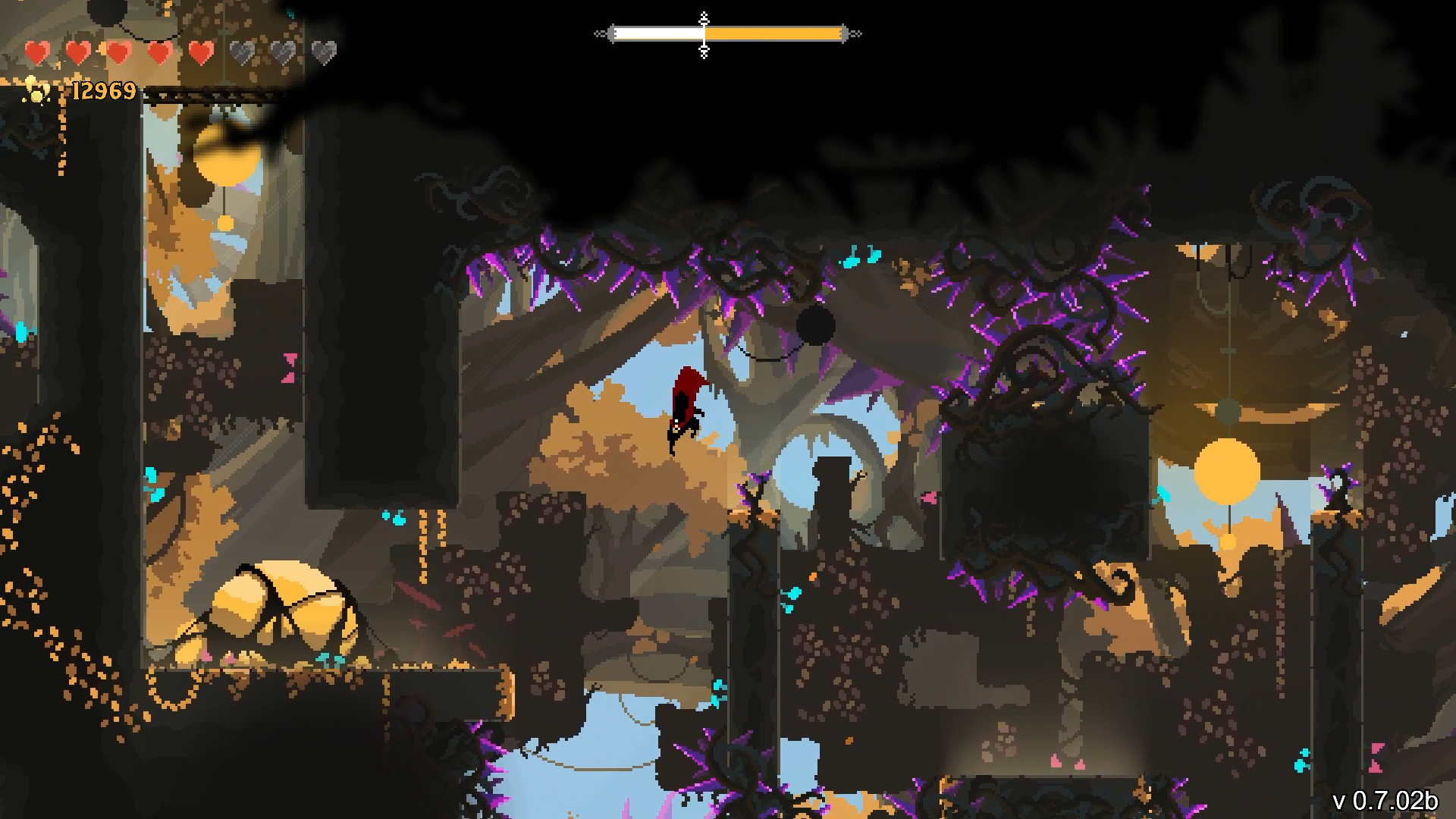
Also dotted throughout the kingdom of Noreya are huge plinths designed to hold statues to either of the gods, Auria or Hemenis, depending on your preferred allegiance. Practically, these statues offer you the opportunity to access and upgrade your skill tree and act as much needed fast travel points. With each statue you place, your devotion to that god grows, and with that so does their power. The strength of each god is tangible in game, as it directly impacts the world map: when Auria is dominant, Kali finds herself in the World of Gold, and conversely, when Hemenis is in ascendance, you travel through the World of Light.
While this may sound very impressive, I was a little underwhelmed with how this excellent idea was actually implemented, as there’s realistically very little difference between the two worlds. Yes, a handful of map screens change as your allegiance shifts, but that aside, there is nothing tangible to differentiate the worlds of Gold and Light, which is something of a shame. The idea of gods vying for control over the universe is an epic one, and it would have been nice to feel more of their influence on the world as they each take control. Perhaps offering up some different enemies or music would have been incredibly impactful changes, or at the very least, some minorly adjusted colour palettes to indicate which deity is in power. At the moment things feel like a bit of a half-measure.
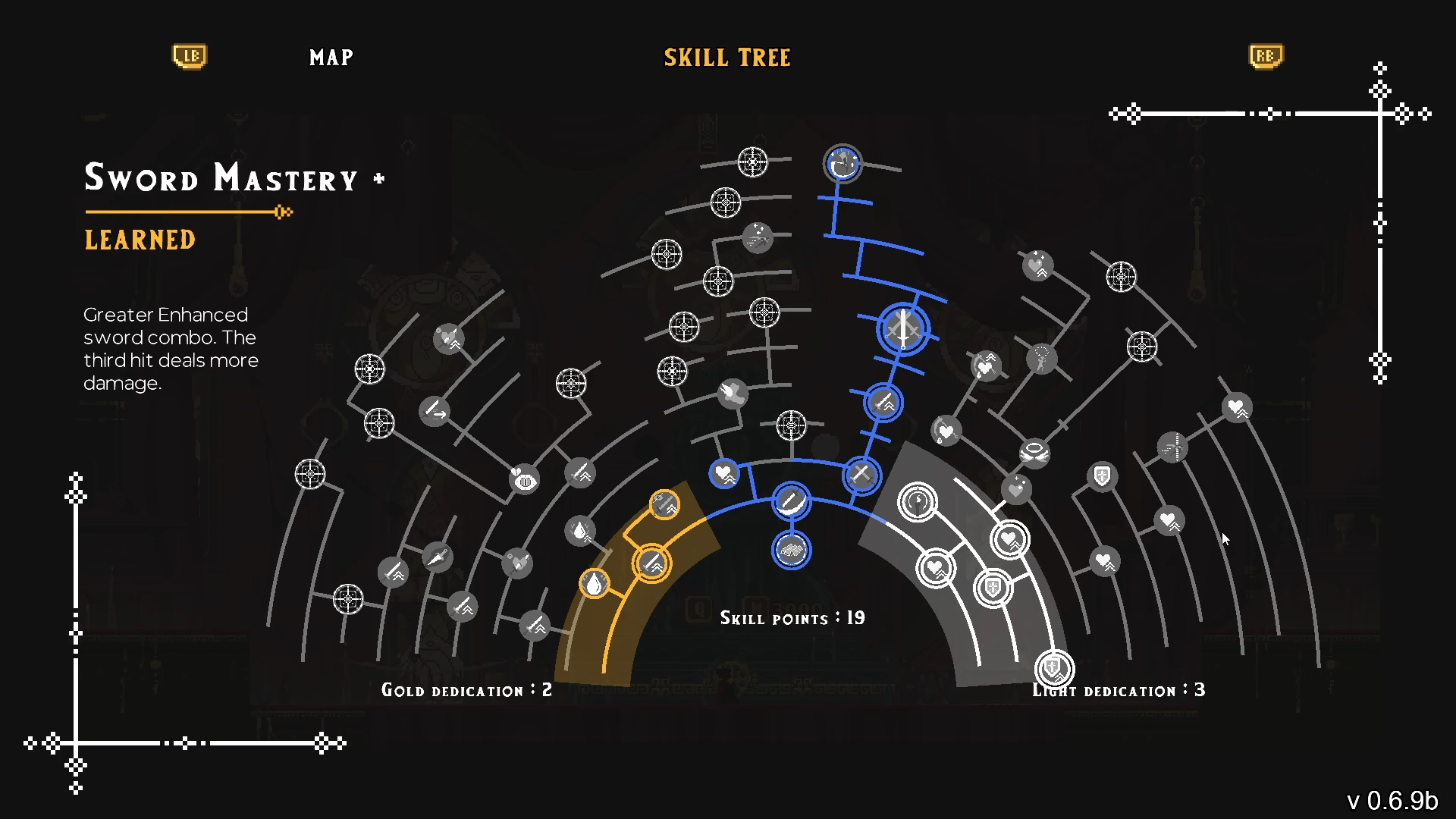
The warring of the two gods also has a direct impact on your progression as Kali, and thankfully, this is implemented much more impressively. The skill tree is split into three sections, with one dedicated to Gold, one to Light, and a Neutral section in between them. You can always access the skills in the Neutral section so long as you have enough Skill Points available, which you earn by offering gold at the deity statues. To gain access to the Gold or Light skills however, you are required to have a certain level of devotion to the corresponding god as a prerequisite. I really liked the idea of having to pledge your allegiance to one of the gods in order to access their most impressive abilities, as it not only encourages you to pick a side in their war (kind of), but also requires you to fully explore the map in order to find all of the available plinths and set down your statues.
That said, not everything runs smoothly with the skill progression, as the devotion system isn’t very well explained to you as a player. I can live with a little bit of early confusion about how the system works, but I was pretty annoyed that I managed to waste a good number of Skill Points by unknowingly shooting myself in the foot. You see, the dedication of the statues aren’t permanently set, and you’re actually able to change them between Auria and Hemenis as you wish (likely so that you can swap between worlds and access some new areas). This then changes your devotion level, which can wipe out any high level skills you’ve unlocked from one side of the skill tree without offering you so much as a warning beforehand. It may sound picky, but this is the kind of quality of life feature that should really go without saying.
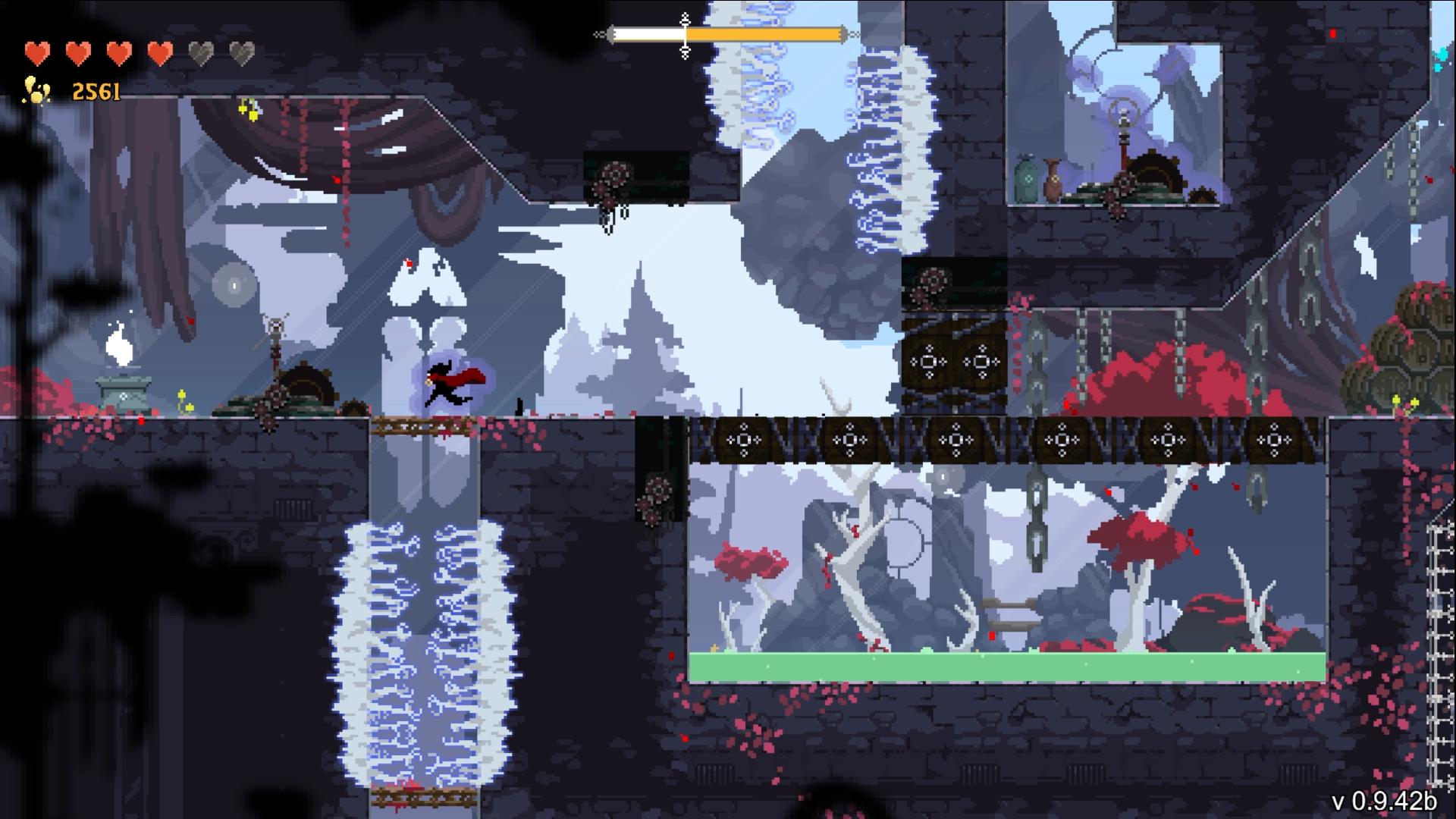
Unfortunately, this lack of attention to detail feels like a common theme in Noreya, and it tarnishes the glitter of a game that has a decent amount going for it. Whilst there’s nothing game-breaking, there’s a laundry list of niggly annoyances that eventually add up to a less than top-tier experience, leaving you with a final product that feels a little rushed. Whether it’s the semi-regular framerate drops, attack effects that don’t always act as expected, or the general lack of sound effects to accompany meaningful actions (like special attacks and teleportation, for example), I feel like Noreya: The Gold Project would benefit from a good few hours of spit and polish to help it live up to its shining title.
Overall, Noreya: The Gold Project is a sprawling Metroidvania that offers 20-hours of nimble exploration amidst some simple combat and a somewhat fractured plotline. Despite sporting some lovely pixel art visuals, a wonderful musical score and an intriguing premise, there’s a general lack of polish that left me a little wanting. Established Metroidvania fans will find a solid addition to the genre with plenty to enjoy, but in the end Noreya might serve as a reminder that all that glitters is not gold.
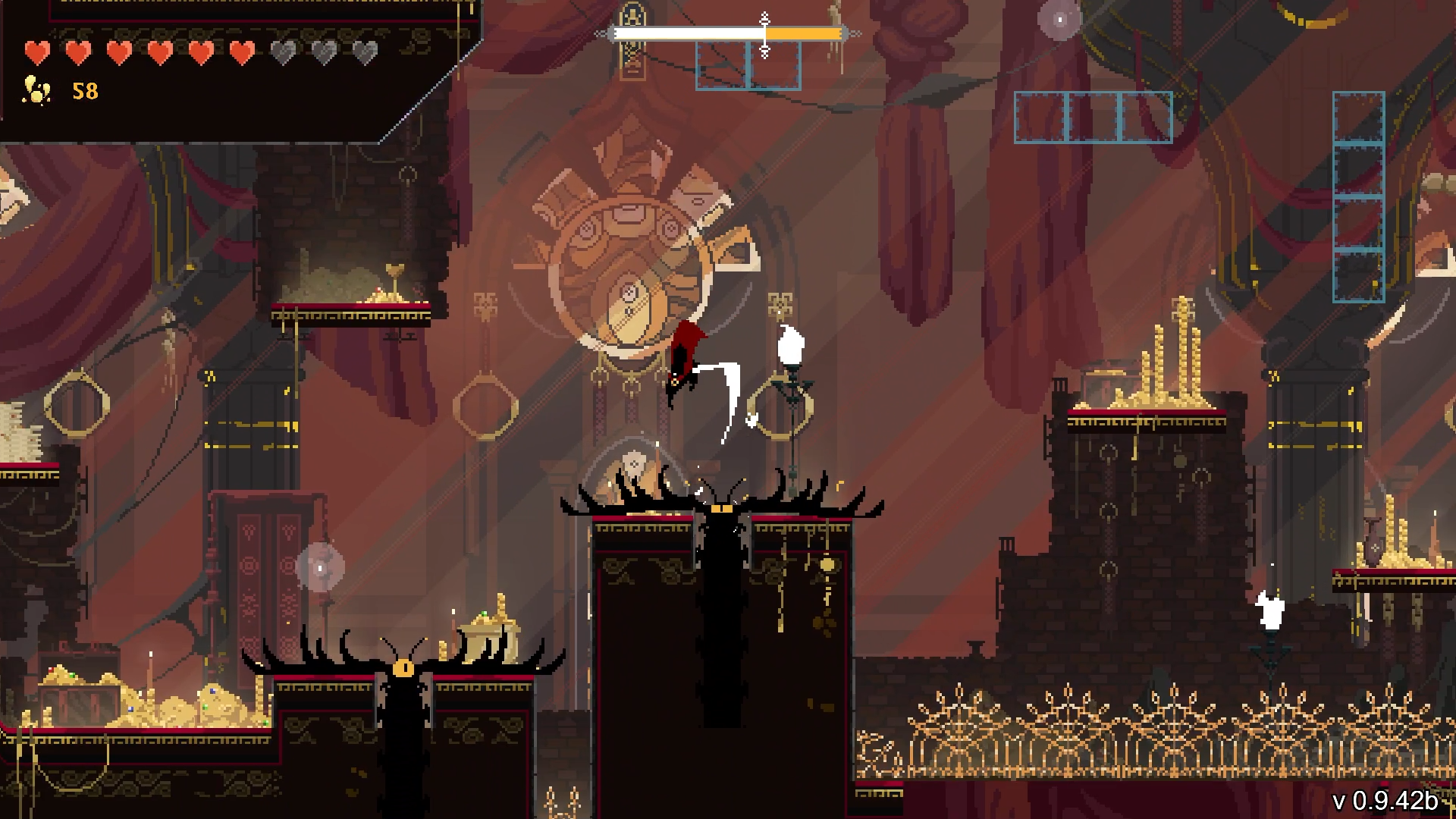
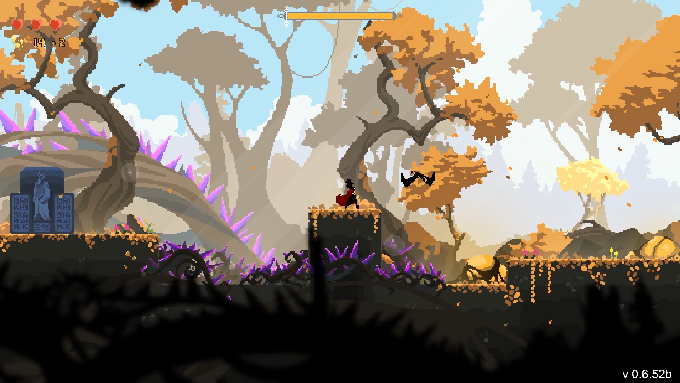
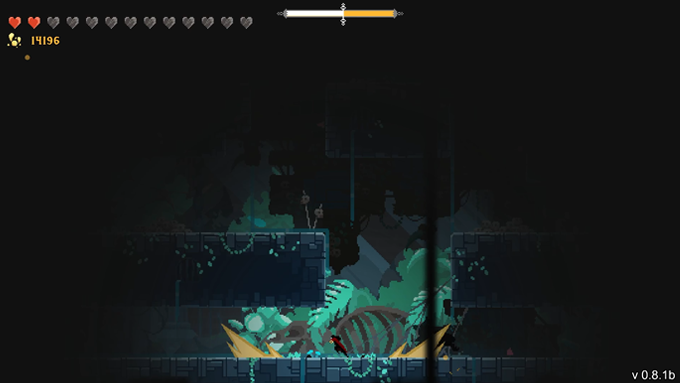
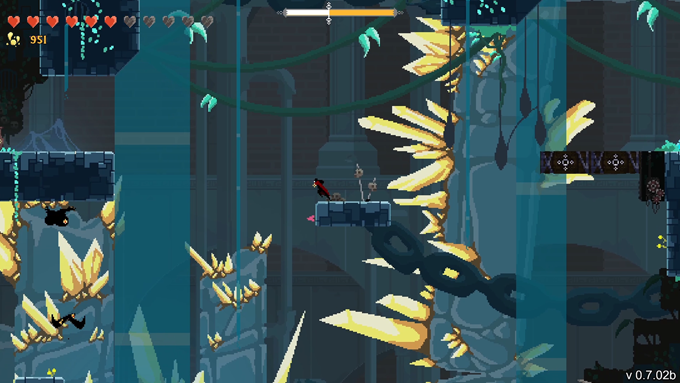
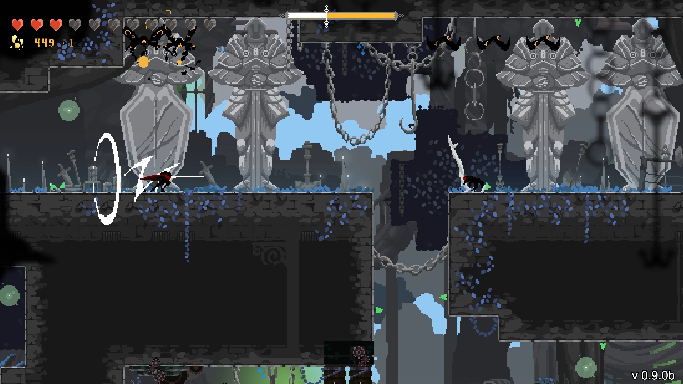
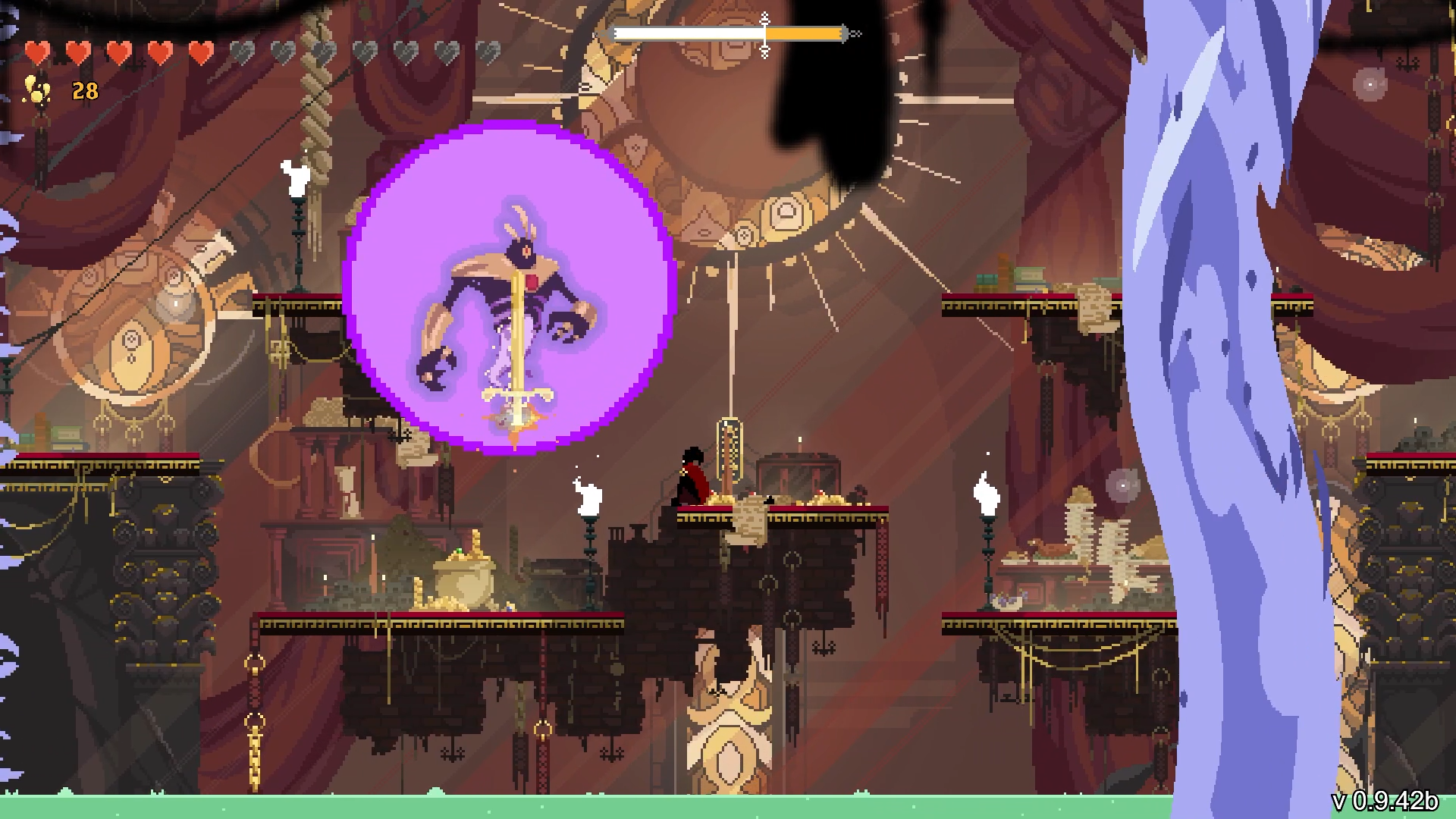
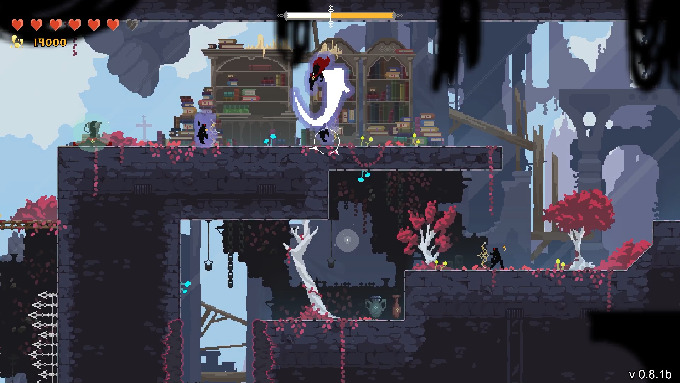
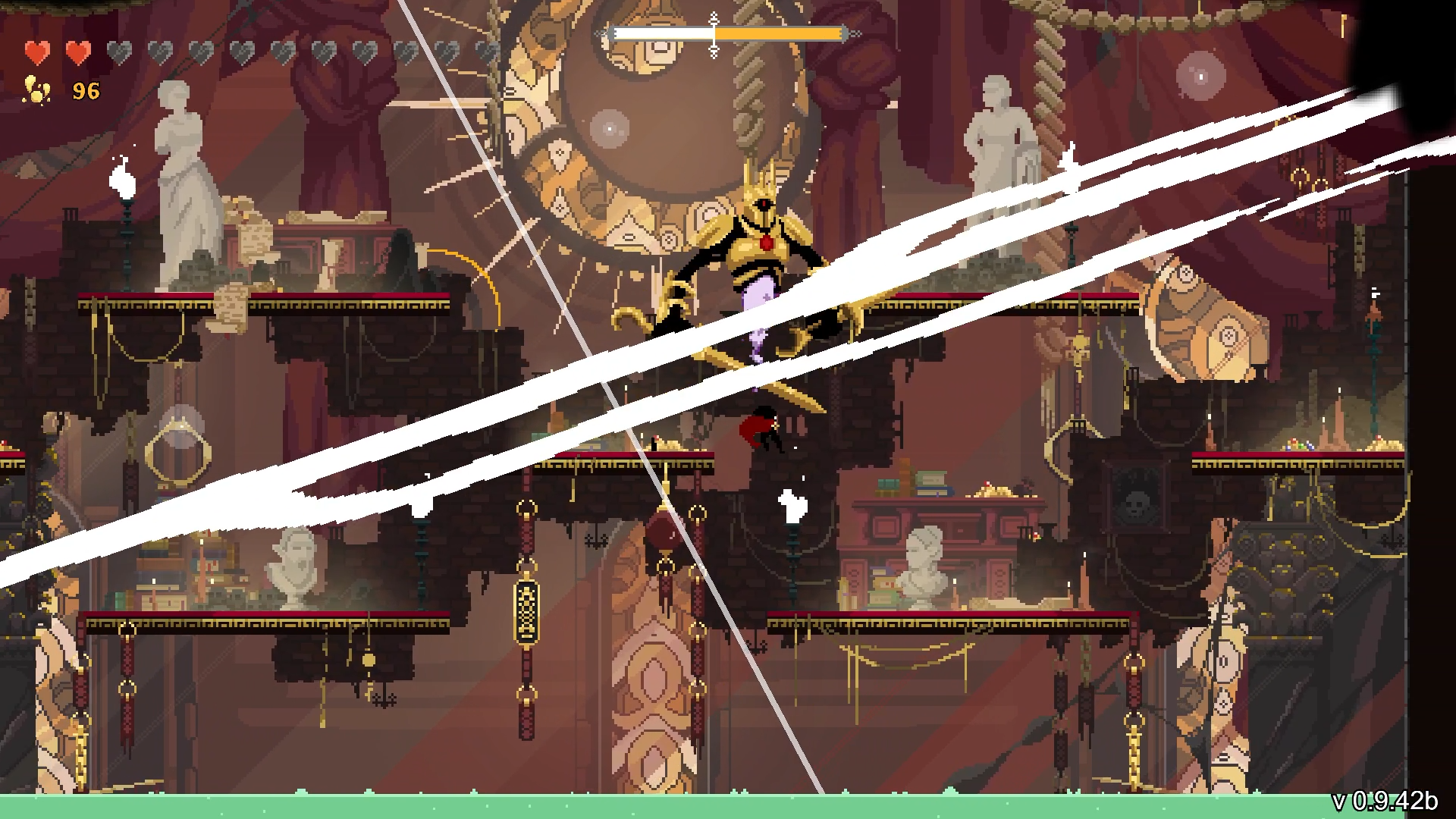
In the interest of full disclosure, VGamingNews was provided with a copy of the game in order to conduct this review.
Thanks for taking the time to read our review. If you’d like to support us further, please consider buying us a coffee!
We Were Here
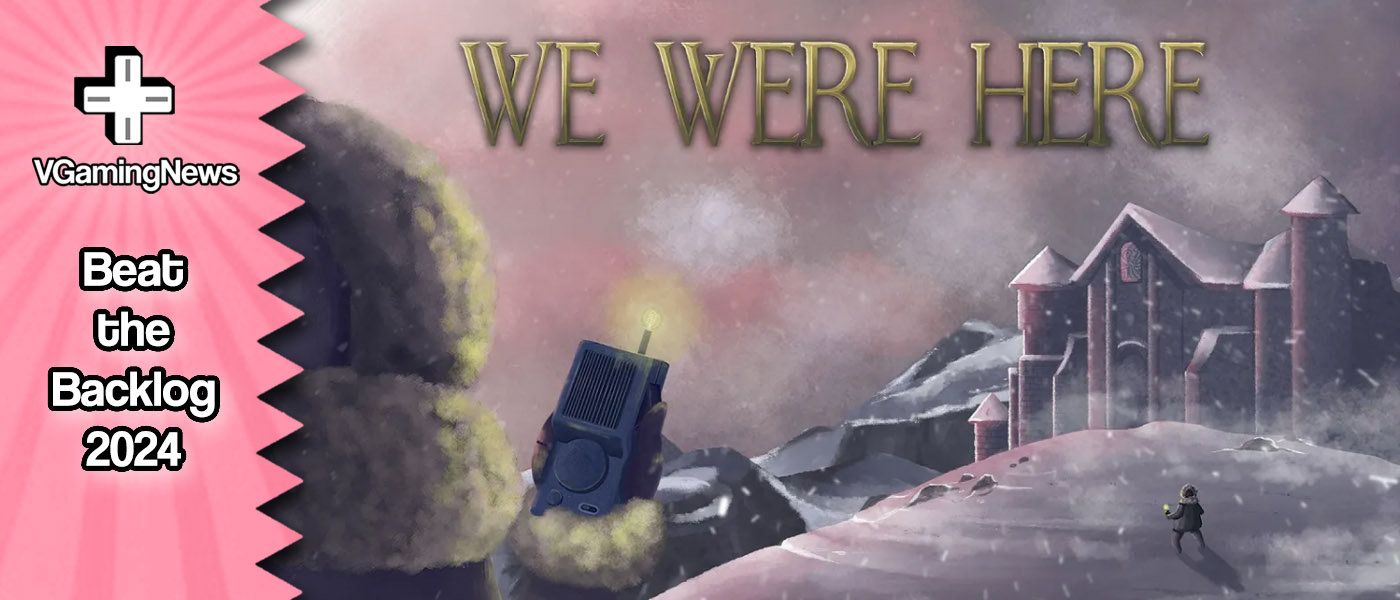

Drew has pledged to slowly but slowly churn his way through his sizeable stack of games for his ‘Beat the Backlog’ feature. Check out his main article to see what games he’s completed already!
It feels like cheating adding We Were Here to my Beat the Backlog feature since I only bought the series bundle on Steam a few months ago, but after the mammoth task of completing Ni no Kuni: Wrath of the White Witch, I was very ready for a quick win to get me back into the swing of things.
As with We Were Here Forever and We Were Here Expeditions: The FriendShip, I linked up with fellow VGamingNews writer, Gaz Jones, to stumble and argue our way through this collaborative asymmetric puzzler, since we both enjoyed the later entries so much.
Quickly giving us a sense of deja vu, things didn’t get off to a great start…
Immediately, we found that creating a room and inviting your pal in-game leads to serious audio problems -as in, you and your partner are entirely unable to hear each other- something of a killer for a game built around communication between players. Thankfully there is a workaround by sending a friend invite directly through Steam, but even that was hit and miss, requiring a few restarts before we could successfully hear each other. And then, some 30 minutes into our game, we each began to sound like Daleks for a phase before the chat cut out entirely, requiring us to restart the session and lose our progress to that point. Now, I will concede that the game came out in 2017, so it’s expected to be somewhat rough around the edges, but the voice chat not working consistently was a big pain in the arse. (The saving grace here is that the game is free, and while that shouldn’t be an excuse for functionality not to work, it does make you more patient with the whole thing.)
At A Glance
| WE WERE HERE | |
| Date Added to Backlog | 27/09/2023 |
| Price Paid | £0.00 |
| Positives | + Fun visual style + Entry level puzzles to encourage new fans + An interesting retrospective at the start of an excellent franchise |
| Negatives | – Severe audio issues, requiring multiple restarts – Puzzles too simple for experienced players – A little too ‘toy box-y’; lacking in atmosphere |
| Recommendation | 5 /10 |
| Played On | PC |
| Also Available On | PS5, PS4, Xbox Series X|S, Xbox One |
| Find out about our scoring policy here. | |
Want to see the whole of Drew’s backlog? Check it out here and suggest something to play over on our socials!
Chat issues aside, looking at We Were Here, you can clearly see the strands of DNA that start in this inaugural entry and continue to run all the way through to the latest games in the franchise. The intro is made up of hand drawn storyboards that are a significantly lower budget version of the engaging set-ups that Total Mayhem Games would bring to life later on. The visuals too, while lacking the playful chunkiness that would become the trademark style, are very similar, and offer fun and characterful environments for you to explore.
Getting into the meat of the gameplay, you can almost feel the tentative first steps into puzzle design, with almost neon-flashing clues to help you solve the first few, just in case you become impatient or frustrated too soon. A certain level of simplicity runs the span of the game, which Gaz and I finished a couple of times over about three hours. I wouldn’t say we were challenged by any of the puzzles until the very last one, and I guess that is something of a double-edged sword. On one hand, We Were Here rightly acts as a fantastic introduction to the asymmetric puzzle genre and should encourage new players to seek out more of the same, but for more experienced players, there isn’t too much to tax your brain. Horses for courses, I suppose.
Now, that final puzzle I mentioned is important beyond just offering a nice crescendo from a puzzle-solving standpoint, it also feels like a real launch point for another element that makes the We Were Here franchise so enjoyable – an excellent sense of atmosphere. For the most part, this first entry feels a little bit like playing in the developers’ toy box; they’ve created very bespoke items and scenarios to fit the needs of the puzzles and it’s clear that you’re running through a very manufactured scenario. Something of a spoiler alert, the final puzzle is a very cool scene that asks you to accurately dress a theatre stage before a terrifying marionette monster has time to creep up and kill you, and this was the first time I felt a real connection with the characters, and a sense of urgency to solve the riddle before our adventure was ended.
Sure, there are plenty of puzzles that can kill you before this one, but this was the first real example of Total Mayhem Games building a very palpable sense of atmosphere to go alongside the puzzle solving – clearly paving the way for some of the excellent tension later showcased in We Were Here Forever. Gaz and I have pledged to play the sequel, We Were Too, very soon, and I’m genuinely excited to see how the success of this last level might seep into the next game in series, offering a more rounded and adventurous experience.
In a vacuum, it’s hard to recommend the original We Were Here – it may be free, but it’s plagued by audio issues throughout and is decidedly simpler than the newer entries, inviting entirely the wrong kind of headache. But from the perspective of the franchise as a whole, it does offer a cool window into the origins of We Were Here, and it’s obvious that the seeds of many great ideas are already beginning to take root in this initial entry, shaky though it is.
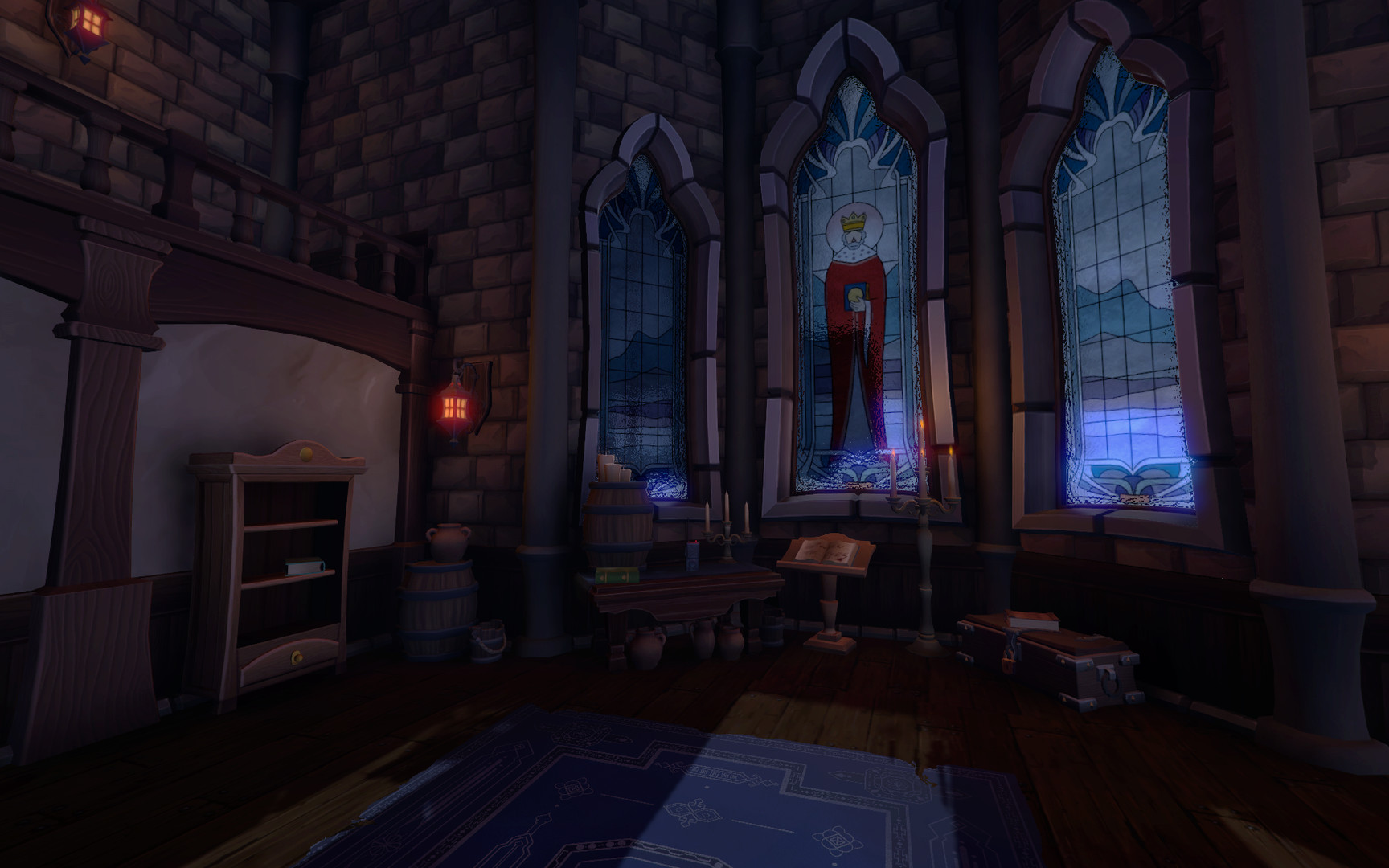
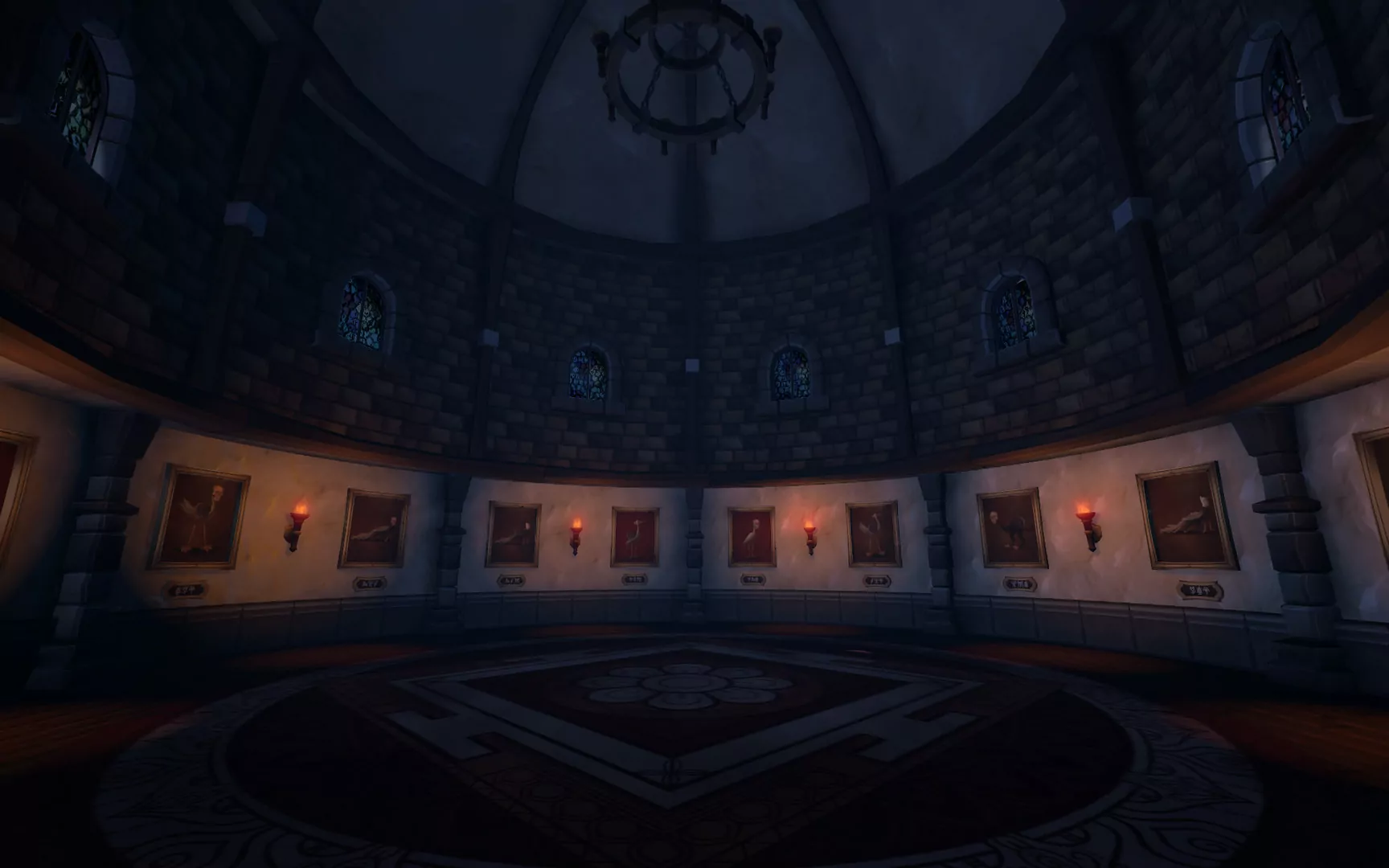
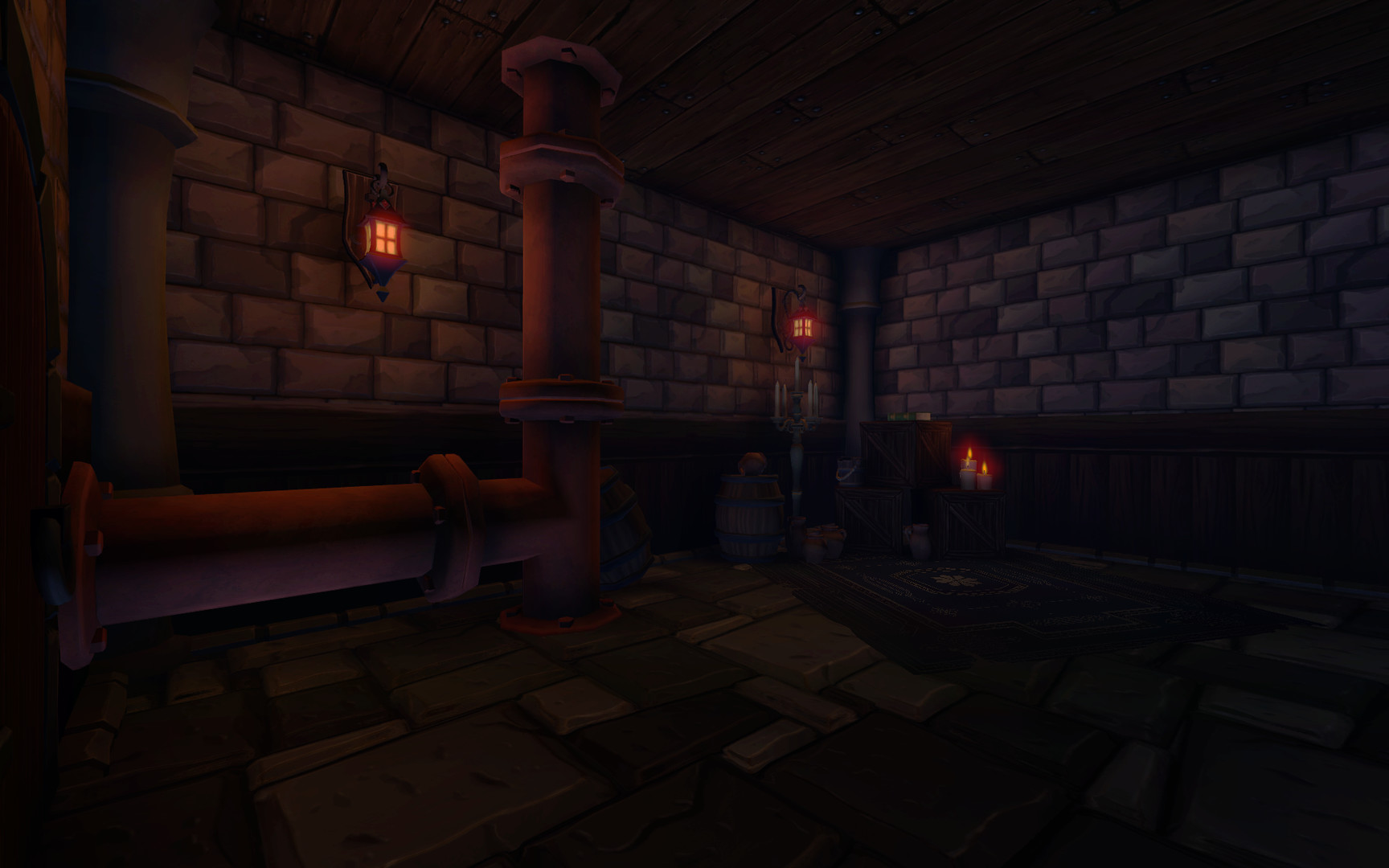
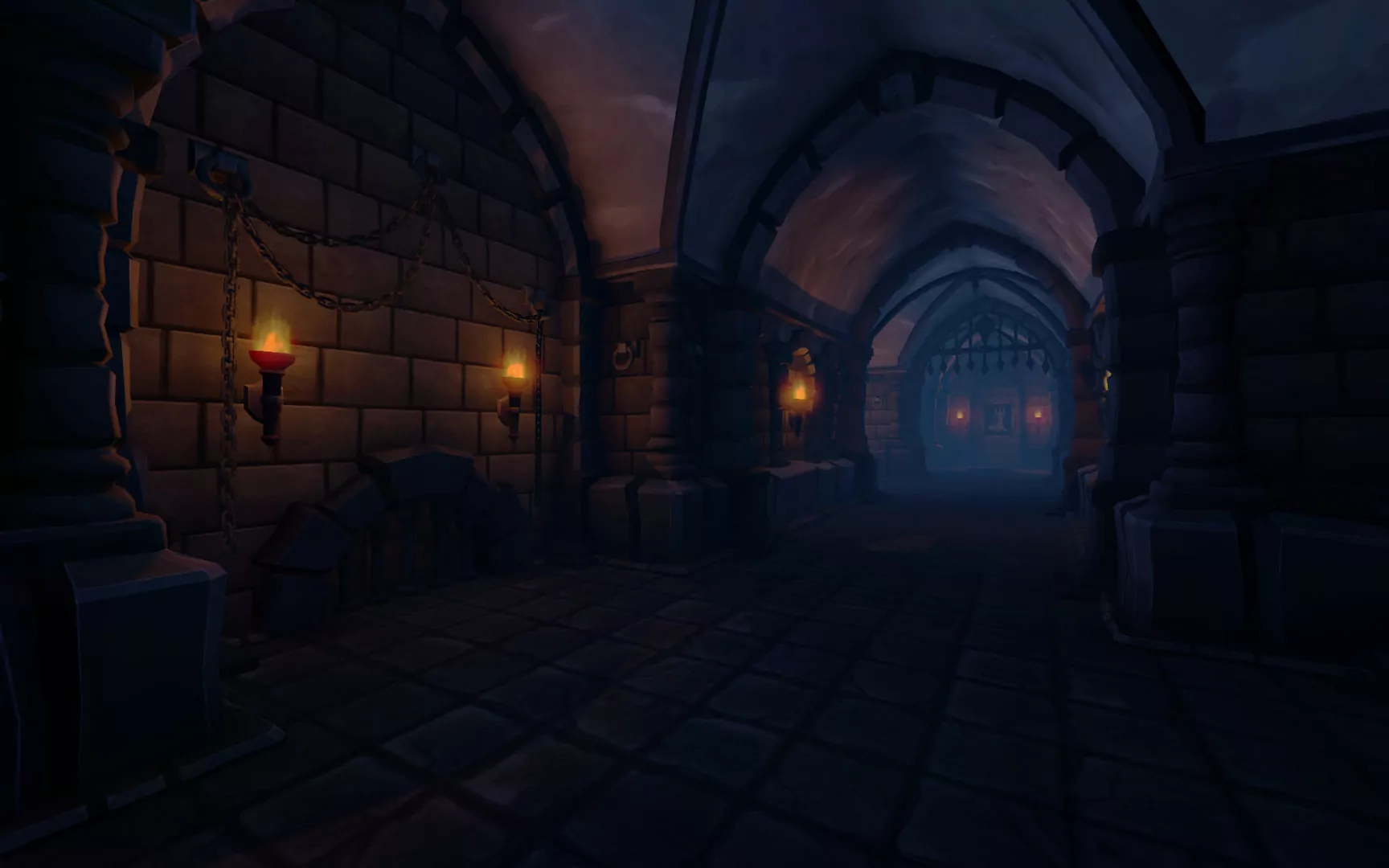
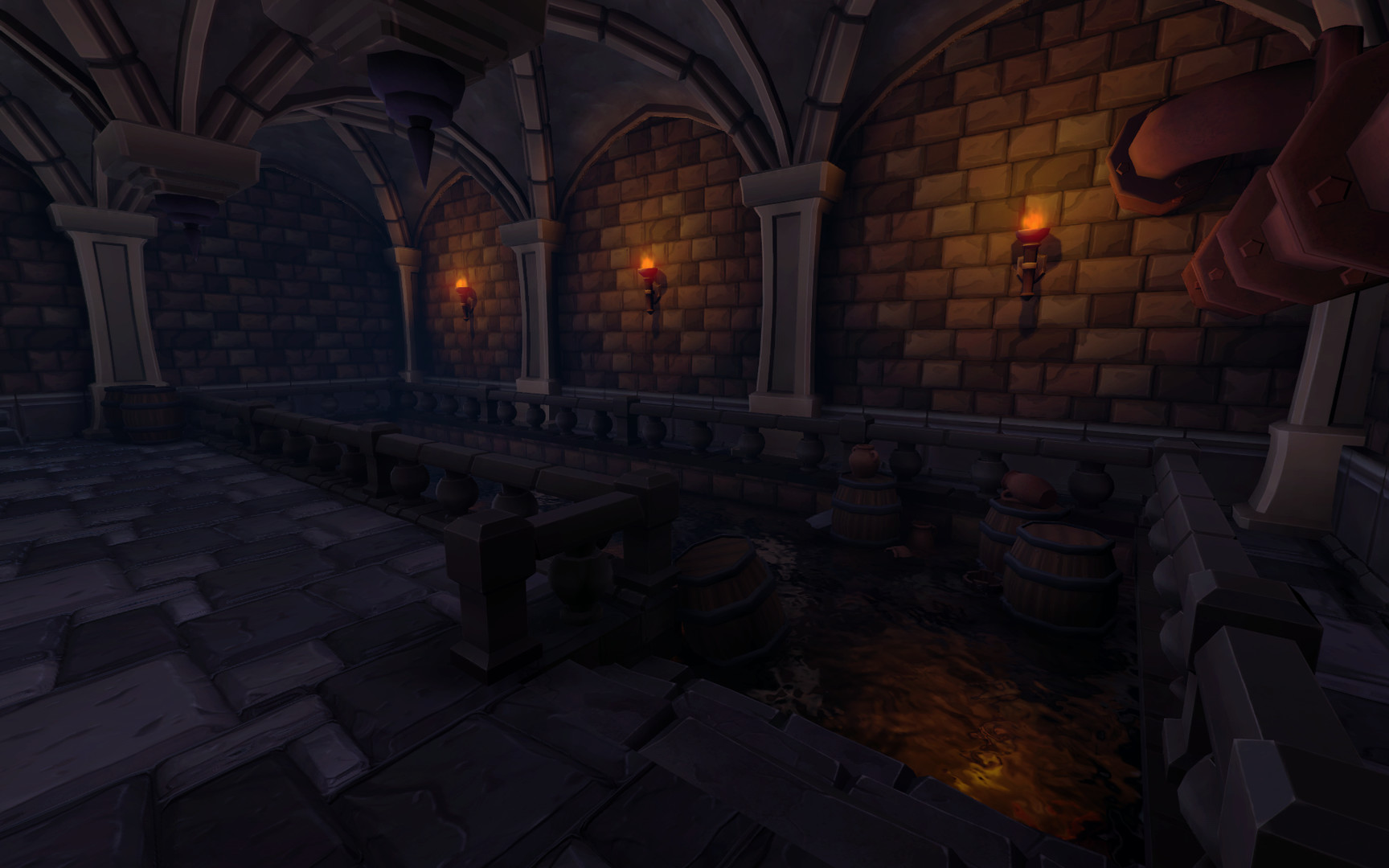
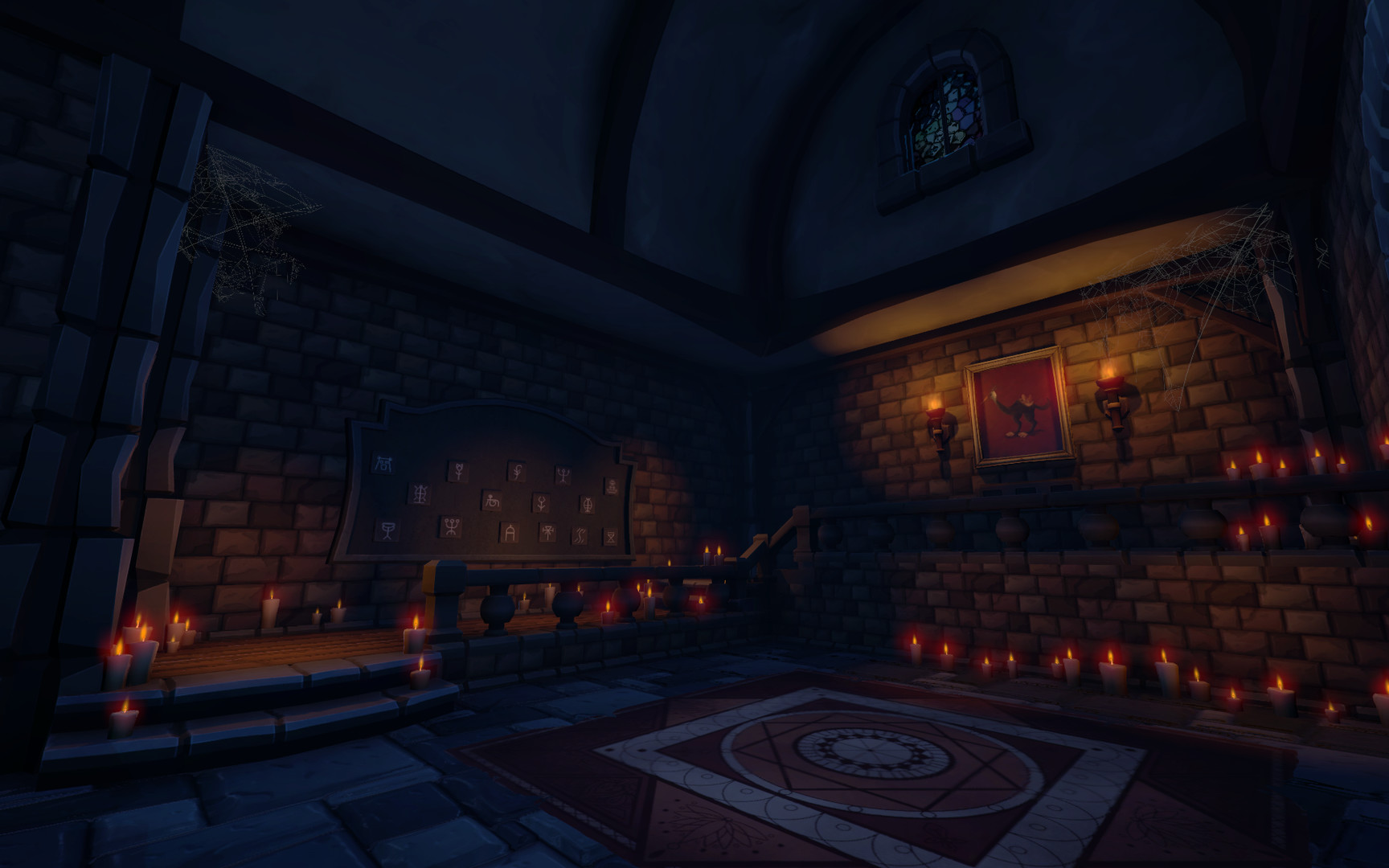
Thanks for taking the time to read our review. If you’d like to support us further, please consider buying us a coffee!
Enshrouded
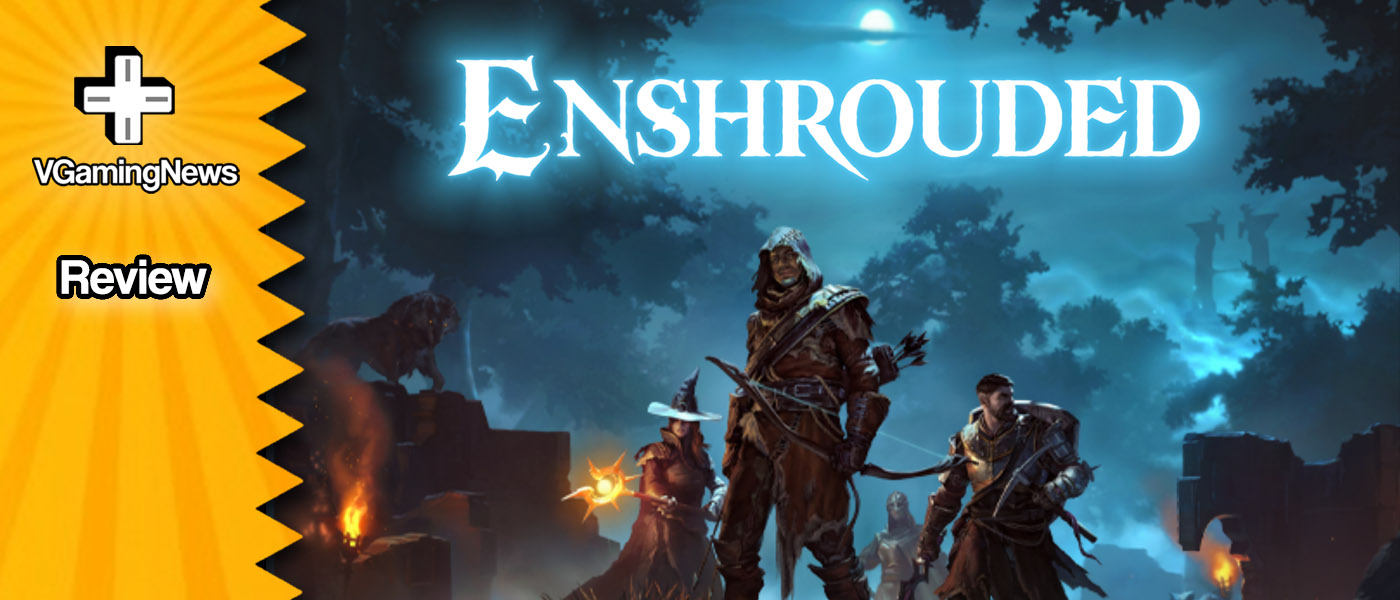

Amidst the current climate of national turmoil and financial woes, it can feel at times like we’re living in our own brand of survival game, where the only safe place is our home, away from… people. Jumping into the survival genre has titles that come with its own unique styles and construction mechanics, with personal favourites being Valheim and The Forest. That is until Enshrouded threw its hat in the ring, where before I knew it, tens of hours had passed before I had even left the tutorial area. Whilst still in its early access, the team over at Keen Games has developed what is shaping up to be one of my FAVOURITE survival games, and the beauty is, they are only making it better.
This is an abridged version of our Enshrouded video review, which can be seen here:
We start our adventure with a bit of back story, where we are essentially told that the people of Embervale got greedy for some powerful elixir, tapping out wells of the stuff while killing each other for it. In doing so, they released the deadly shroud that now plagues the land. We are Flameborn, beings forged by the humans and ancients to clean up everyone’s mess. Now beyond this, much like Embervale, the story itself is enshrouded. Once released into the world, your main means of lore come from the various scrolls and parchments scattered across the land. These can also act as quests that then uncover locations on the map to explore.
At A Glance
Enshrouded 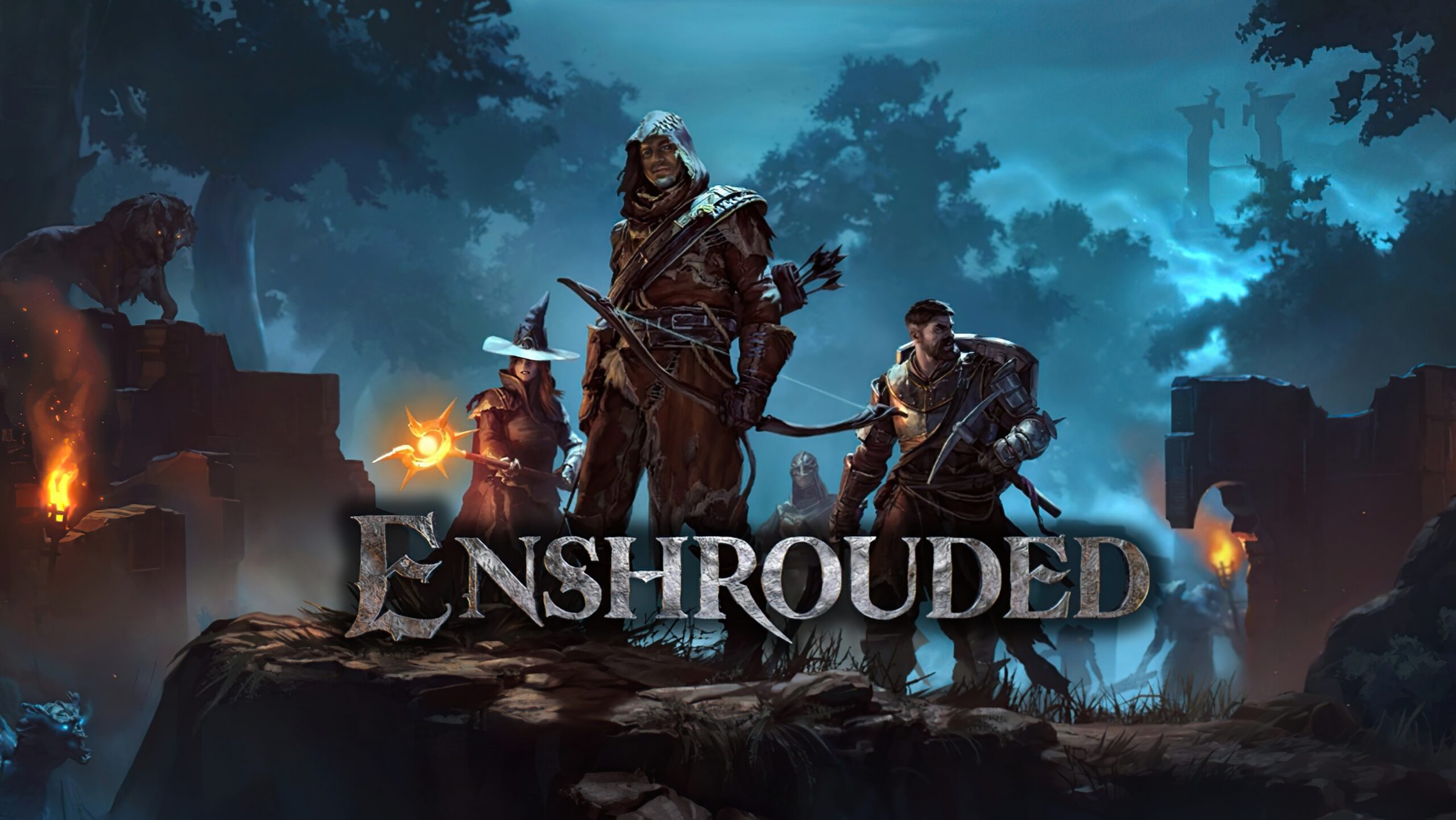 |
|
|---|---|
Positives |
+ Excellent mix of combat, crafting, and RPG + Gorgeous and vast world to explore + Lost of content, even for early access |
Negatives |
– Story lacking at present |
Overall |
8 /10 |
Played On |
PC |
Also Available On |
PS5, Xbox Series X|S |
When you eventually set out to explore Embervale, you’re tasked with finding and rescuing the blacksmith, and doing so introduces another unique mechanic. There are multiple different characters you are tasked with finding that you deploy around your base, and interacting with them allows you to construct and enhance new armours, weapons, and items. They are essentially work benches personified, but introducing this mechanic via various characters instead of behind a simple menu makes settlements feel a lot more alive.
During your adventure, you discover the elixir wells deep beneath the shroud, where you race against the ticking clock to chop down the shroud root, clearing the surrounding area of the deadly fog at the source. The shroud itself is excellently designed; you are always able to see where it is from above, but it just about blocks your view of what’s beneath until you pull up your big boy pants and jump into it. A timer starts to tick down, and if you don’t manage to stick your neck above the shroud in time, it envelops you and you die.
You’ll also notice large towers along the horizon, these act as Assassin’s Creed-type viewpoints, except they don’t immediately reveal the surrounding map, and they each bring with them a bit of platforming and puzzle-solving to get to the top, where you can then unlock that tower as a fast travel point. Fast travelling is currently limited however to the unlocked towers and your flame altars, which means you will need tactical altar placement around the map.
The sights themselves are beautifully hand-crafted, and again, unlike many other titles in this genre, they are not procedurally generated. This means that the world layout is the same for everyone, every time. You’d think that this would hurt replayability, but even in its early access phase, there’s so much to discover and do that I don’t see myself needing to make another character to run through Embervale a second time.
Each biome, each cave, each building, and each dungeon comes with it a brilliant range of visuals and music that work together to create the perfect atmosphere. One moment you’re in a tranquil forest appreciating nature, the next you’re in a pitch-black cellar where all you can hear are your footsteps and the groans of the monsters. You can even discover a great vista and have the music crescendo at the perfect moment. Ultimately, you are at the mercy of the cruel hands of time. Not only can you spend hours building, but the map is huge, with multiple points of interest, quests to complete, towers to ascend and bosses to defeat. Many hours can pass before you make any meaningful progress in the game, time really does fly when you’re having fun.
That doesn’t mean to say Enshrouded isn’t without its flaws, currently, the delicious mix I mentioned earlier is like a pack of Bertie Botts Every Flavour Beans. You don’t know whether you’re about to bite into a tasty new discovery as you’re gliding around, or chew on the FPS dropping as you then plummet to your death. Notable issues I have come across so far have been: poor rendering, where at the start of my game I play as a floating axe and shield for a few minutes. A couple of changes that I feel would make a positive impact would be to have a way of telling how far along day and night cycles are, and to be able to have clones of the NPCs between each base. During our play-through, regardless of where we were or what dangers we faced, we kept zipping back to our original base to recuperate and then just zip back.
The reassuring thing is that most of the issues I have encountered are fixable and performance-based, and I’m sure they will be optimised at full release, as the developers are very active and engaged with the community. There has already been a major update with the Hollow Halls patch, in keeping with their roadmap for what’s to come. One key new feature, being able to sit on your furniture! Surprising how much it was missed when it wasn’t possible.
Enshrouded is available now on Steam, with later releases this year on the PS5 and Xbox Series X. I have been running co-op with the other half thanks to the kind folks at Keen Games and Evolve PR for the review codes. The trouble is, advancing through the game without her is like continuing a TV series that you were watching together by yourself… (you better have that doghouse ready!) Despite the performance issues, which one can expect in Early Access, it has scratched every itch a survival-action RPG has to offer. Whether it’s exploring the gorgeous sprawling world, seeking out battle with great varied combat, or staying back at basecamp to use the unique building mechanics to make an empire, I’m very excited to see the finished product, as well as the plethora of content I’m sure Keen Games have in store.
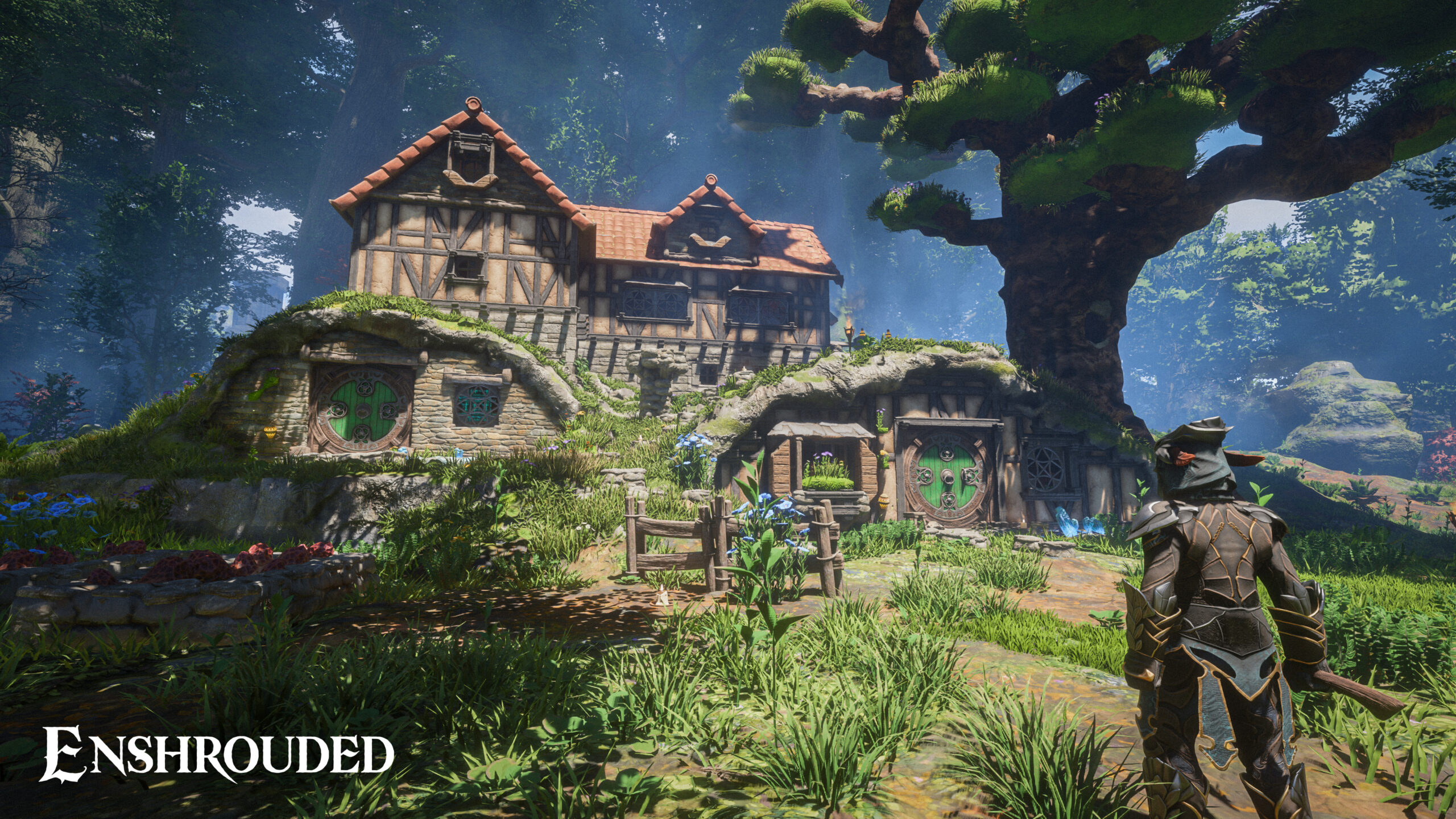
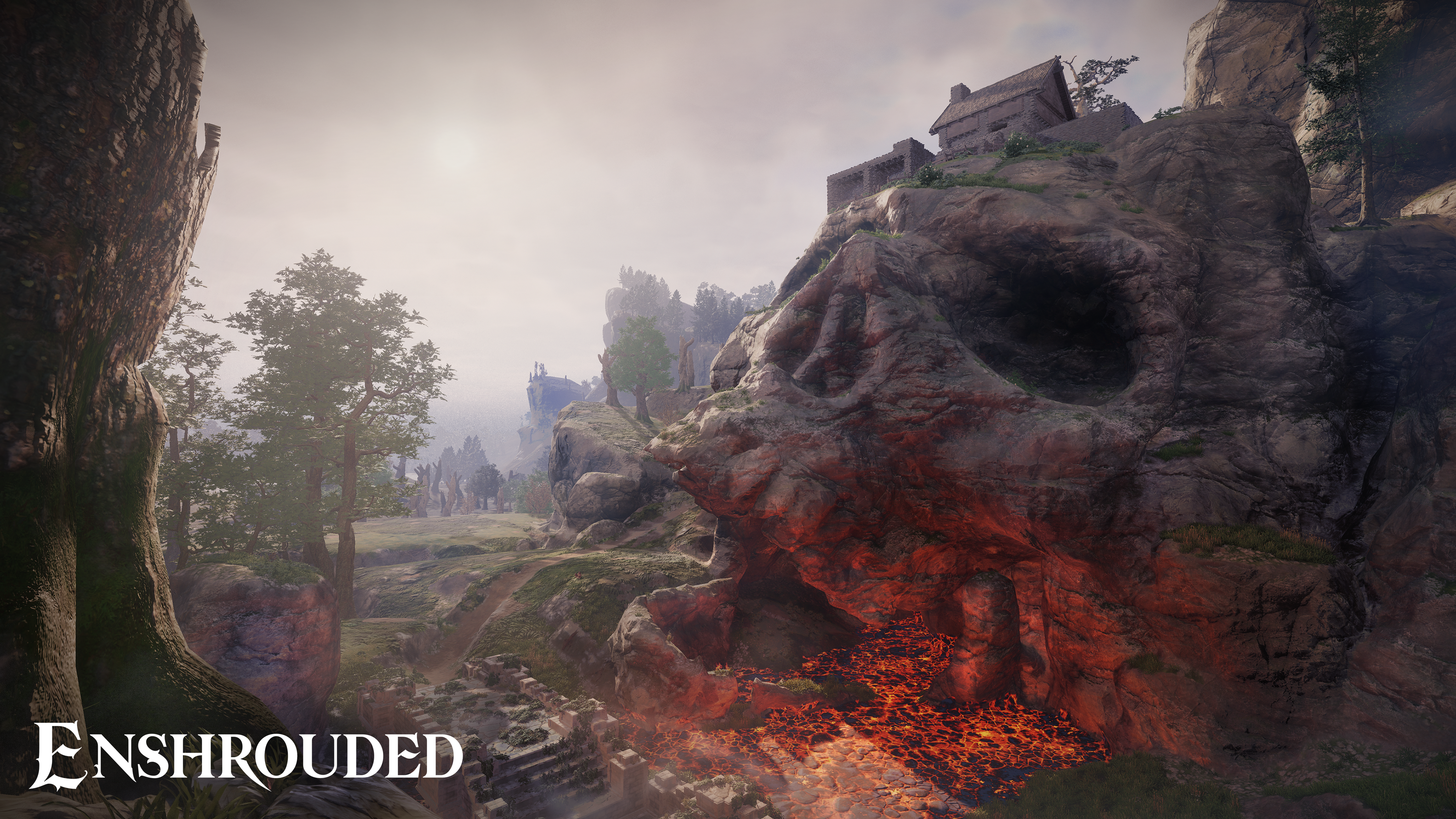
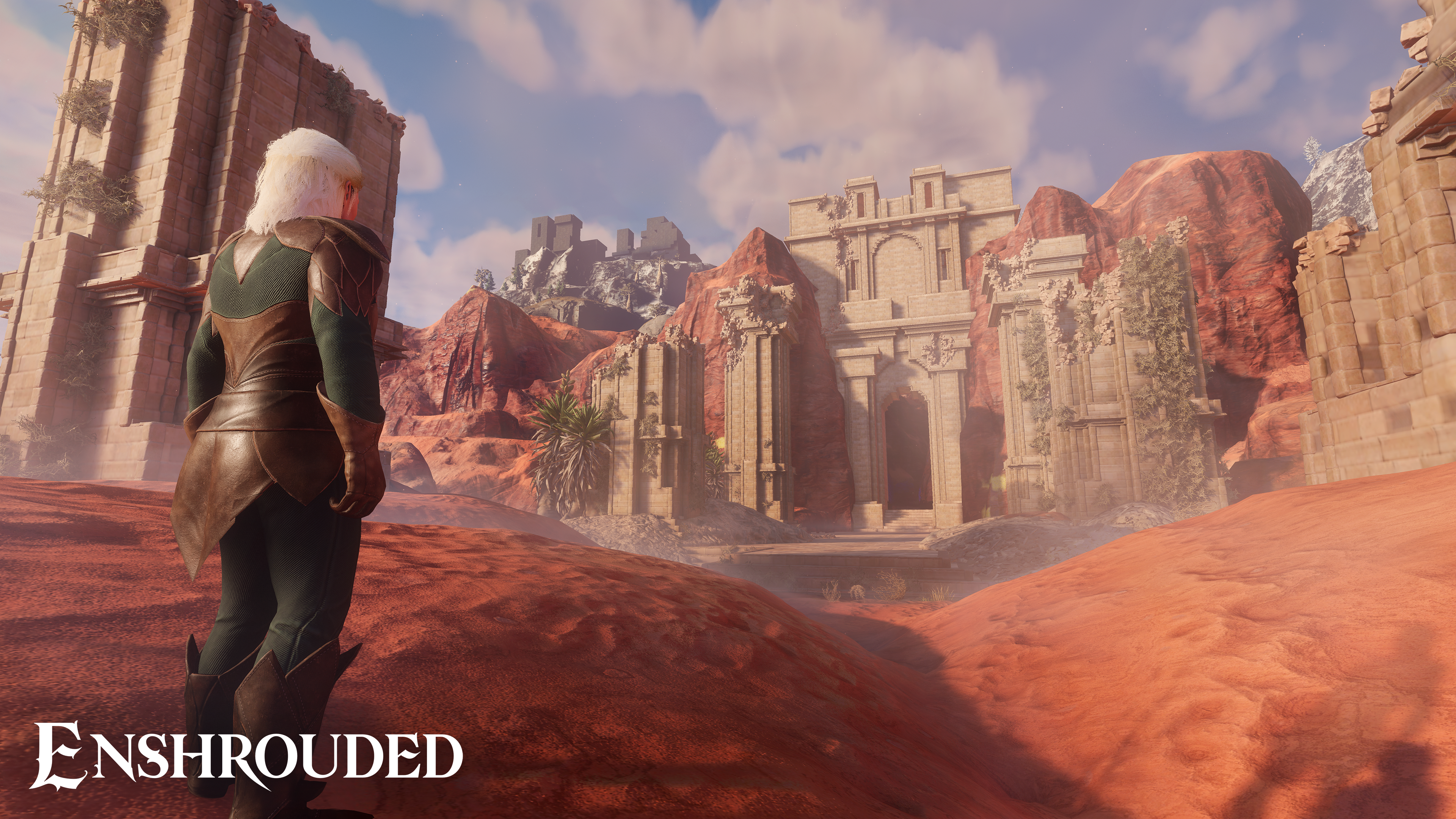
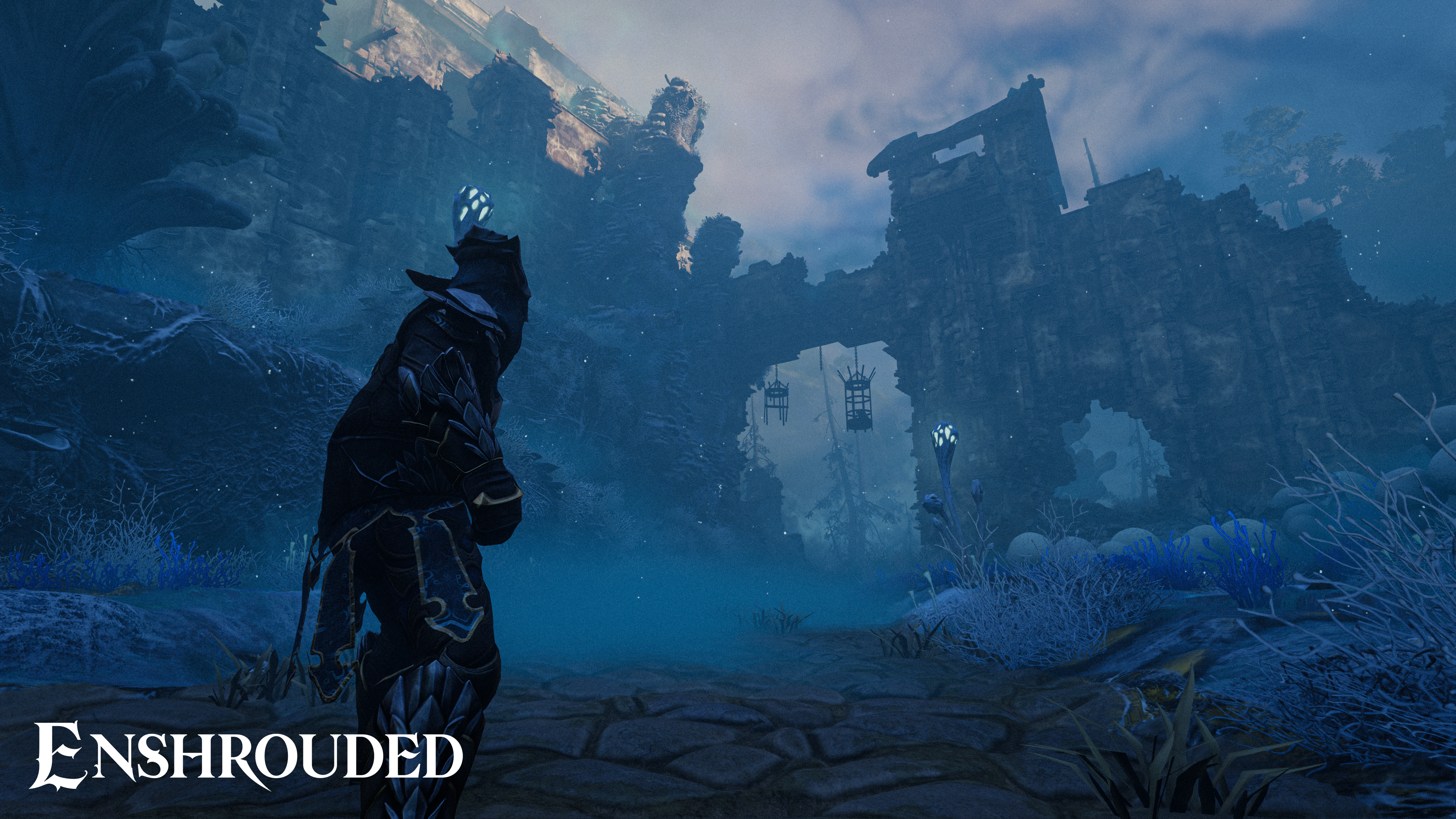
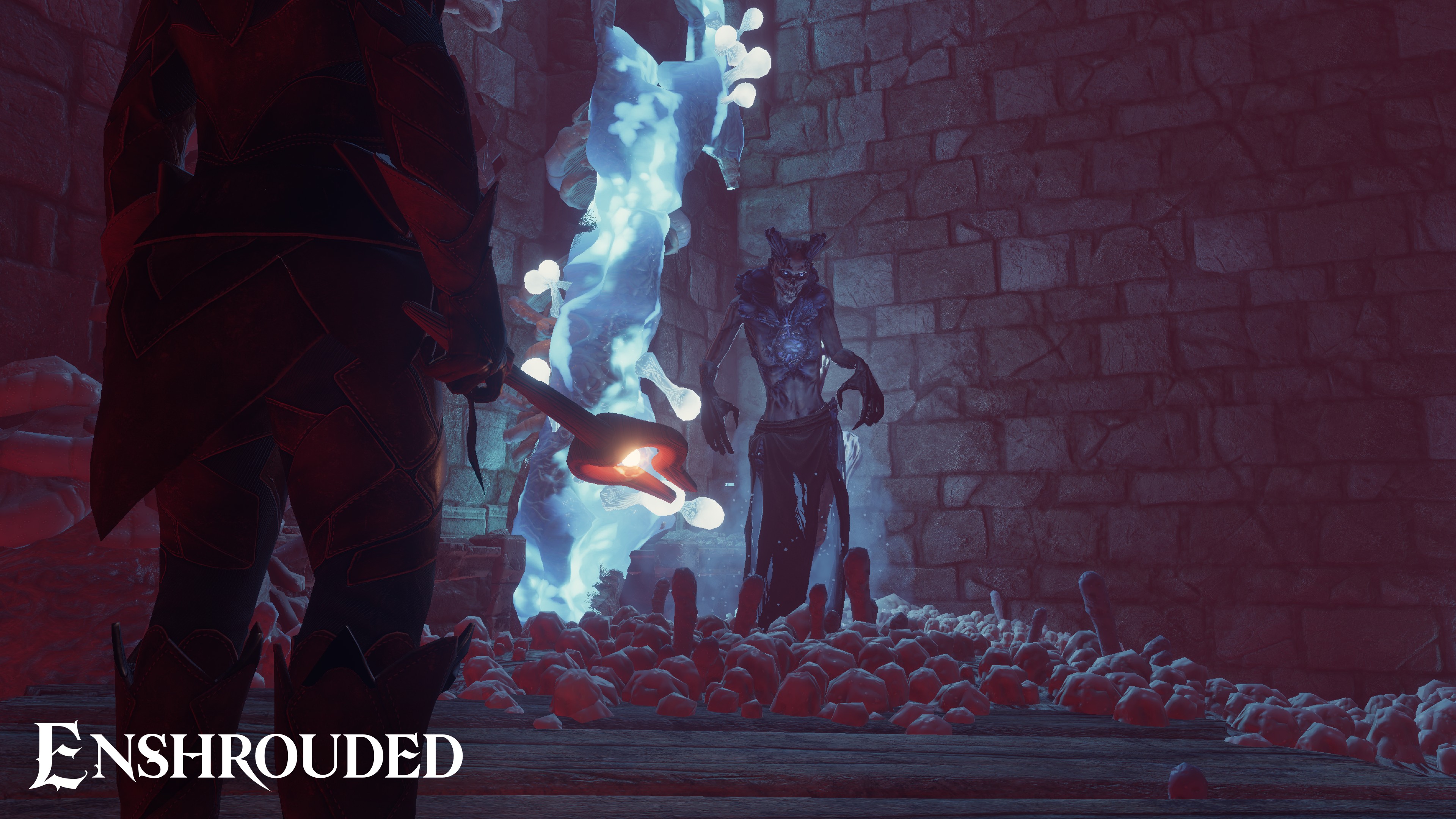
In the interest of full disclosure, VGamingNews was provided with a copy of the game in order to conduct this review.
Thanks for taking the time to read our review. If you’d like to support us further, please consider buying us a coffee!
Isles of Sea and Sky
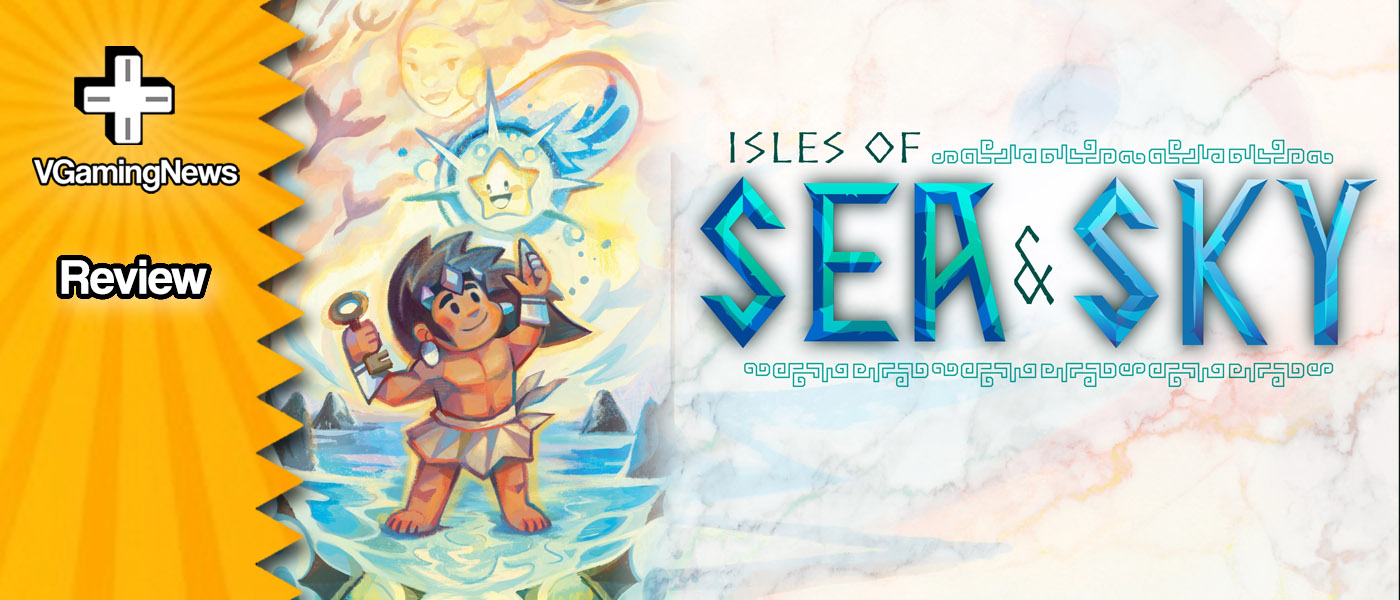

Every once in a while, a game comes across your desk that just snatches your attention and won’t let go. In 2023 for me, that was a little indie title that was still in development called Akurra. I stumbled upon it while scrolling the #indiedev community on X (formerly Twitter) and was immediately enamoured by its throwback art style and intricate puzzling. Solo developer, Jason Newman, kindly provided me with a demo at that time and from minute one I was absolutely enthralled by it.
Sadly, a bout of illness kept me from ever writing up my preview (much to my chagrin). But I recently heard that Newman had rebranded the game as Isles of Sea and Sky and that it was slated for a release in May 2024, so I jumped at the opportunity to dive in and right that wrong with a full review!
As we start the game, our nameless hero washes up on the shore of an unknown island. You’re met with the simple challenge of pushing a few boxes around to open up a path to a bell, which once rung, retracts a blockade and allows access to a valuable key. As you wander your way through those first few screens, you’re introduced to various simple pitfalls and obstacles, including holes, punji pits, crates, crystalline barriers that grow when you step on them, and heavy-duty boxes that you can use to destroy them again. The gameplay premise is remarkably simple: each screen acts as a self-contained puzzle, or collection of puzzles, with your aim to push items around, avoid traps and unblock paths so that you can pick up collectables that are scattered around in hard-to-reach places.
At A Glance
ISLES OF SEA AND SKY 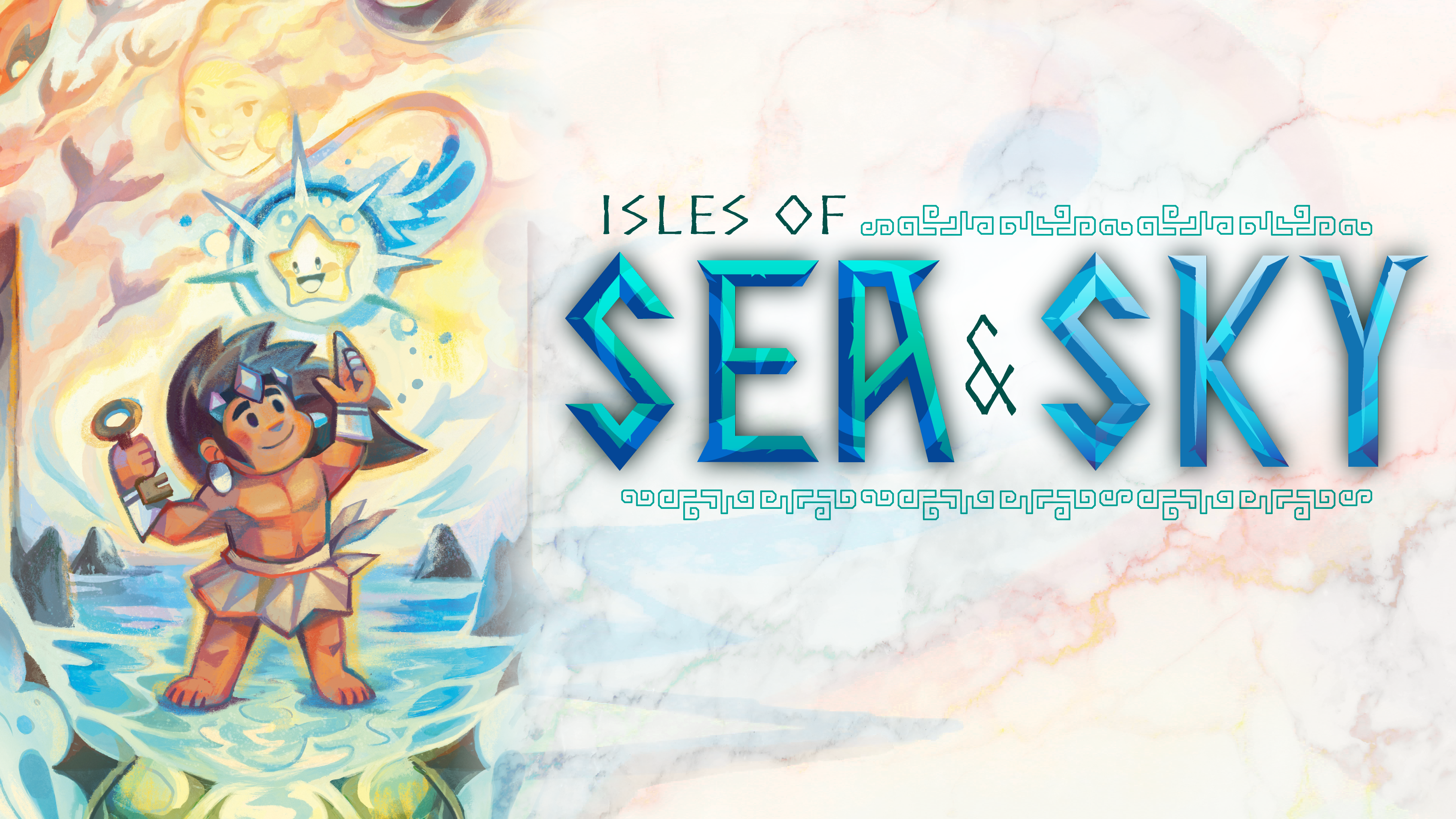 |
|
|---|---|
+ Addictive pick-up-and-play puzzling |
Positives |
Negatives |
– Wordless story is tricky to fully appreciate |
Overall |
9 /10 |
Played On |
PC |
Also Available On |
|
From that opening 60-seconds you’re given a tremendous look at what Newman has done so well with Isles of Sea and Sky – he thoroughly teaches you each and every mechanic in the game without a single word of dialogue or instruction. There aren’t any formal tutorials, but instead carefully crafted puzzles that force you to interact with new elements in ways that leave you in absolutely no doubt about what you’re expected to do going forward. It may sound simple, but I can assure you it’s absolutely not, and it’s an area that even big developers continue to get wrong even in 2024. It’s a credit to a talented solo developer how successfully players are given confidence in the game’s new mechanics and methods through well curated puzzle design alone.
This well thought out puzzle design is the calling card of Isles of Sea and Sky. You’ll sometimes enter a screen, confident that you know exactly what to do, thinking it will be a piece of cake, when in fact, one well-placed hole undoes your entire plan! You quickly realise that understanding your goal and achieving it are very different, and things can get remarkably tricky! Thankfully, Isles of Sea and Sky takes a very non-linear approach to puzzle solving, and there’s often more than one way to reach a conclusion, given enough time and patience. Additionally, there’s an undo function that lets you to quickly step back every action you take, allowing you to unpick a misstep or try out multiple options when you’re not sure what to do. If you’ve made a mess of the screen altogether, by perhaps destroying a vital crate or painting yourself into a corner, there’s a handy reset button too, which will wipe the whole slate clean and let you start afresh.
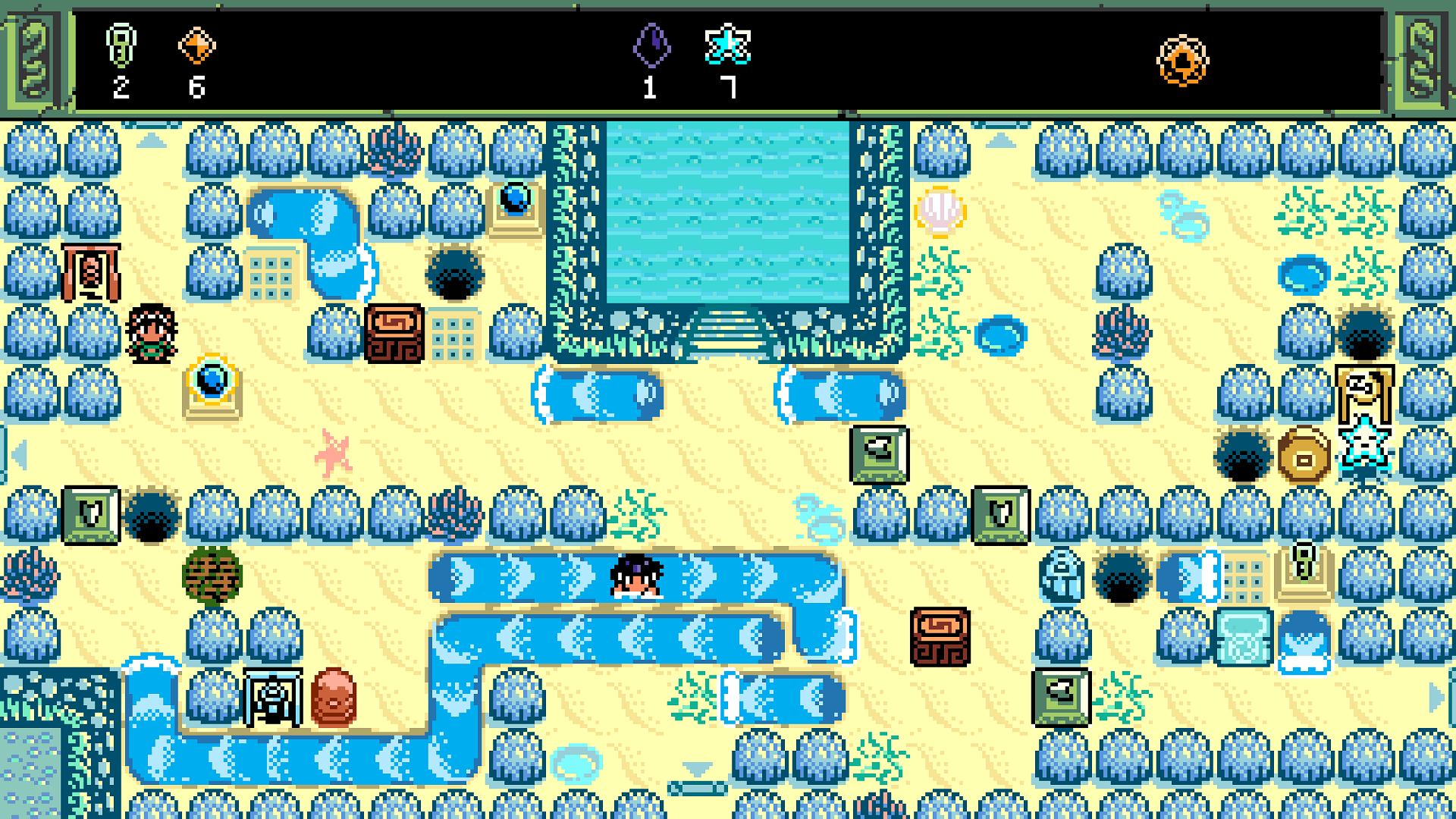
It isn’t long in your quest before you reach a pair of almighty doors that are shut tight and etched with great runes, and it becomes your quest to unlock those doors and look upon the mysteries that lie within. Doing so will take our hero on a journey across a group of mystical islands that make up a great archipelago, and you’ll navigate between them on the back of a great sea turtle. As you travel from island to island, you’ll encounter the patron gods of each region, who each command the power of one of the four elements: earth, water, fire, and air. To earn the favour of these gods you must gather their favoured precious stone from around their island and offer them up as a gift; once satisfied, each god offers our hero help in his quest by releasing their elemental creatures into the world, helping you overcome what was previously impossible.
You’re able to interact with these elemental creatures in the same way as other obstacles; each one has their own unique properties and behaviours and unleashing them completely changes the game. For example, the Stone Elementals will continue to roll in one direction once you push them, and can even hop over any single holes they run into – not stopping until they crash into something. Not to mention that they weigh a tonne, so you can use them to stand on buttons for you, retracting barriers and opening walkways. With some clever thinking and taking the right approach, areas that were previously impassable can now be traversed, teasing you into backtracking through previous areas to see what new options you might have in puzzles that had previously left you scratching your head.
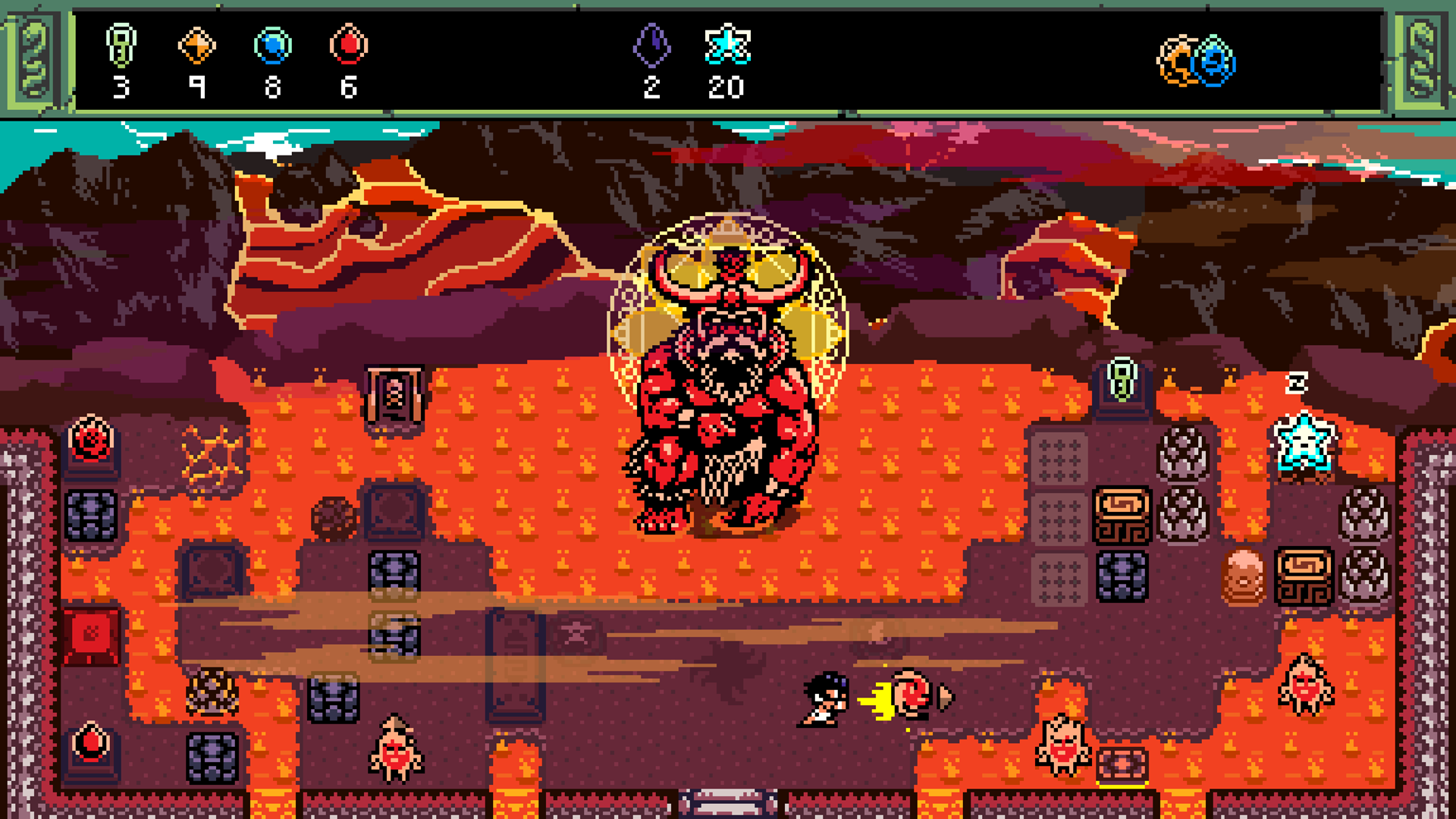
This approach means that you’re steadily introduced to additional mechanics that begin to stack on top of one another. Individually, each change brings a change in mindset and approach, but as you begin to reach the latter stages and you’re working with all four elementals (as well as a few other upgrades which offer new mechanics), the level of complexity really ramps up! To me, the difficulty curve is absolutely perfect, and I felt well-equipped to solve the puzzles ahead of me right until I ran into a new mechanic and I had to do some relearning. That said, for anyone who does get stuck, Isles of Sea and Sky offers no hint system, so you could be left waiting dutifully for a well-made YouTube walkthrough to help you if you do run into a roadblock. I’ve personally been left in this predicament with the optional fifth island, which has me completely utterly stumped!
What is hard to put into words is just how engaging this game is to play, especially as you begin to run into some of the games many secrets. Stumbling upon hidden things (which I won’t even vaguely spoil here) saturates the whole game with a sense of mystery that I found genuinely exciting. One accidental button-press can lead you to a revelation that makes you look at the whole game differently, giving me a sense of childlike wonder that made me want to scour every inch of the game. There’s a carefully crafted mysticism to the story that merges with the in-game secrets so incredibly well, and I don’t remember the last time I felt so willing to search for every secret in order to unlock everything a game had to offer.
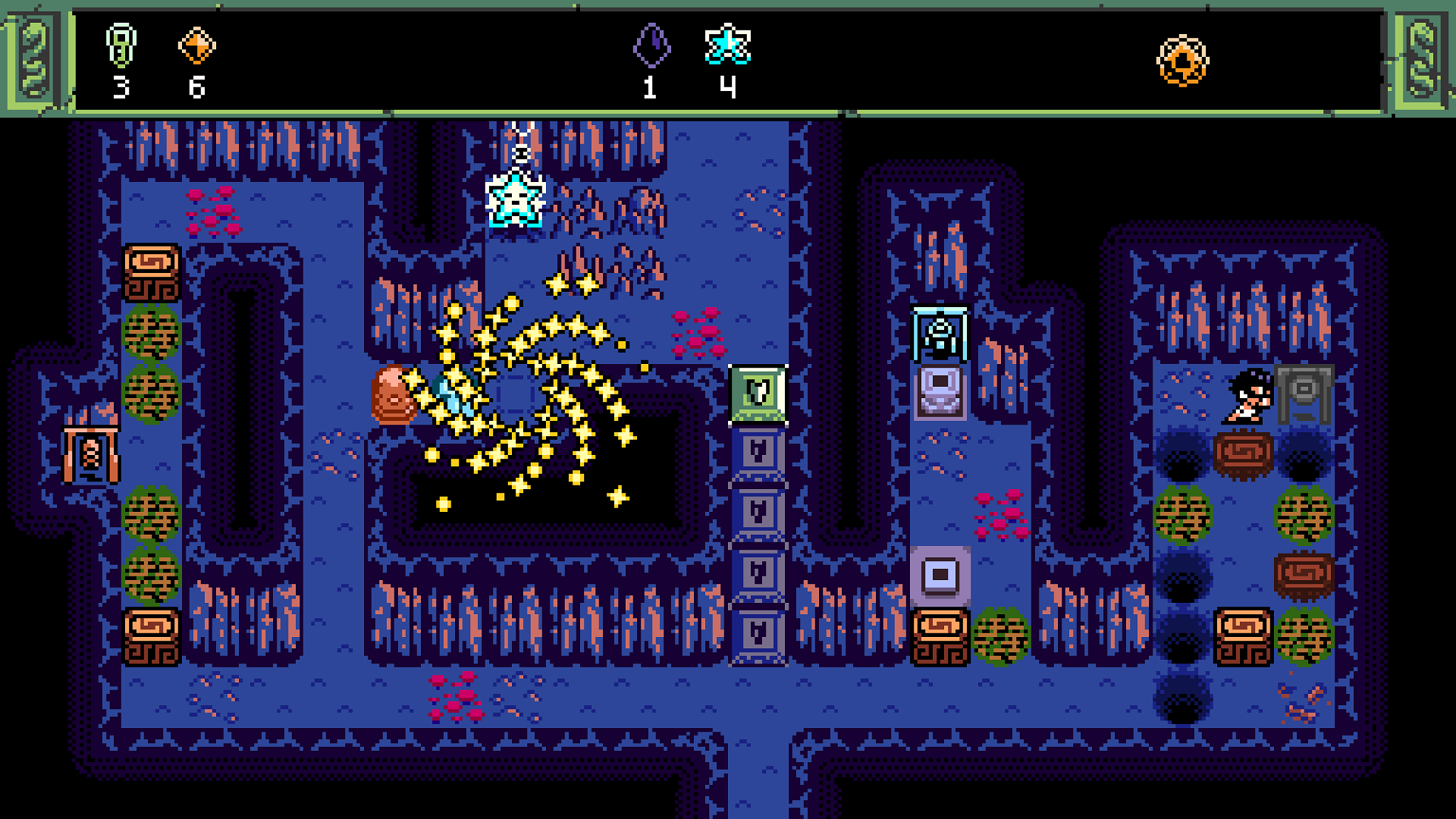
Exploring the islands of the great archipelago is a real joy, heightened by the lovely NES-styled graphics that gives Isles of Sea and Sky a nostalgic, throwback look. From our hero to the patron gods and all of the environments, the sprites are cheery and characterful, yet understated, in line with the game’s simple mechanics. The soundtrack really helps set the scene for each area, and composer, Craig Collver, has done a fantastic job in giving every island a unique feel using a variety of pipe, string, bongo, and vocal effects. There are beautiful island-life motifs tying the visuals, soundtrack, and story together, and (like everything else in the game) you can feel how heavily each aspect has been considered to create such strong, consistent themes.
Speaking of the story, this might be only place where Isles of Sea and Sky doesn’t entirely knock it out of the park. The tale of our hero unpiecing the mysteries of the archipelago are told wordlessly, with the story told in the form of short flashbacks, styled as ancient wall carvings come to life. Thematically, this is absolutely spot on and you get the feeling of a world steeped in rich history and countless tales, but as a player, I didn’t entirely understand what was going on. I happen to be a fan of interpretive storytelling and enjoyed trying to make sense of what I was seeing, but I know this won’t appeal to everyone. Whilst a minor issue, I think there will be some players who find the plot harder to understand than the puzzles.
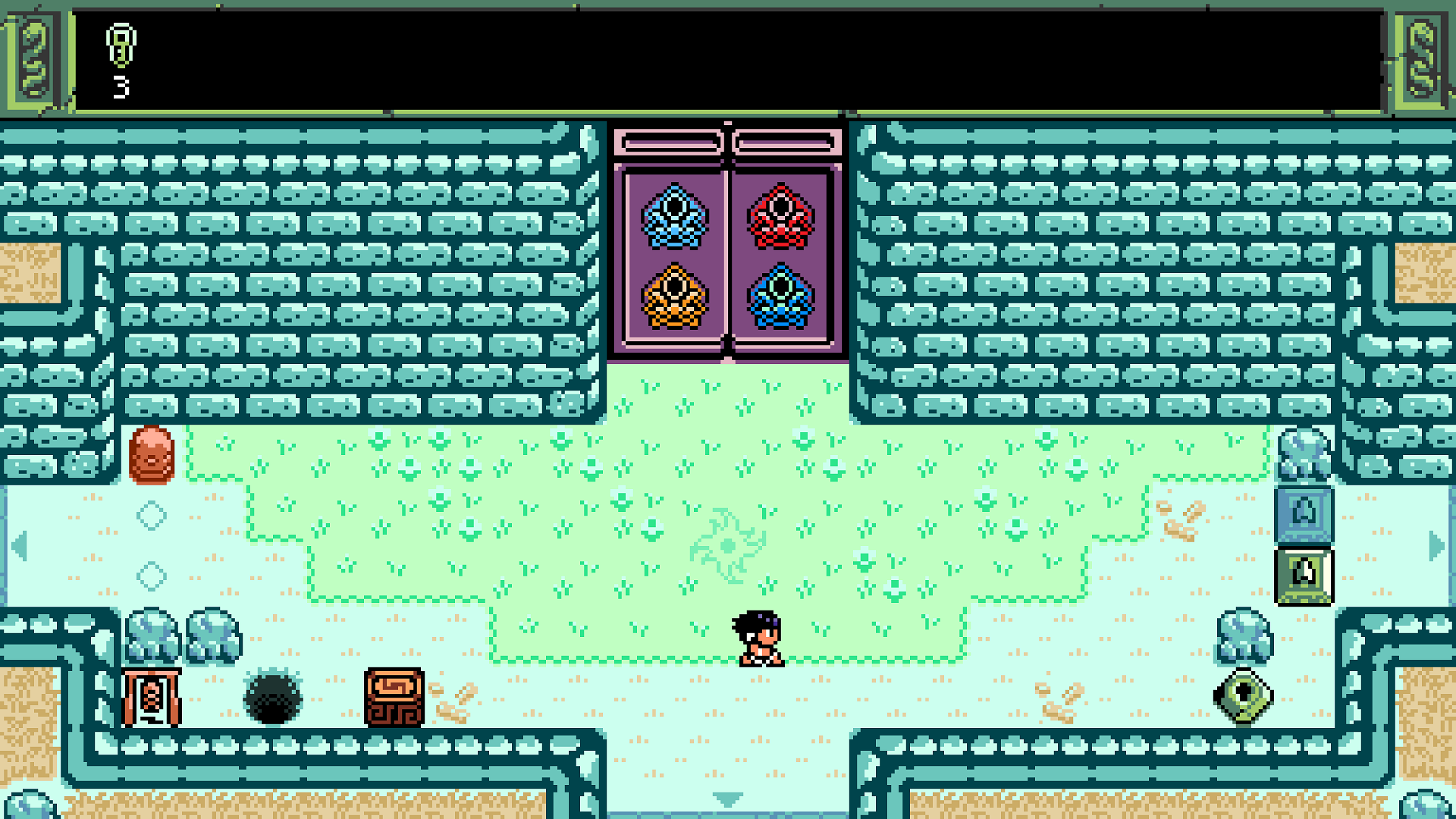
I gladly put about 30 hours into Isles of Sea and Sky, though I’m sure there will be players with bigger brains who can get through it in half that time. Currently only available on PC, this is a title I’d like to see published on every platform – not least Nintendo Switch, where I think the ‘let me have another quick go’ mentality will really take over. With each screen standing on its own, this is a game you can pick up and put down at a moments notice and would be a huge hit on the Japanese handheld, despite being in the final stages of its life cycle.
Isles of Sea and Sky is a tremendously fun puzzle game that weaves a grand fabric of mystery from the humble strands of gaming fundamentals harkening back 30-years. I’m amazed how well a collection of incredibly simple mechanics have been carefully layered on top of one another to eke out an ever-increasing difficulty in such a steady and measured fashion. With a polished NES-style look, engrossing score and a boatload of secrets, it’s a game that’s as addictive as it is enjoyable, suffering only mildly from some murky storytelling. Make no mistake, this is a victory for indie gaming and solo developers the world over.
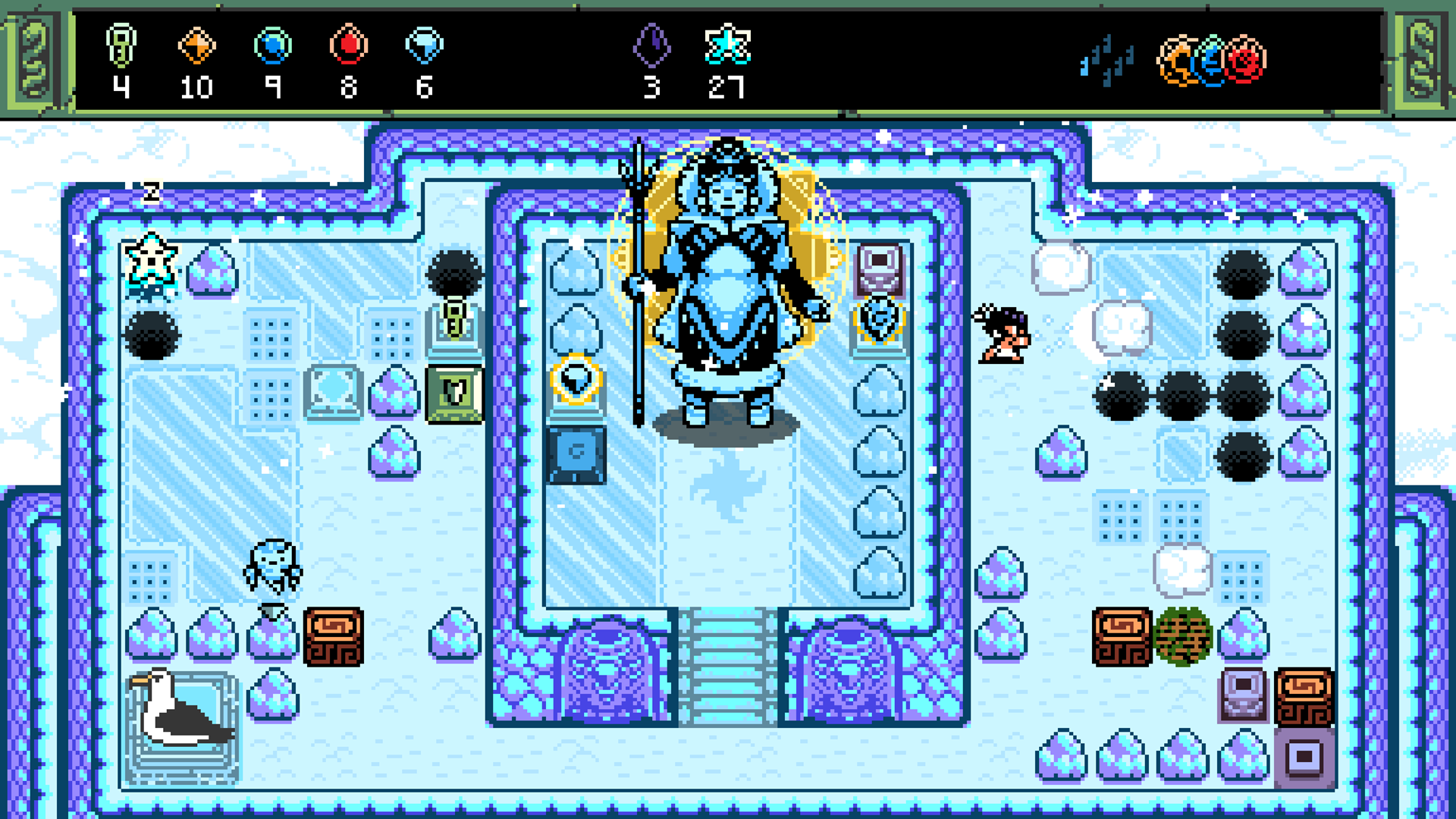
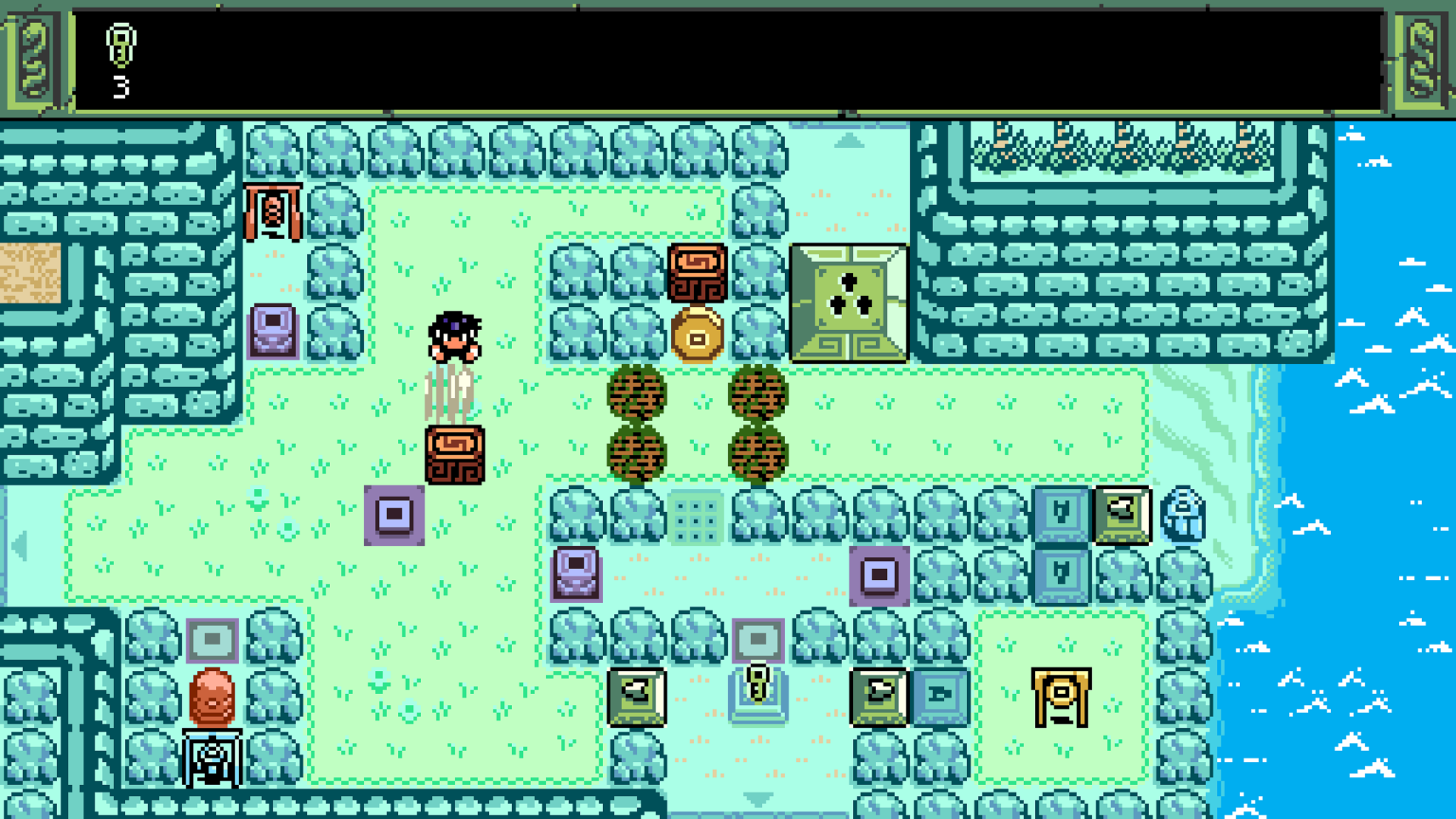
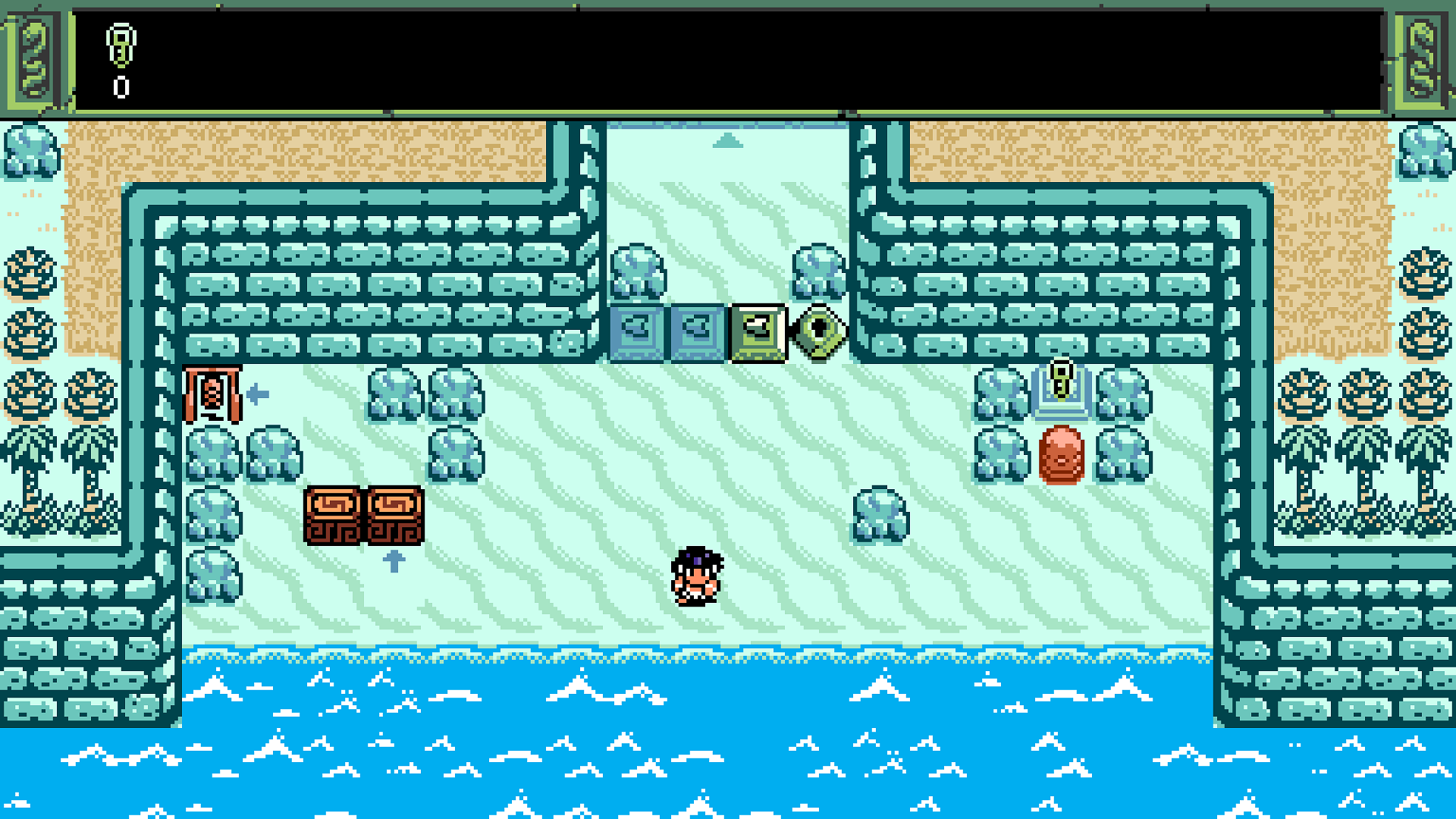
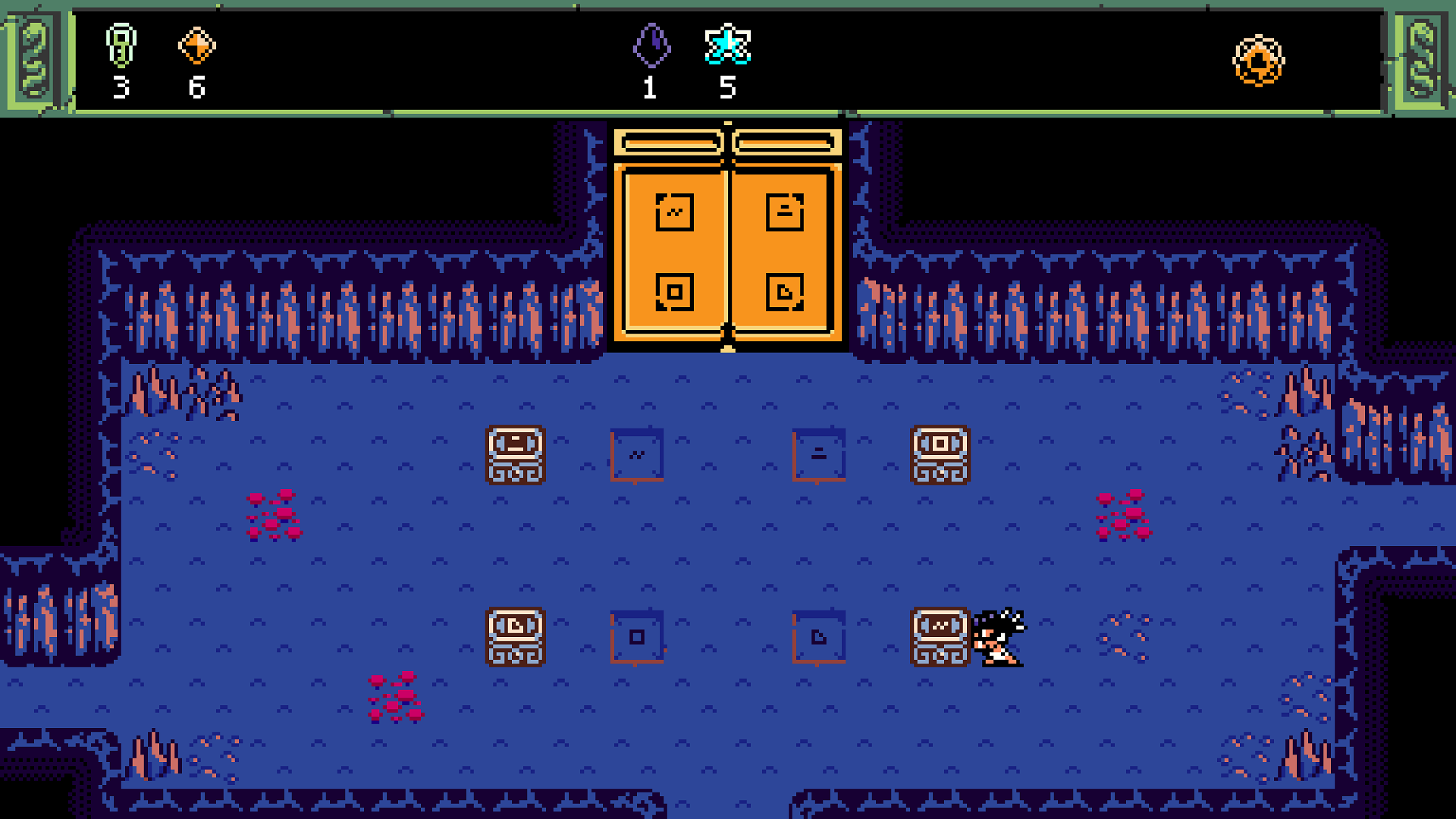
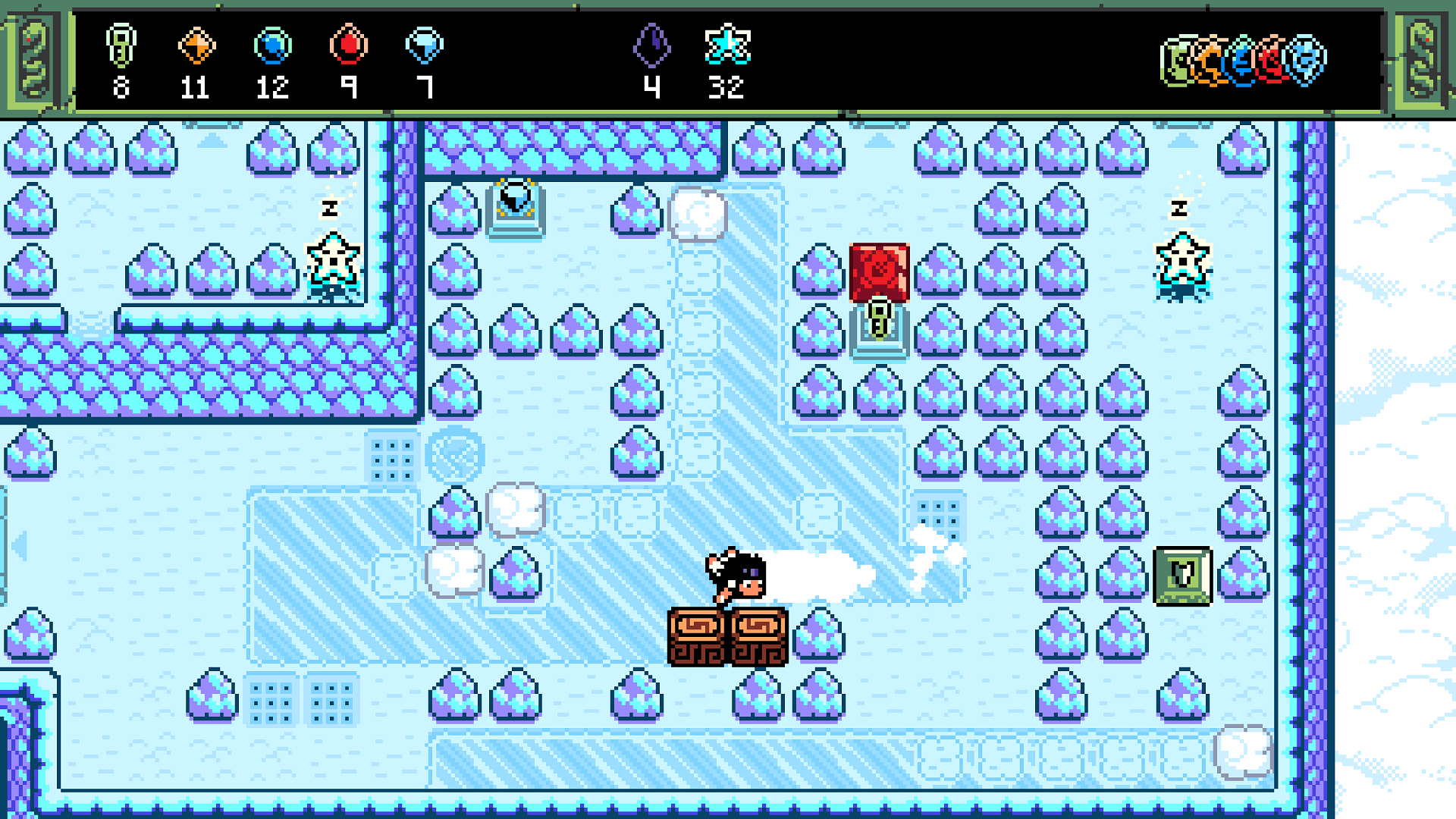
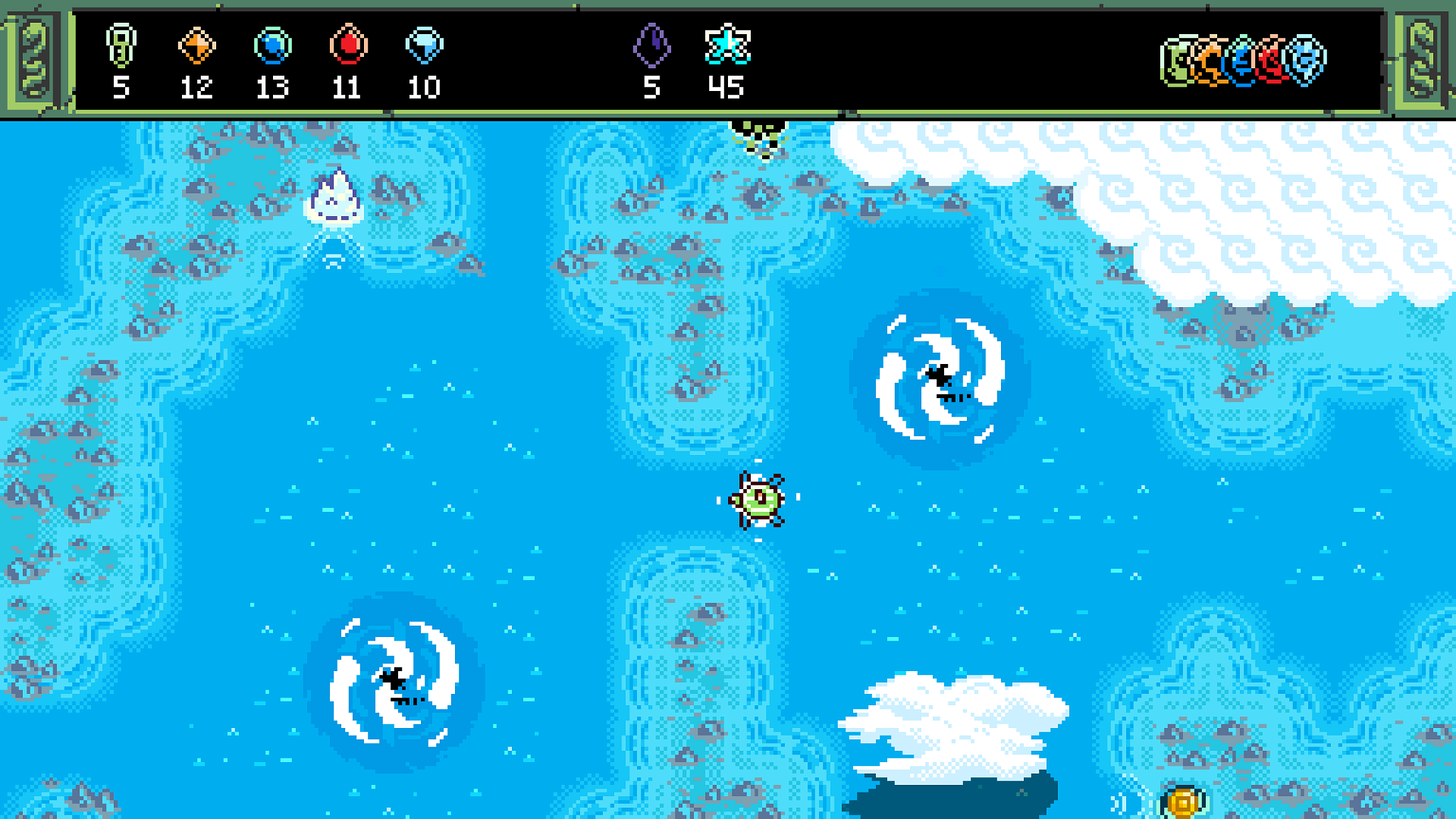
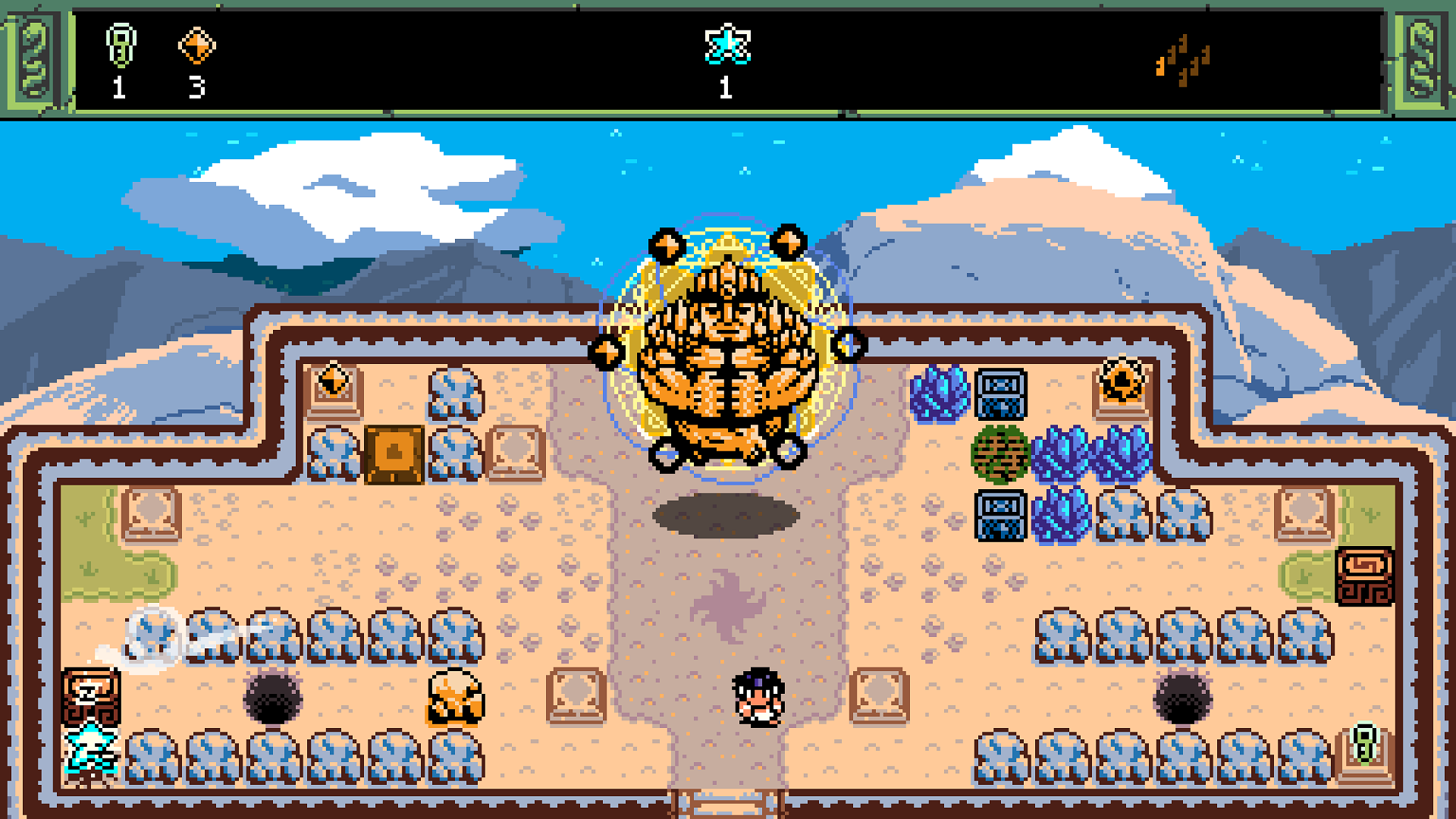
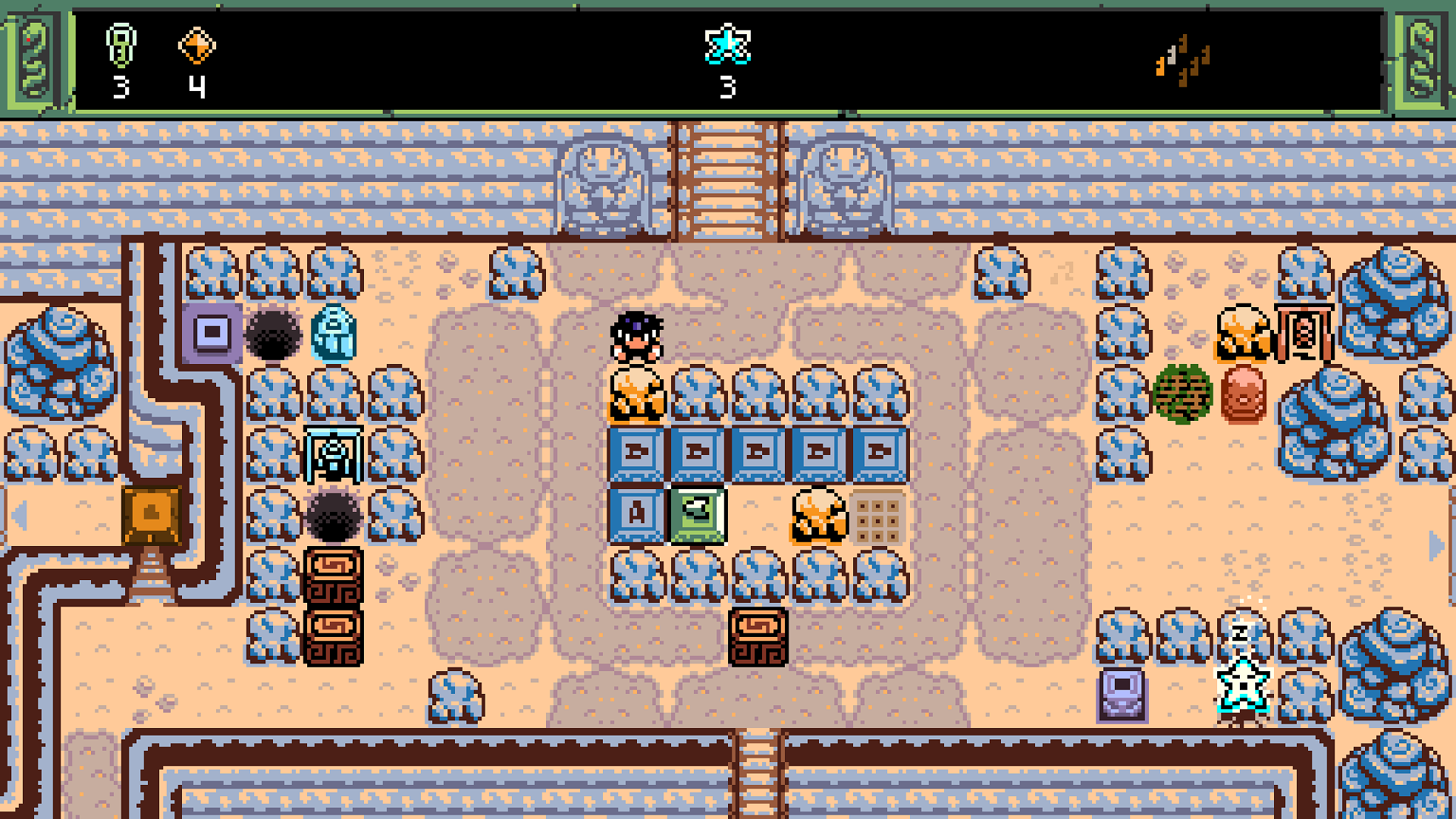
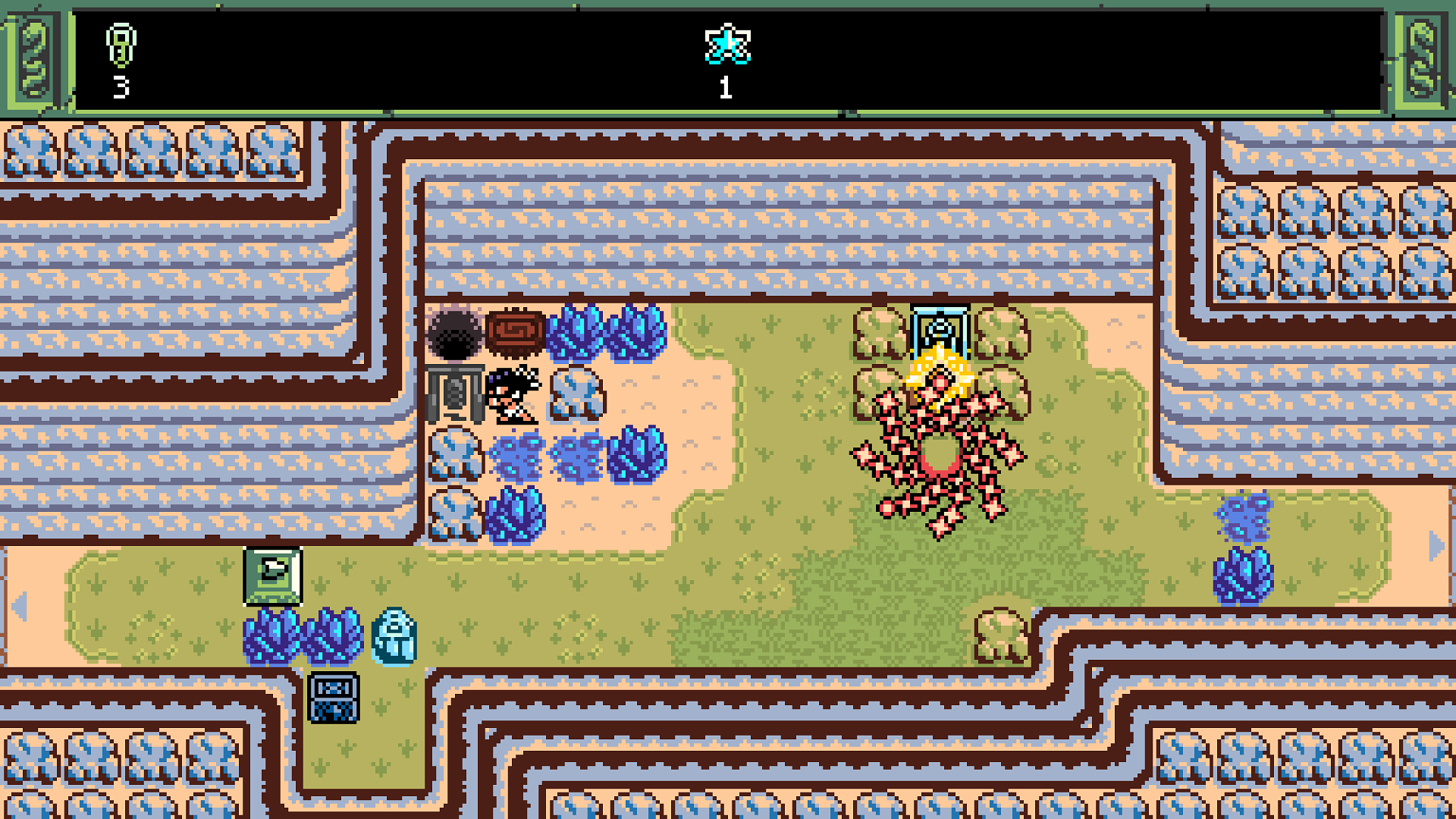
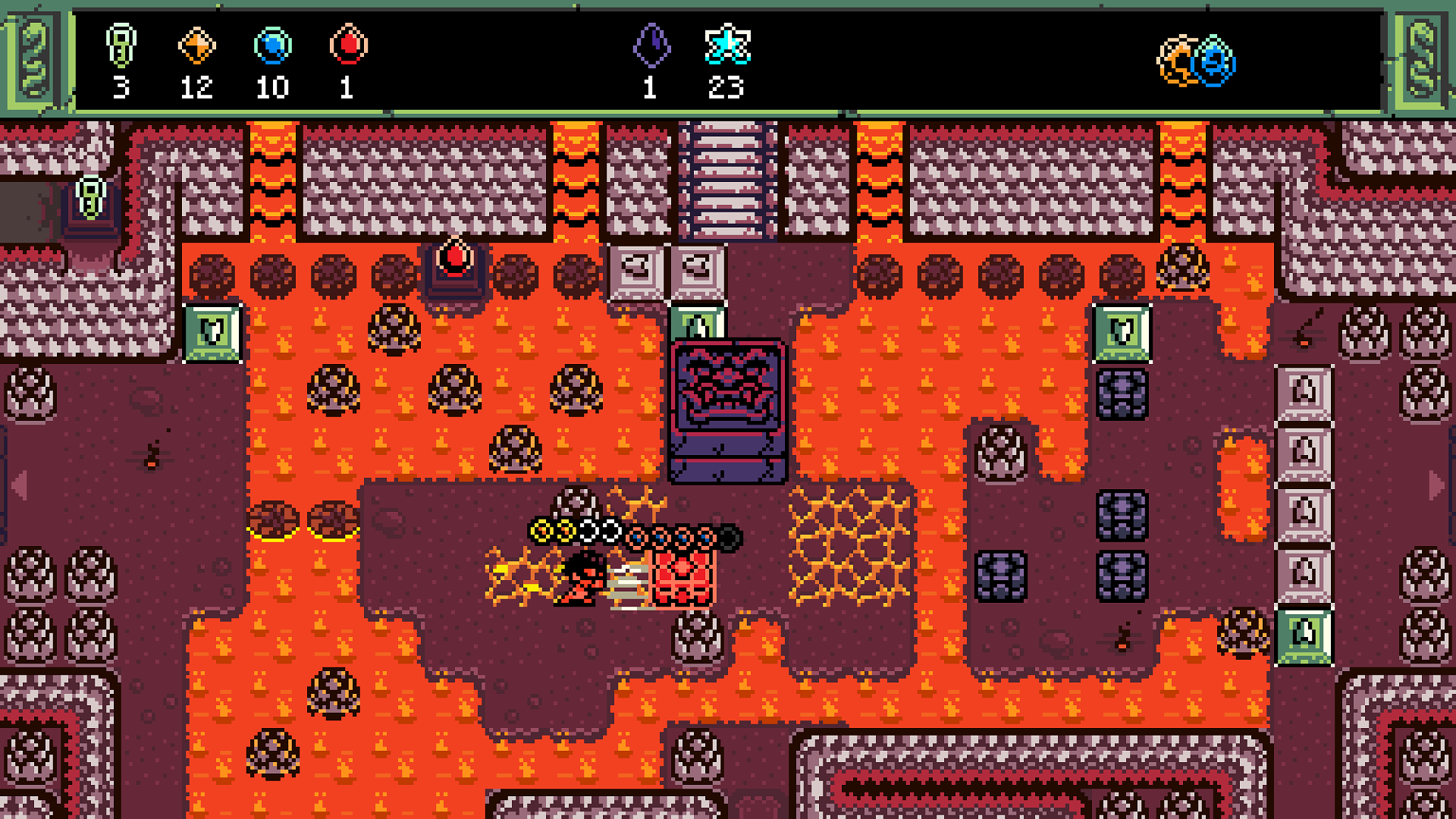
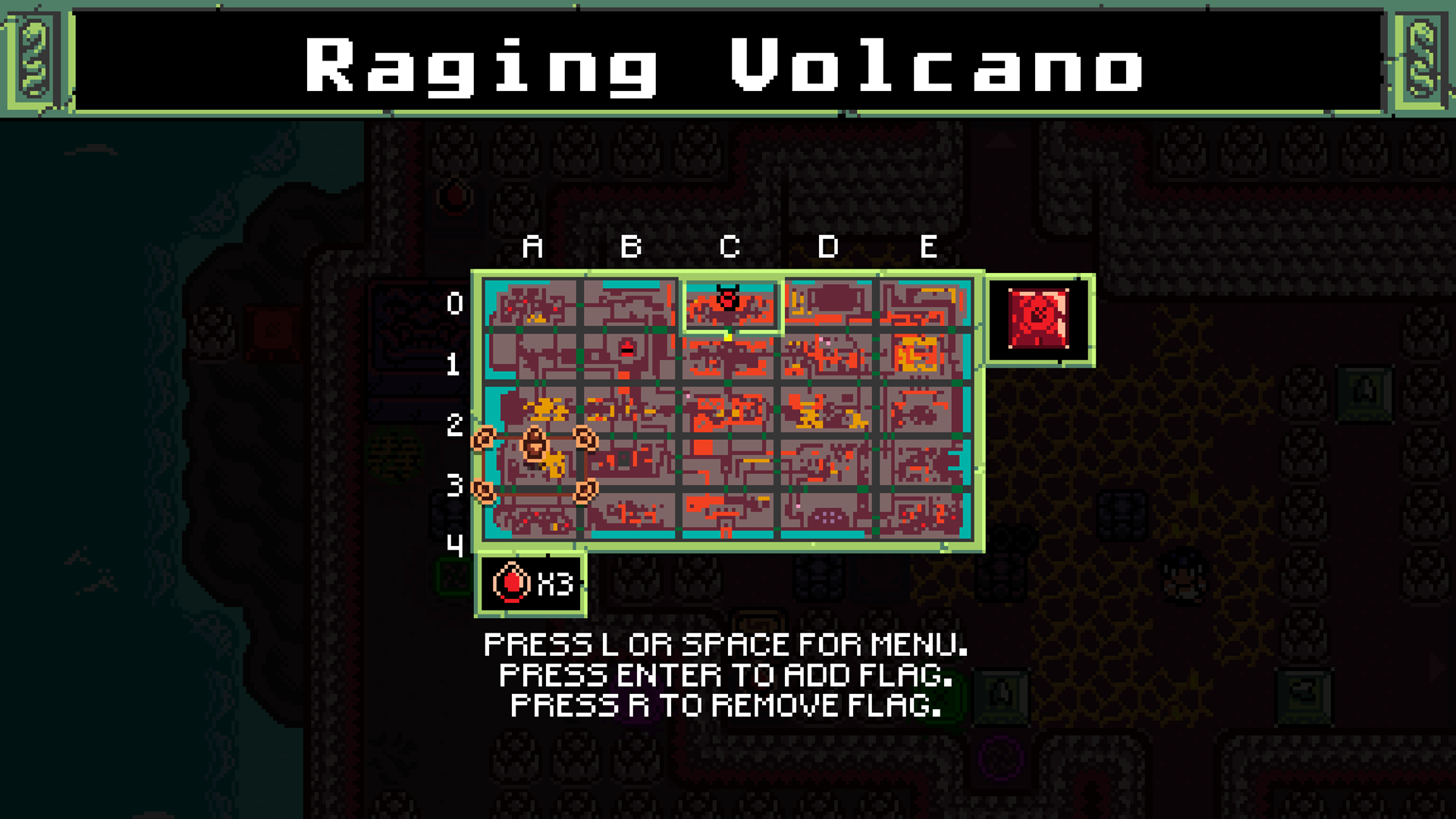
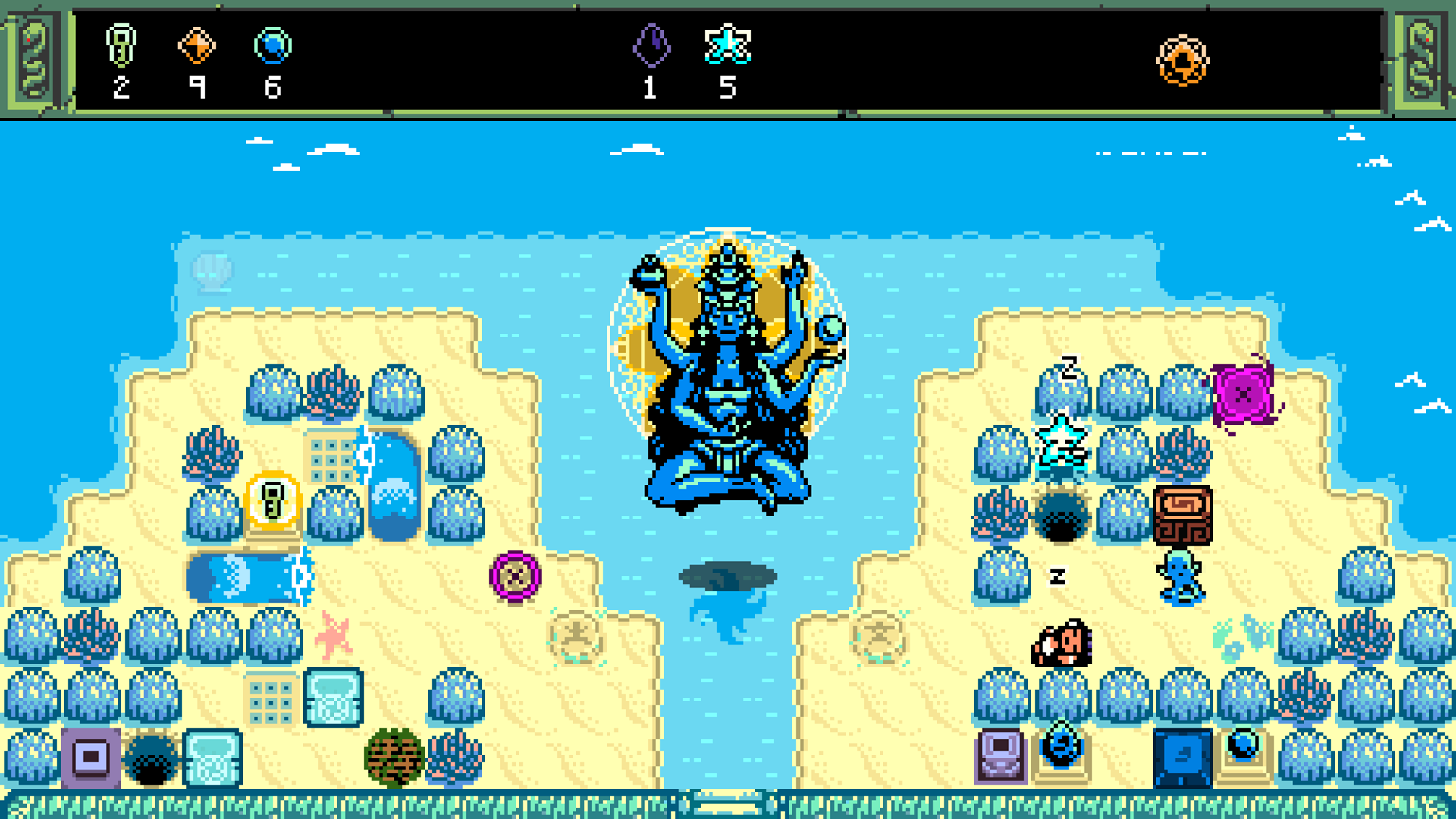
In the interest of full disclosure, VGamingNews was provided with a copy of the game in order to conduct this review.
Thanks for taking the time to read our review. If you’d like to support us further, please consider buying us a coffee!
OTXO
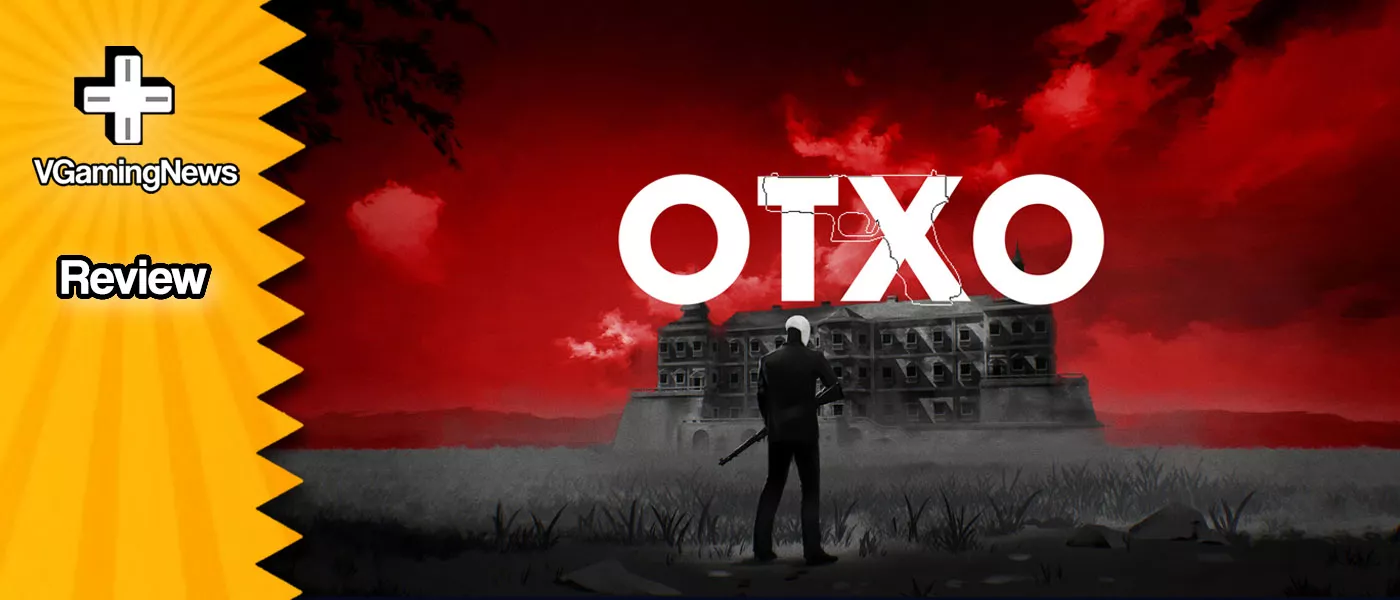

I love the monochrome look – it’s stylish in a way that’s simply timeless. Crisp black on pure white will never not be cool. You know what’s cooler though? Black and white with a slosh of colour – especially when that colour is blood red… Think Sin City or MadWorld and you’ve got it right.
Lateralis Heavy Industries clearly got this memo when they put together their twin-stick shooter, OTXO, which certainly splashes plenty of red across that stylish black and white canvas. Released as a Super Rare Original on PC last year, OTXO makes its way to PlayStation and Nintendo Switch this week, and we were keen to finally pull the trigger on a review we’ve had in the chamber since it launched on Steam almost 12 months ago.
OTXO opens with a couple sitting in a subway car, minding their own business when a stranger alights and drops a strange mask on the floor. Inexplicably choosing to put the mask on, the man is torn from his lover and awakens on a mysterious beach overlooked by a foreboding mansion. You’re told that there’s no way to leave and that you can’t truly die whilst wearing the mask – the only way to escape is to reach the heart of the mansion and rescue your beloved. But to do that, you’ll have to shoot your way through room after room of homicidal maniacs who are armed to the teeth and all looking to protect the mansion.
At A Glance
OTXO 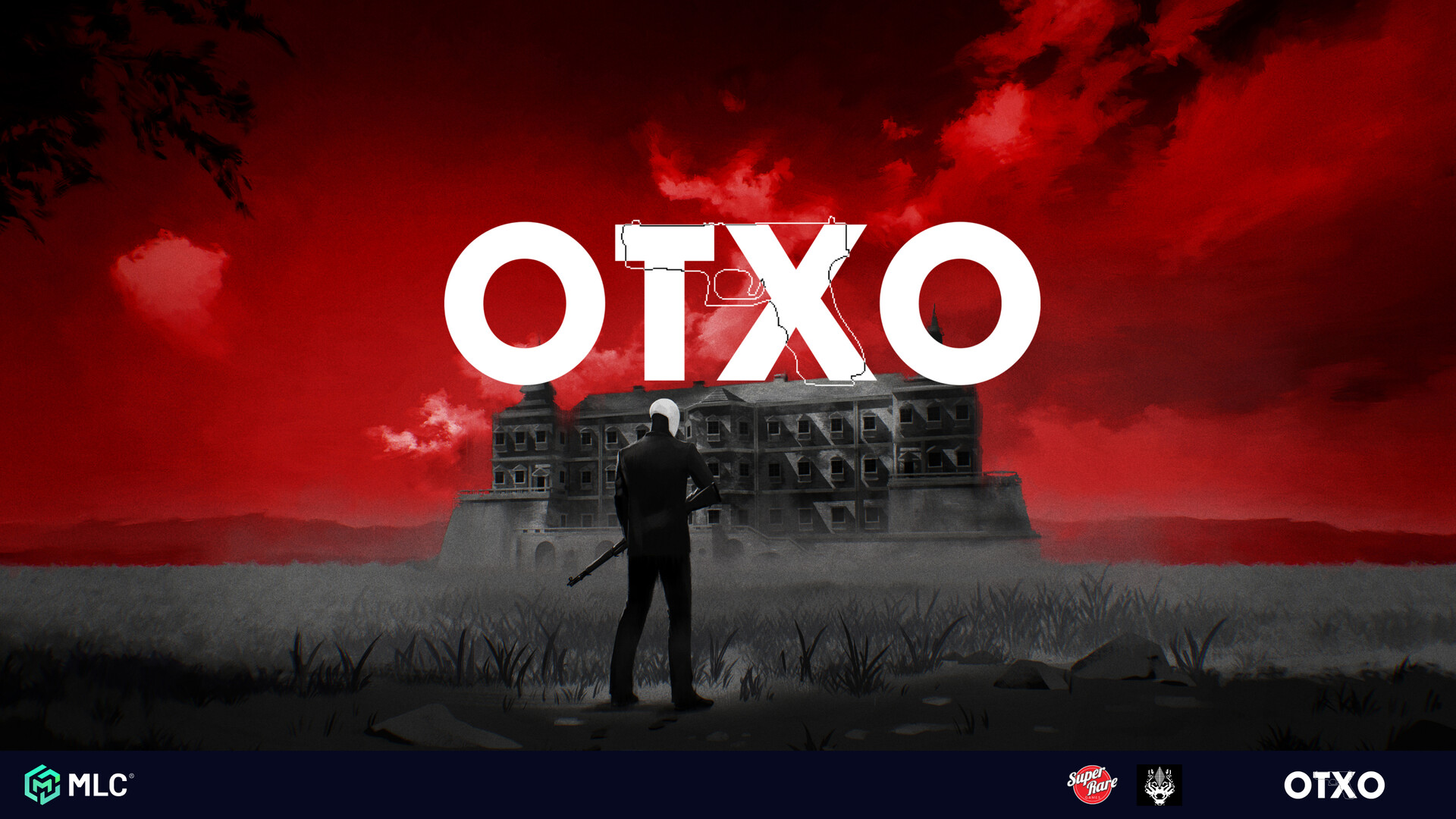 |
|
|---|---|
+ Quick-twitch, pick-up-and-play action |
Positives |
Negatives |
– No long game |
Overall |
6 /10 |
Played On |
PC |
Also Available On |
Nintendo Switch, PS5, PS4 |
While there is an obscure story to OTXO, it’s more about the hands-on gameplay, which requires you to shoot the hell out of all the bad guys on each floor before moving on to the next. Each floor is broken up into a number of rooms, with groups of goons patrolling each – the mission is simple – just kick the door in, put your guns to work, rinse and repeat. But since ammo in your weapons is limited to just two full clips, once all your rounds are spent, you’ll have to discard your gun and snatch one up from a fallen enemy, meaning you’ll have to master multiple weapon types as you fight your way to the heart of the house. Killing enemies in quick succession is encouraged, as this raises your combo meter which will reward you with more coins per kill; you can later spend your cash on drinks at the bar, which offer you temporary upgrades to your stats and weapons, as well as a myriad of other effects. When you fall short (notice that’s ‘when’ not ‘if’), you’ll be thrown back to the beach to begin your run again.
The gameplay is incredibly fast – like, bullet out of a gun fast. Once you boot down that door and open up line of sight with the goons on the other side, you’ll be swarmed from all sides and pumped full of hot lead in a matter of moments. Honestly, it caught me by surprise just how fast things could go sideways in OTXO, and I routinely found myself respawning on the beach more quickly than I like to admit early on. Underscoring the gameplay is a heavy duty techno soundtrack that perfectly mimics the fast-paced and brutal action. It takes mere moments for the music to take hold of you, and you’ll immediately feel in perfect synergy with your shotgun-wielding lunatic on a revenge mission. There’s something guttural about it – the music is overflowing with vengeance. It’s psychotic, and it’s excellent.
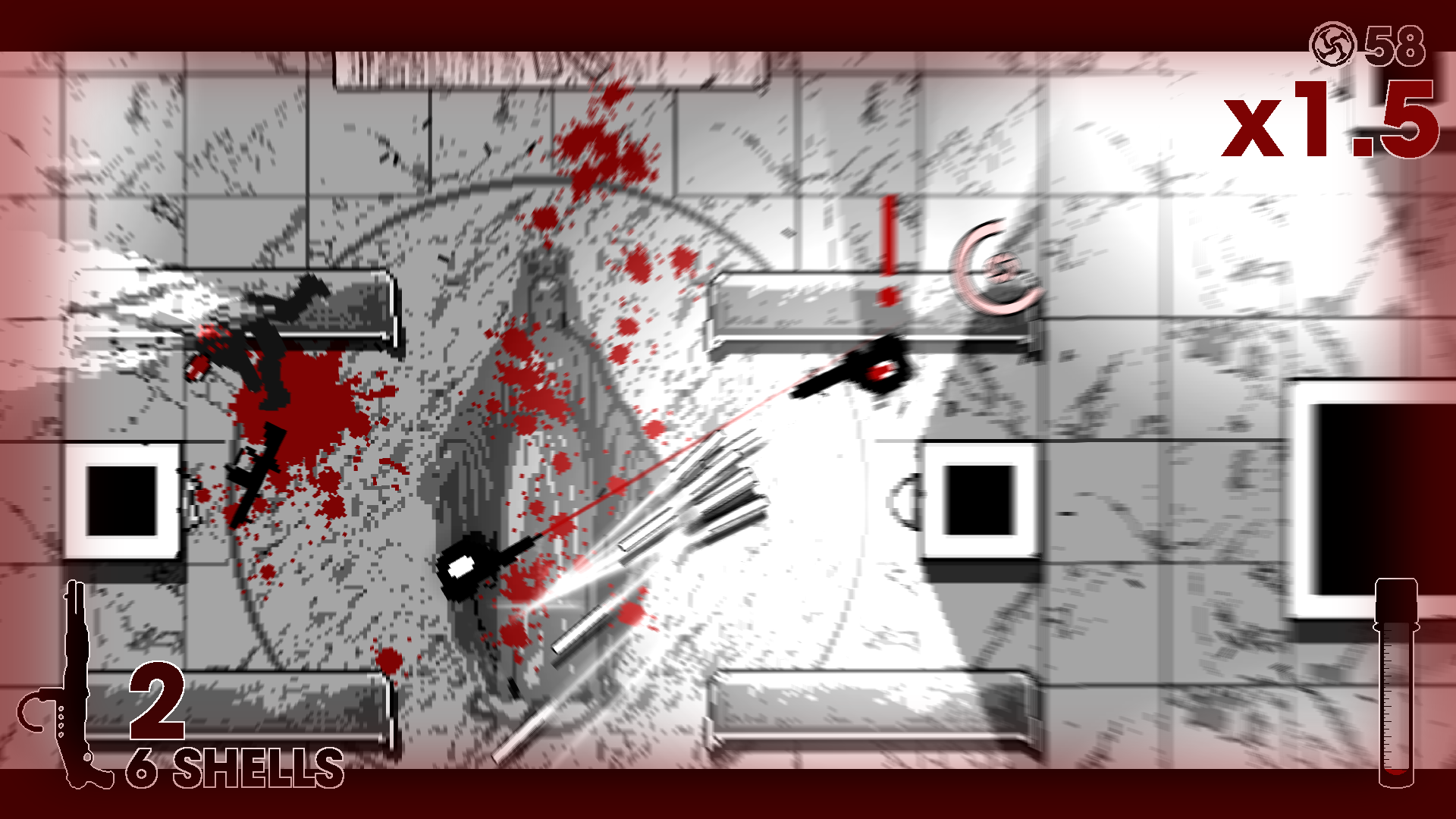
Thankfully, you have a trick up your sleeve to help you even the odds, and that’s in the Max Payne-inspired slo-mo skill called Focus. Slowing the world down makes things much more manageable and helps you wade through tonnes of baddies without taking so much as a scratch, though you can only employ this for a few seconds at a time. For players less concerned with racking up a high combo count and more worried about staying alive, it’s incredibly tempting to hang around in between rooms for your Focus to replenish before kicking down the next door. Focus really is a powerful equaliser to the frenetic pace of the enemies, and by presenting players with high difficulty fights alongside this powerful, time-limited skill, it acts as something of a killshot to the speed of the gameplay – encouraging you to actually go more slowly and not more quickly. Since the main driver is to kill as many dudes as possible as fast as you can, it would have made more sense to have kills replenish your Focus, or to have it recharge a set amount based on your last combo score, though I admit that would undoubtedly ramp up the already high difficulty to an all new level. It’s nothing world ending, but it does feel rather counterintuitive.
Visually, OTXO takes a top-down pixel art approach that will immediately conjure up comparisons to Dennaton Games’ Hotline Miami, but instead of being bombarded with the leary colours of the 80s, you’re instead treated to that aforementioned monochrome look. It won’t be long before that clean black and white look is thoroughly splattered with blood stains though, and the simplicity of the style is incredibly striking. OTXO wins a lot more style points than you’d expect from just cursory glances at the screenshots, though it isn’t without its drawbacks, as some of the detail is tricky to discern and the white outlines of weapons can be particularly difficult to make out, especially when under fire.
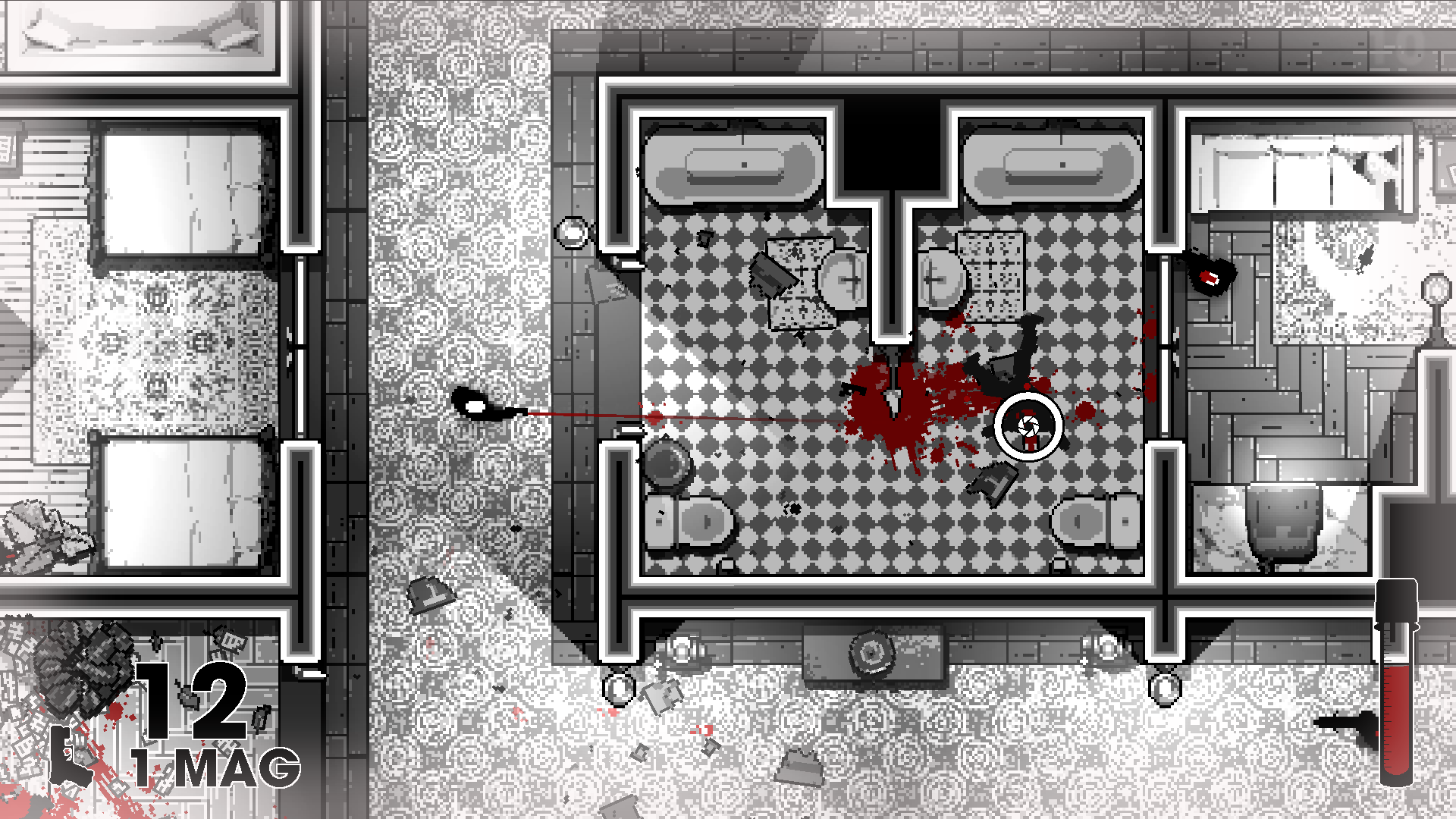
OTXO is sold as “a violent top-down shooter with roguelite elements”, but if a roguelite is a watered down version of a roguelike, then I’d have to describe OTXO as a Diet Roguelite (or a Roguelite Max, if you’d prefer). Sure, you have the procedurally generated levels and you make multiple runs that often end in failure, but there’s one very key element missing from OTXO that would even qualify it as a roguelite in my book – the long game. For me, the quintessential feature of a roguelike (or -lite) is continually chipping away at the grand scheme of the game – unlocking new weapons or new characters; opening up additional upgrades, side quests or maybe even mini-games, all to give you the feeling that you’re making overall progress through each successive run, even if they individually don’t amount to much.
OTXO misses the mark here, and each run feels very much a standalone affair -it’s a ‘shit-or-bust’ scenario- it’s just win or lose, with nothing new opening up as you continue to play. It’s true that you can spend a bunch of coins to unlock potential new drinks in successive runs, but since those are randomised each time (and some of them are of little-to-no use anyway), you’re not really offered any long term encouragement to keep going. In that sense, I actually liken OTXO much more to an arcade shooter from back in the day, where you keep playing for the sense of pride in saying that you finally finished the game, rather than any intrinsic mechanic that makes it beneficial for you to play over and over again.
I will admit that I kinda suck at OTXO, but I did enjoy stalking room-to-room and shredding countless baddies, at least while each run lasted. After I inevitably made a silly mistake -like forgetting to reload before bursting through a door, or missing the broad side of a barn and having my Focus run out- and being utterly wasted, I found it tough to get excited to start a fresh run again right away. With no long term progression to stoke the need to keep going, OTXO struggles to turn repetition into addiction, which is a shame.
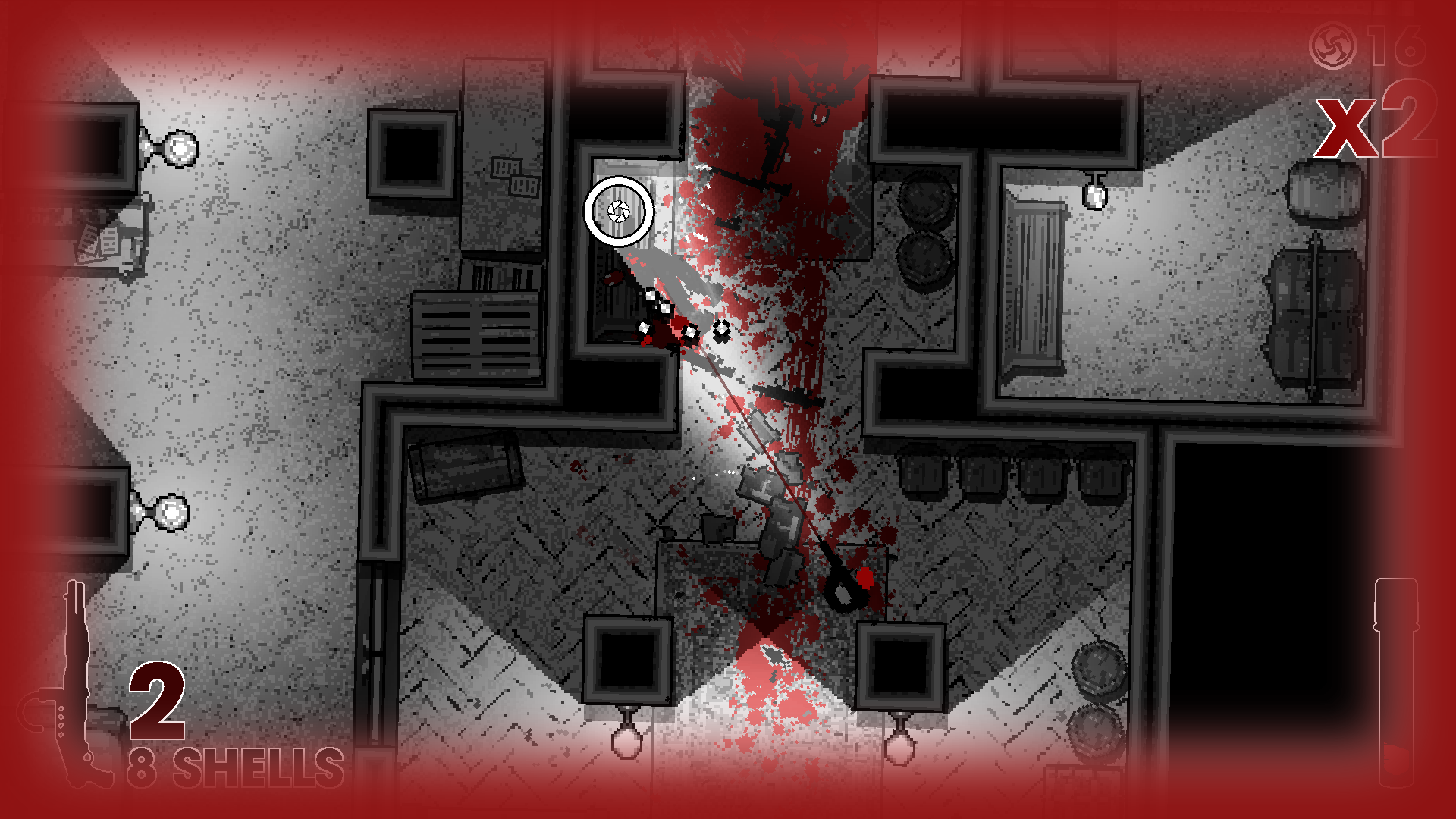
But in short bursts, OTXO is great fun – in fact, I think the release on Nintendo Switch might just be the secret sauce the twin-stick noir needs to really flourish. Booting up the Switch in the passenger seat of the car, on the bus or on the train, and blasting away at a bunch of goons until you get clipped or reach your destination is a perfect way to enjoy the short-but-sweet gameplay loop. You can fit in a few runs and enjoy getting somewhere before likely needing to start all over again by the start of your next commute. Or perhaps if you get stuck on Xenoblade or Tears of the Kingdom, you can fire up OTXO and gank a few fools to let off some steam without having to worry about getting caught up in two long term projects. (And speaking of Steam, OTXO is Steam Deck certified, so would work as an equally good distraction for the handheld-evolved PC Master Race among us.)
All told, OTXO is quicker than a muzzle flash, offering rapid-fire twin-stick action that is seriously intense. Wrapped in a cool monochrome package and splashed heavily with the blood of your enemies, what it lacks in visual clarity it more than makes up for with an impressive sense of style. The gameplay isn’t built for lasting impressions though; with no long-game to speak of, it’s strictly a ‘how far can you get this time’ affair that harkens back to the arcade shooters of the 80s and 90s. Best enjoyed as a run or two in between more meaty experiences, OTXO is perfect for the Nintendo Switch or the Steam Deck, where you can wile away short commutes with a hail of bullets before slipping your machine back in its holster, ready to let rip again at a moments notice.
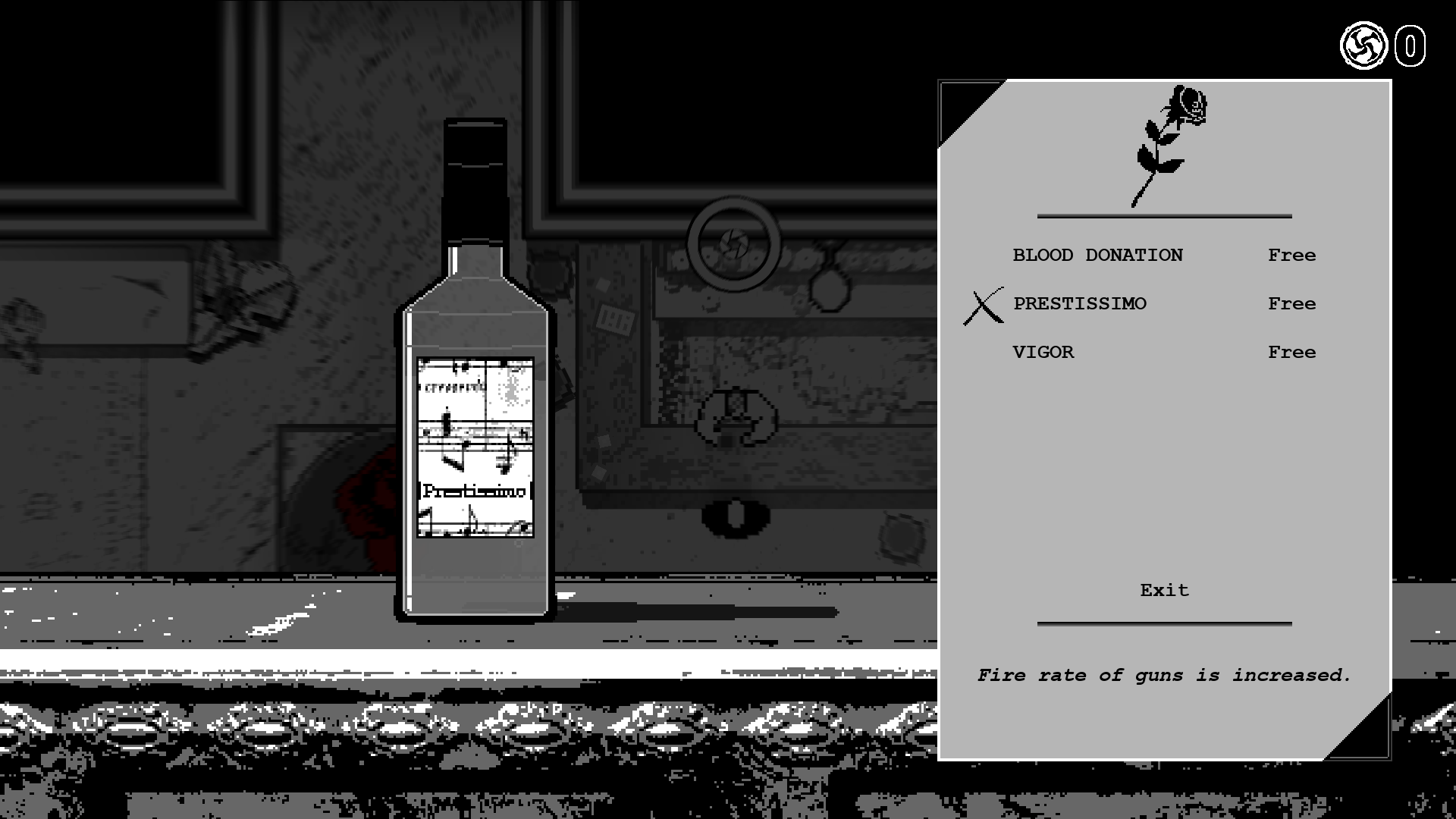
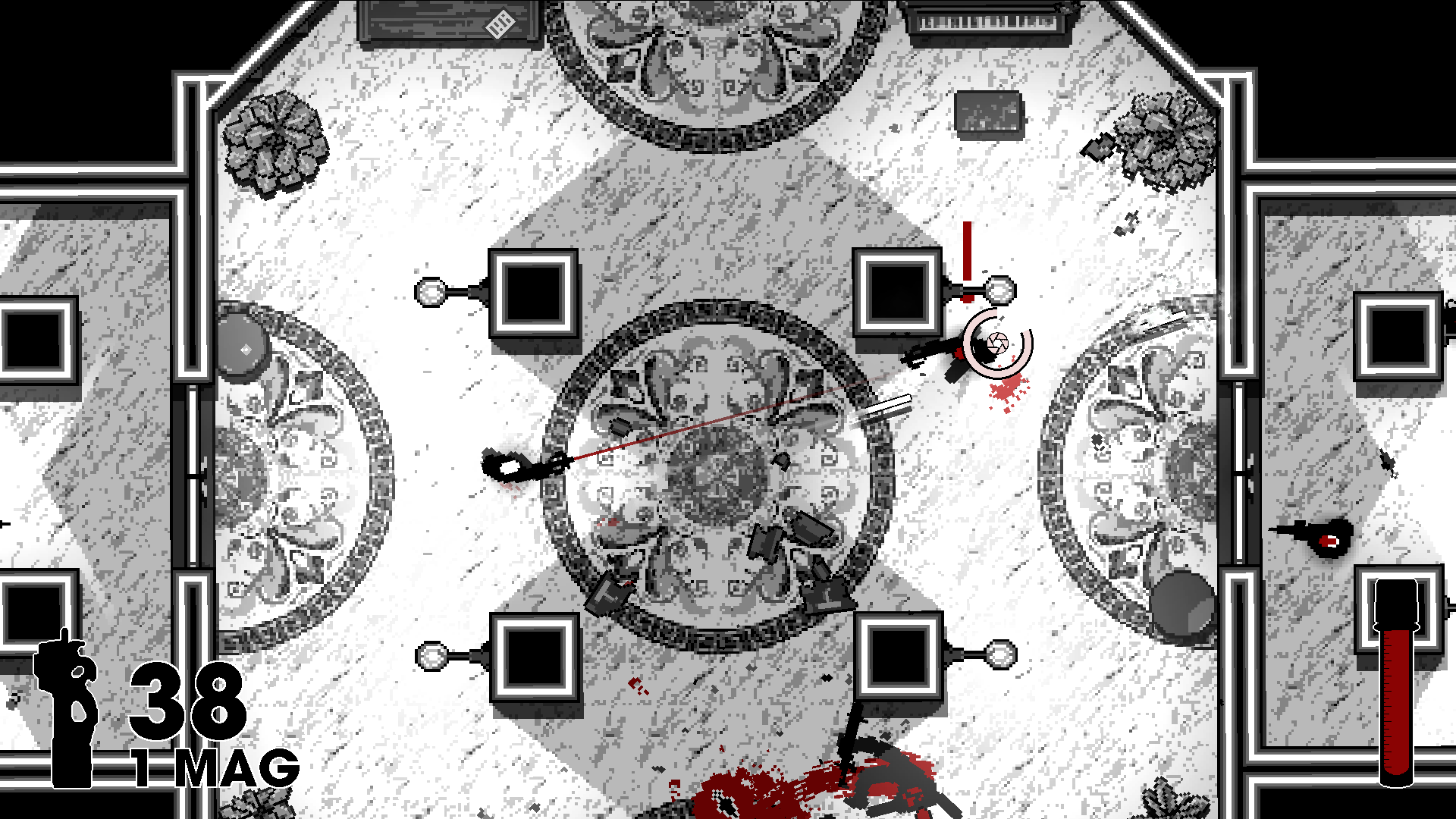
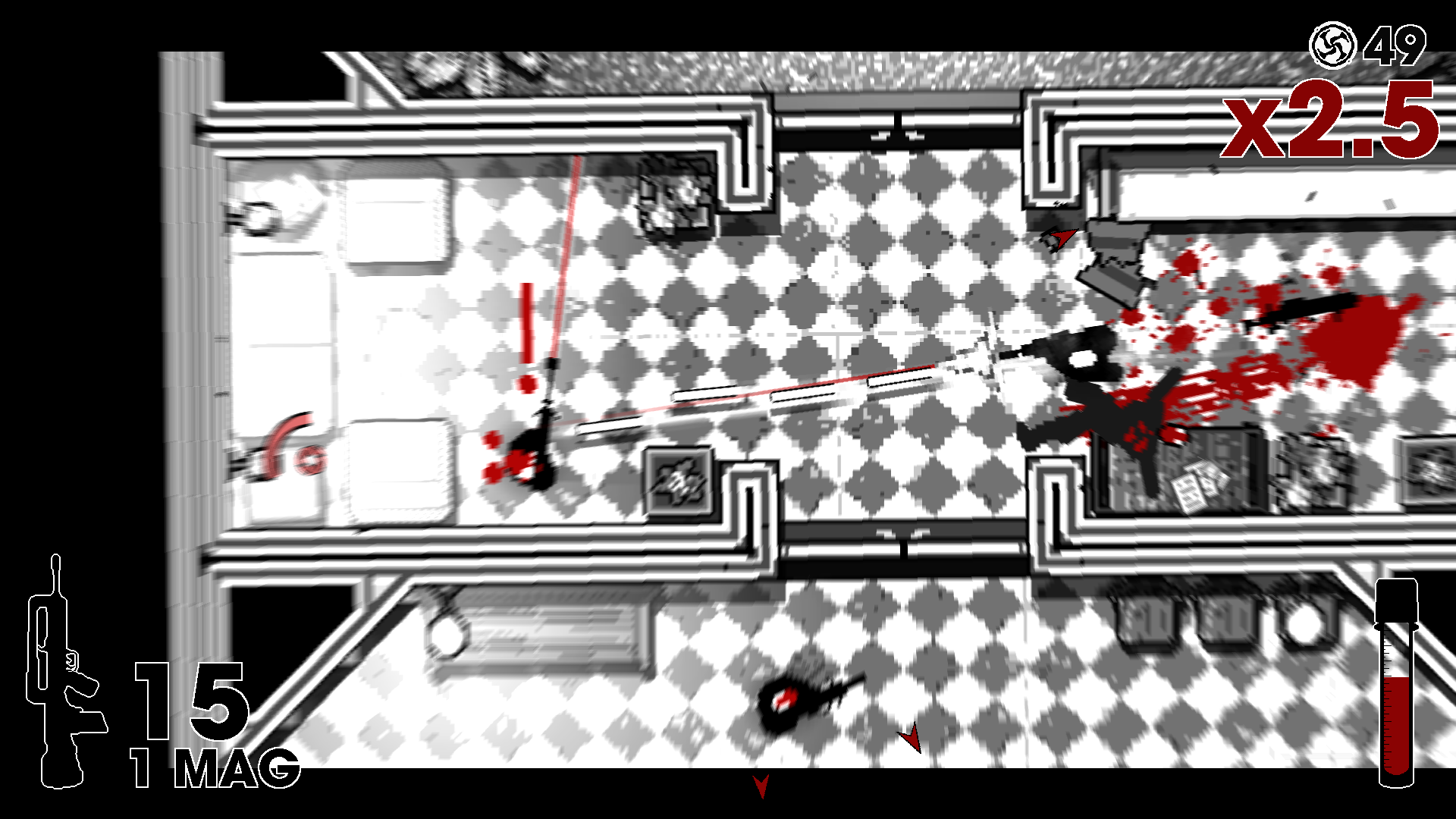
In the interest of full disclosure, VGamingNews was provided with a copy of the game in order to conduct this review.
Thanks for taking the time to read our review. If you’d like to support us further, please consider buying us a coffee!
Hawked
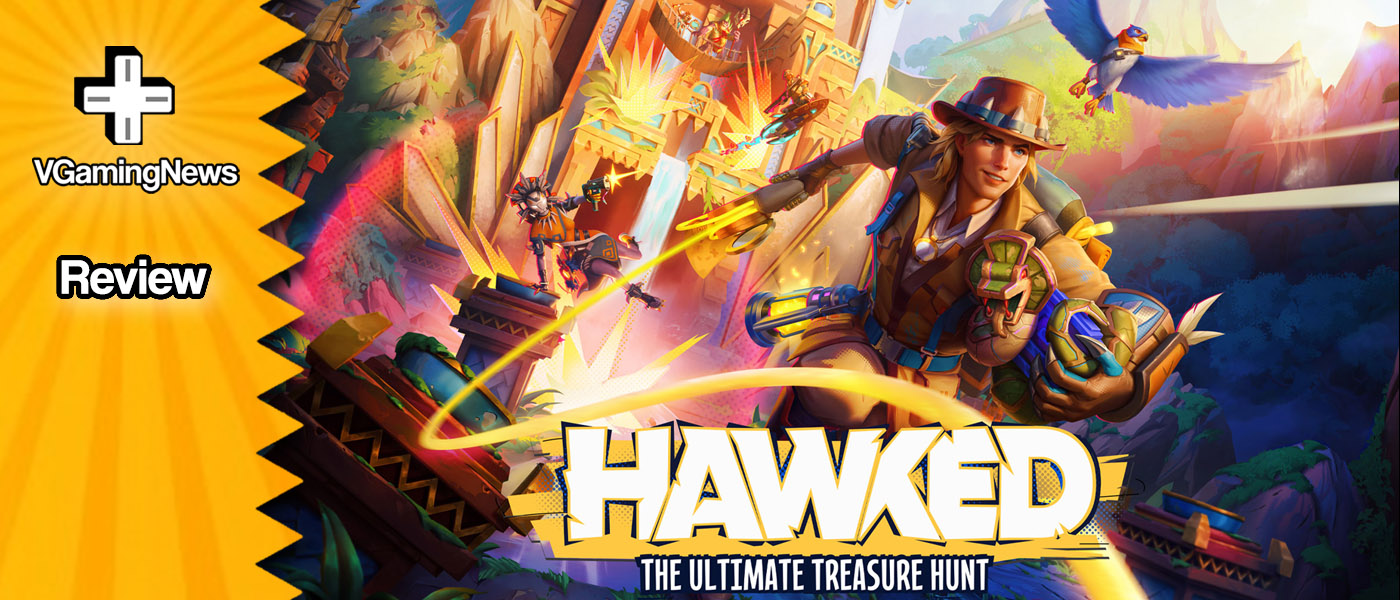

Everyone loves a good treasure hunt, whether it’s in its simplest form of your mum hiding your easter eggs around the garden, or plundering bountiful booty after battling a mighty kraken, as you retrieve Athena’s Fortune (shout out to Sea of Thieves for letting me live out my pirate-based dreams). It’s not just the thrill of the hunt; it’s the adventure, the mystery, the peril, and most importantly, the shiny things we collect along the way.
So, when a game comes along that tries to combine the aspects of a tasty treasure hunt, whilst also being a competitive shooter, I had to give it a try. Hawked is a free to play, PvPvE third-person extraction shooter – a genre of game I’ve never really heard of before but seems to be growing in popularity. Two big examples when thinking about it would be Escape from Tarkov and Deep Rock Galactic. The premise essentially being: jump into the arena, collect a bunch of valuable shite, and get the hell out without dying. Developed by MY.GAMES and self-published alongside The Four Winds Entertainment, Hawked is a game that has potential, but in its current state, doesn’t quite feel that X marks the spot.
This is an abridged version of my video review, which we’ve embedded below.
Welcome to X-Isle, a dangerous and excellently named island, home to a lost civilization whose temples, ruins, and treasures still cover the land. Along comes GRAIL, a fun and friendly mega-corporation who are particularly interested in said treasure. The trouble is, so are a faction of monsters called the Disciples, and this is where you come in. As part of a ragtag bunch called Renegades, you’re essentially a hired gun whose main task is to retrieve as many artefacts and relics as you can. Character customisation is simple with few options to pick, but oddly vast in the colours you can apply to your skin and hair. Fun if you’re making weird and wacky, distinct looking models, but annoying if you’re aiming for a particular colour and are mentally challenged when it comes to colour saturation and contrast.
At A Glance
Hawked  |
|
|---|---|
+ TREASURE! Fresh take for an extraction shooter |
Positives |
Negatives |
– Little in game content/ranking system, for now |
Overall |
6 /10 |
Played On |
PC |
Also Available On |
Xbox Series X|S |
As a concept it’s great, PvP along with PvE invites different play styles by either allowing the player to solve puzzles to get the treasure and escape, or allow someone else to do all the hard work and camp the extraction point. In reality it’s not so great, as the matchmaking in my experience has been poor. I’ll either be on an island with only 3 players, where it all feels rather empty and they play like bots, or with 20 players that are all Elmer Fudd, and it’s wabbit season.
There is a voice chat feature clearly intended to not only coordinate fights with your team, but to also solve the puzzles together. Again, an interesting feature, except the puzzles are really straightforward and simple to do alone, and there currently isn’t that much variation to them. When you are in a solo queue, you can also easily get ganked if you’re not paying attention to your little radio telling you when someone is close by.
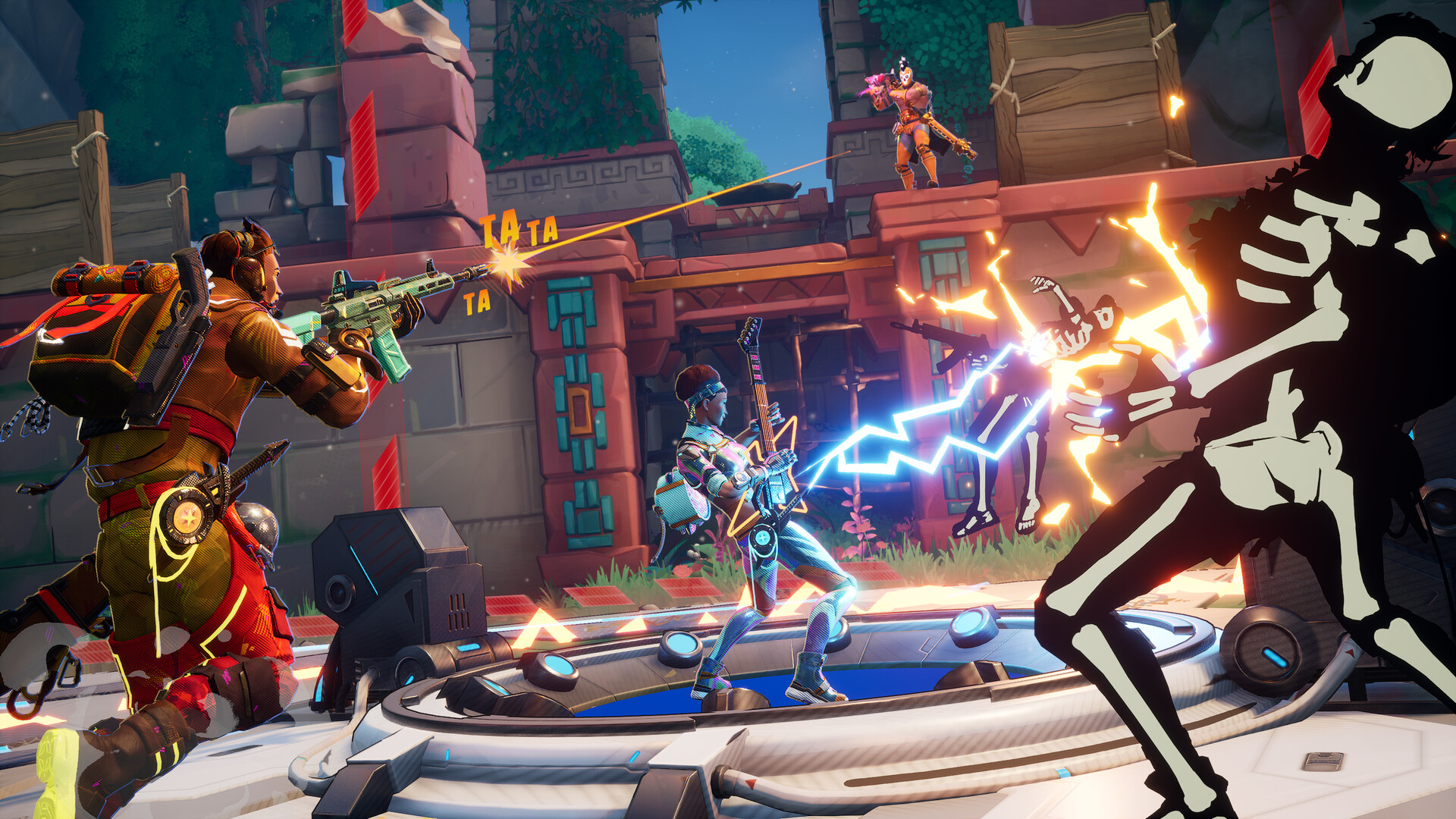
It was a rollercoaster of emotions playing Hawked, which in fairness mostly came from my wife adding to the intensity of the situation. Grabbing the artefact which puts the ‘X’ on your back on the map, led to her running around the living room yelling “Go go! Get to the extraction point!”. Killing a player and swiping their artefact meant I got the nod of approval and a cup of tea. Getting killed by someone and losing the artefact, however, meant I got laughed at incessantly, being made fun of for getting killed by a 7-year-old boy. It all really plays havoc with one’s self esteem.
Visually, Hawked is rather appealing; you immediately get that Fortnite meets Borderlands aesthetic which I quite like. Everything feels quirky and it doesn’t take itself too seriously, which also comes across in some of its dialogue. Speaking to characters can feel somewhat jarring though, as the camera shifts quite abruptly between each line of text. Each time you enter X-Isle, the environment is rich with foliage, water features, structures, and traps. Quick, fluid movement is encouraged, with a hoverboard to traverse over water, grappling hooks and ropes to ascend areas, ziplines to descend and pole vaulting to get across large gaps. This not only makes for fun traversal, but also interesting gun fights.
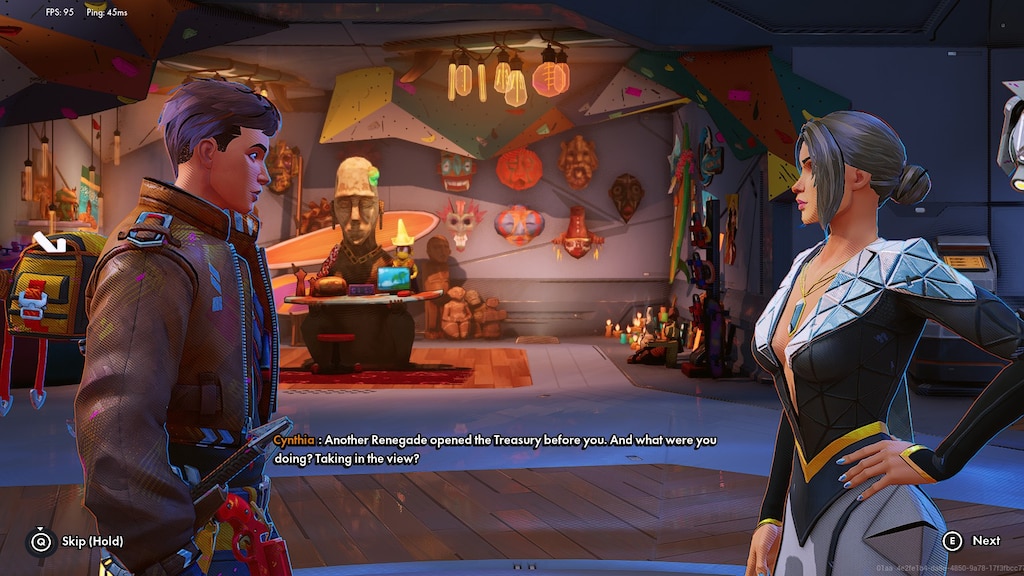
You spend your time between games in the GRAIL submarine called the Riftwake, which serves as your Hub. Here you can buy, sell, and upgrade gear. Familiarise yourself with the mods and weapons from the island, and practise with each of them at the firing range. Customise your loadout and character cosmetics. And last and most certainly least, check out GRAIL+ and the Renegade Pass, which cater as the subscription service for what I feel is a crazy sum of cash for what you get. The artefacts you retrieve from each run aren’t just for show, each can be used to provide special and unique abilities which you can swap and upgrade on your loadout. These offer movement, offensive and defensive enhancements.
I spent my time in X-Isle on the Xbox Series X. It did occasionally feel glitchy, there were points I had to reload the game due to quests not completing. Depending on your platform, I’ve also read servers can be an issue so simply getting any gametime at all can be difficult. Full cross-play is supported, but cross progression is not.
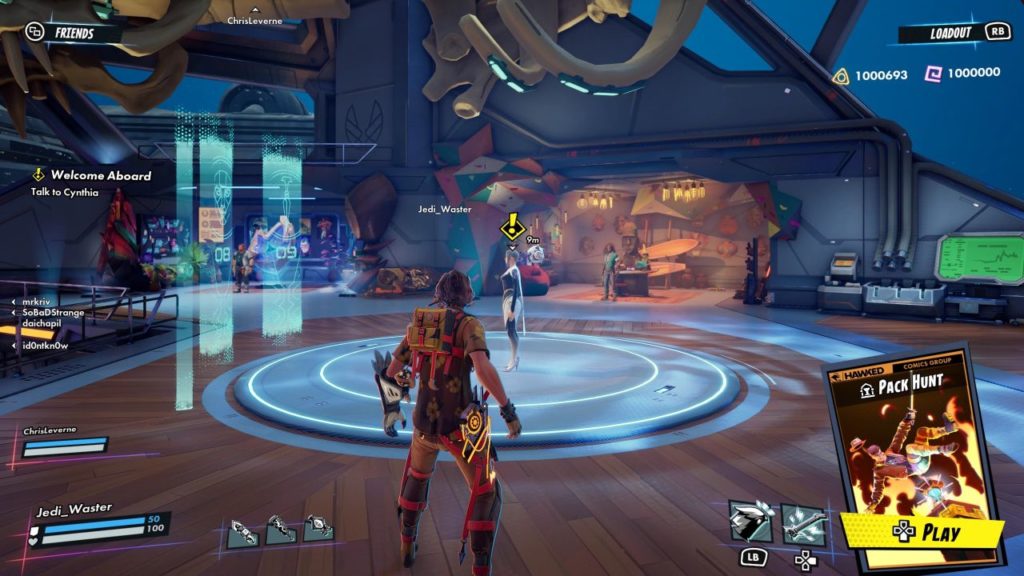
At the end of the day, I think there is a lot of potential here. Hawked isn’t a polished game in its current state, but there are some interesting mechanics and features to be built upon. There isn’t much in the way of in-game content or ranking system currently, but again this seems to be in the pipeline looking at the roadmap for this year, found on their website. Both story and content look to be released in parts as comic book issues, which I really like the concept of.
Hey, it’s free to play – download it and give it a go. Enjoyable alone and with friends, it’s a game you’ll jump in and out of as we watch this space. Right now it feels like it’s held back by its poor matchmaking and repetitive nature, due to its lack of content and variation. But in any case, it will be worth waiting to see what’s in store in the next issue of ‘GRAIL and the Renegades’.
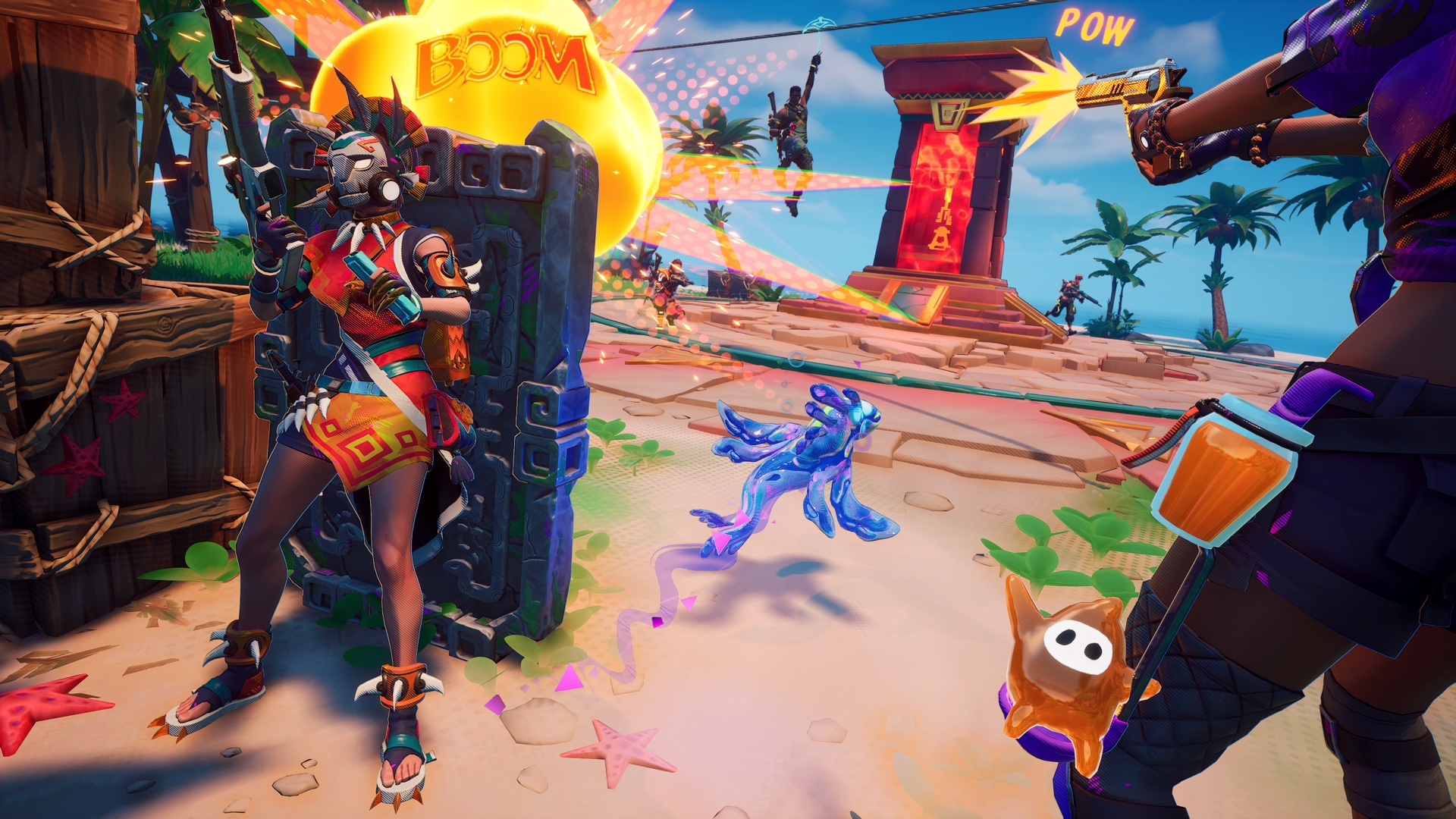
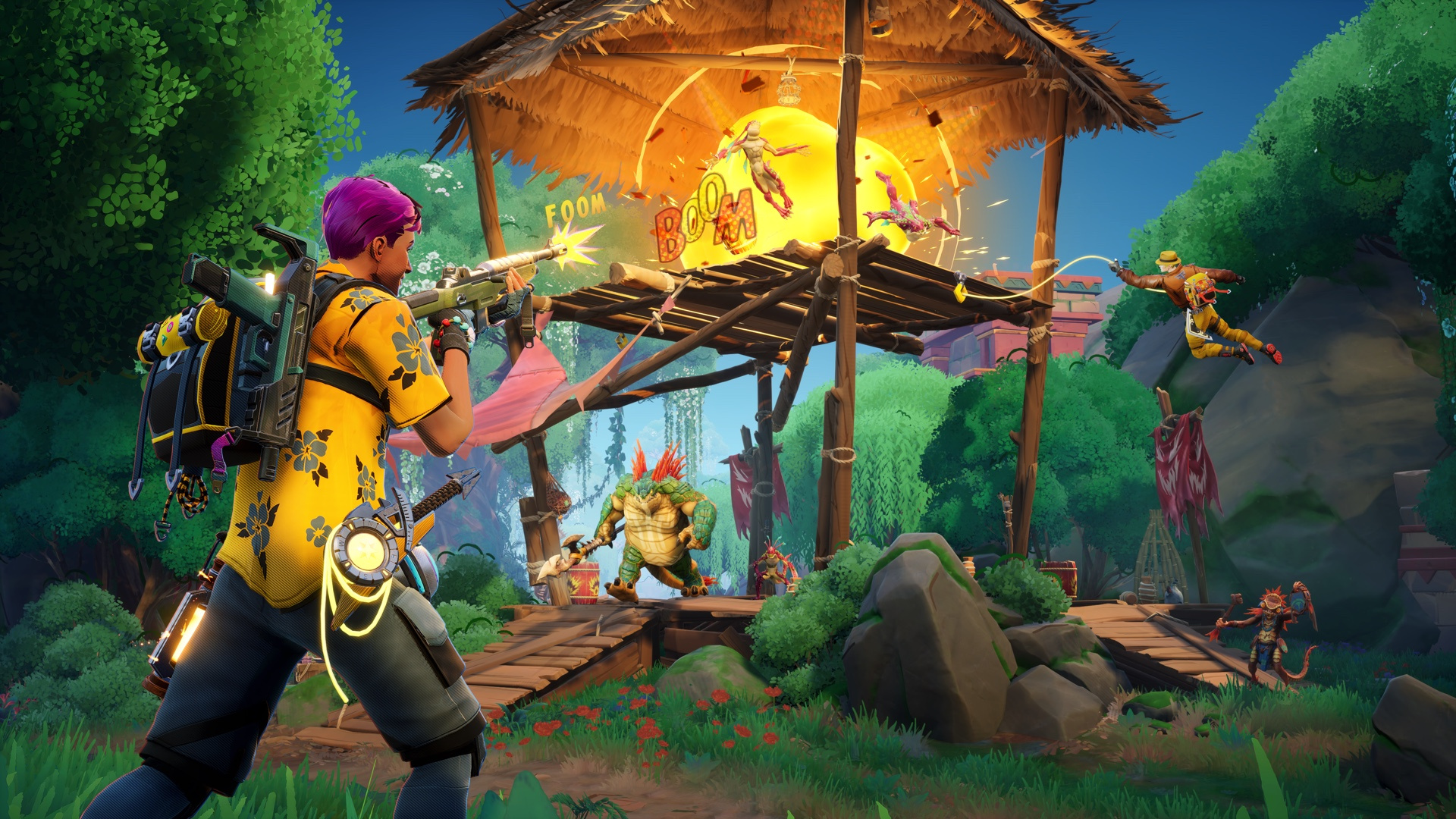
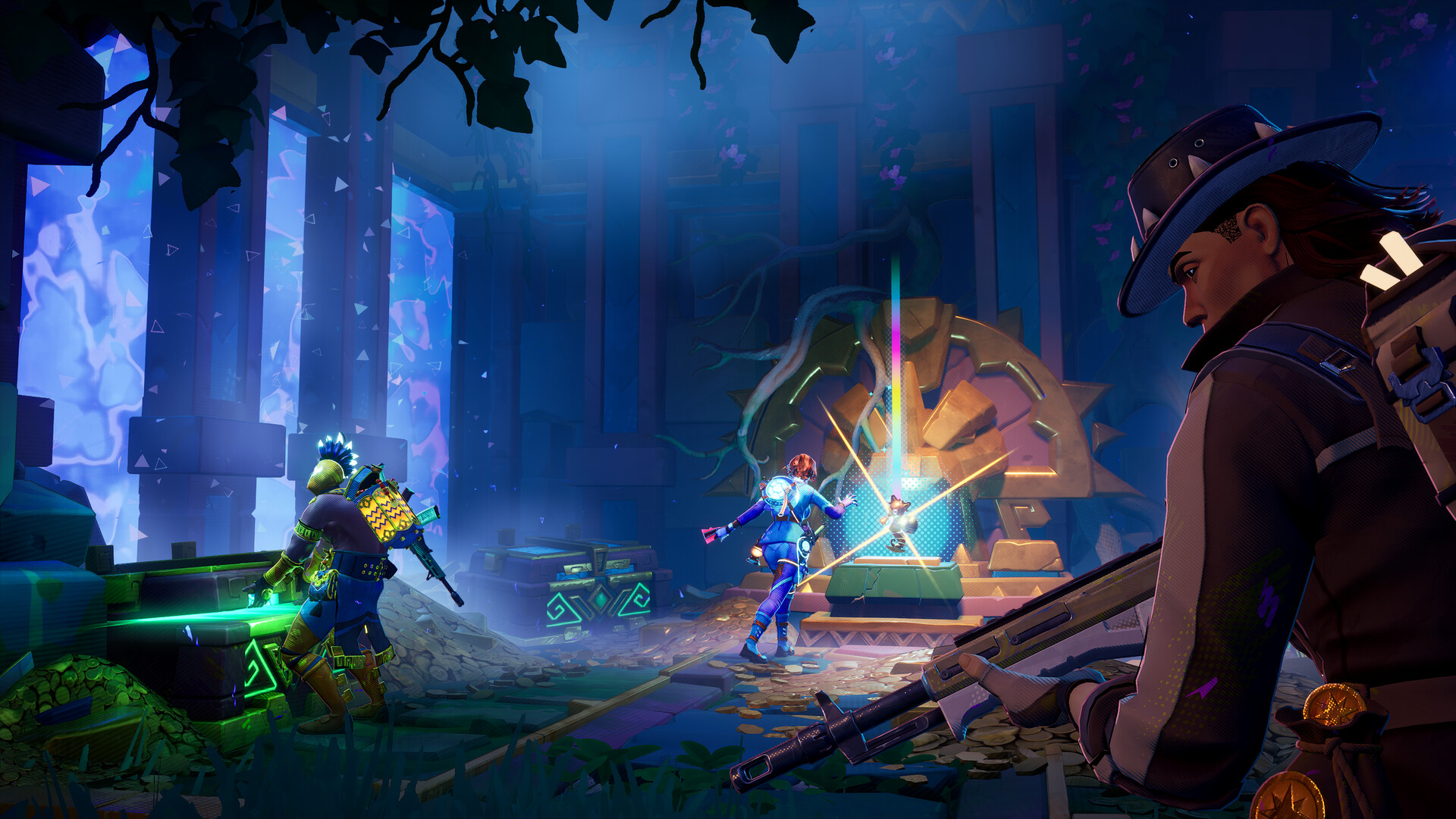
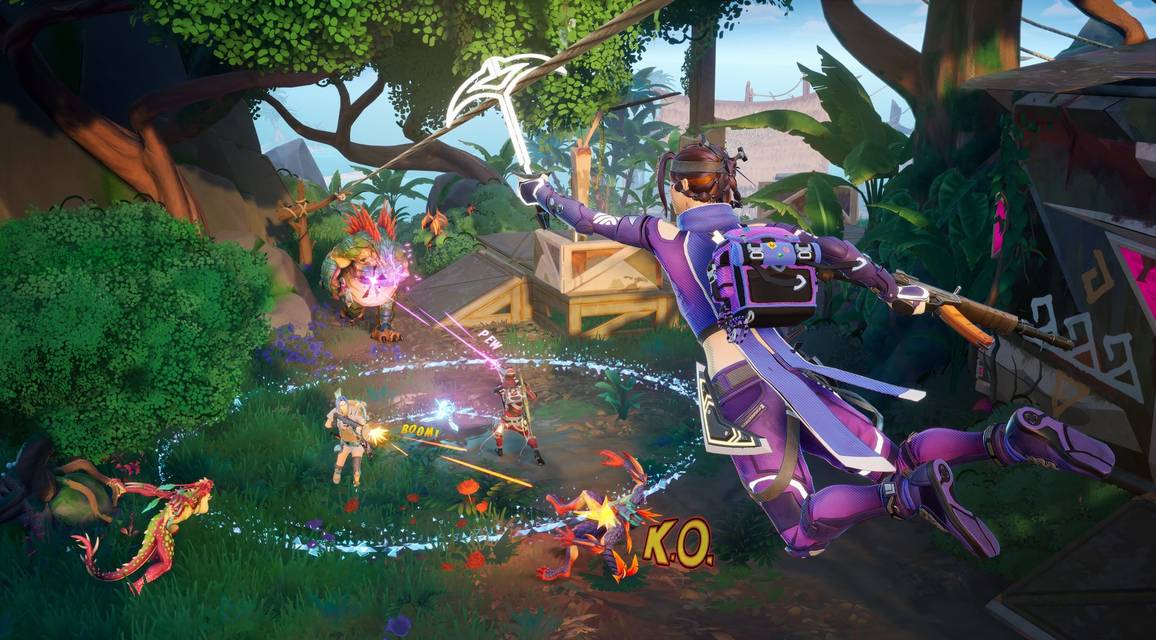
In the interest of full disclosure, VGamingNews was provided with a copy of the game in order to conduct this review.
Thanks for taking the time to read our review. If you’d like to support us further, please consider buying us a coffee!


